THIS IS THE RESEARCH LOG FOR MY MA PROJECT: please scroll down to follow my voyage... A couple of recent photos at the top but the main blog starts at the beginning of the project and the latest stuff is at the bottom.
SAIL AWAY WITH ME...
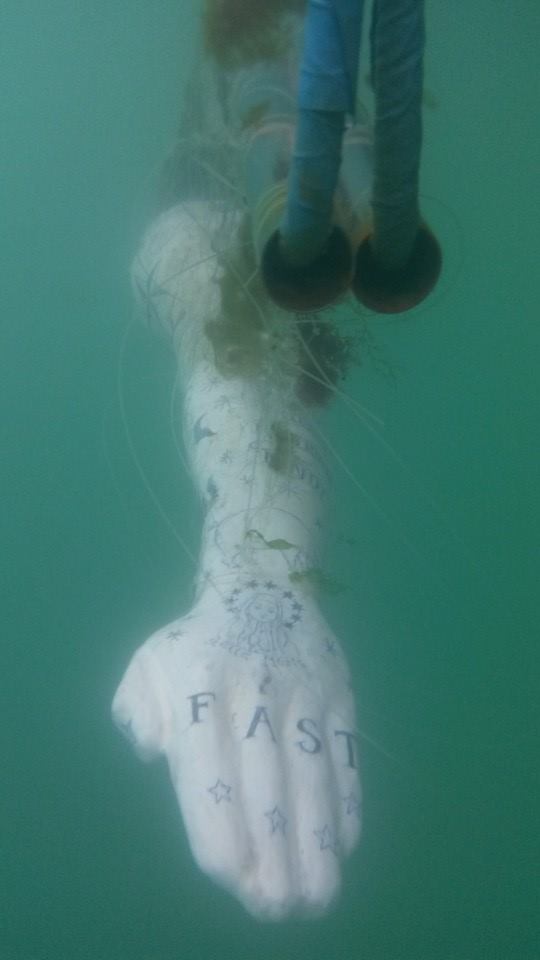
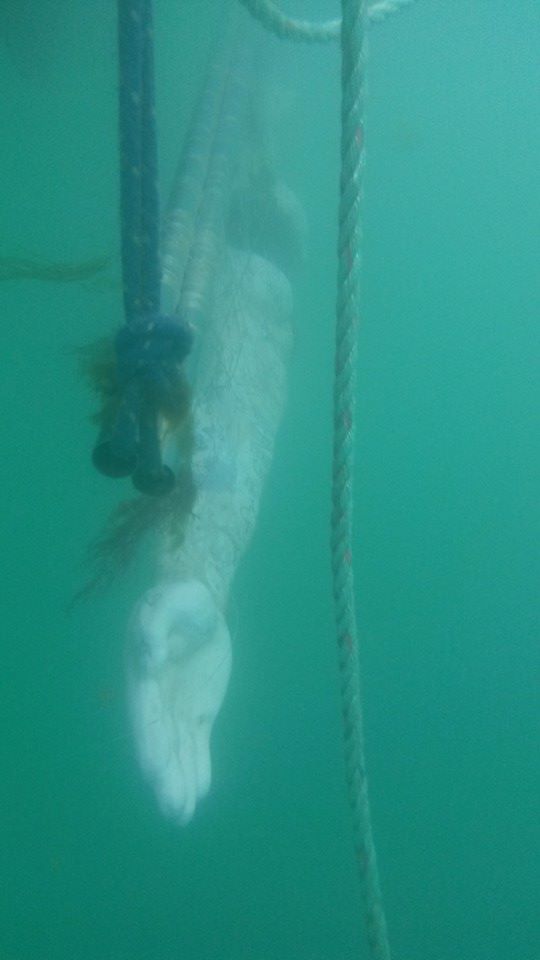
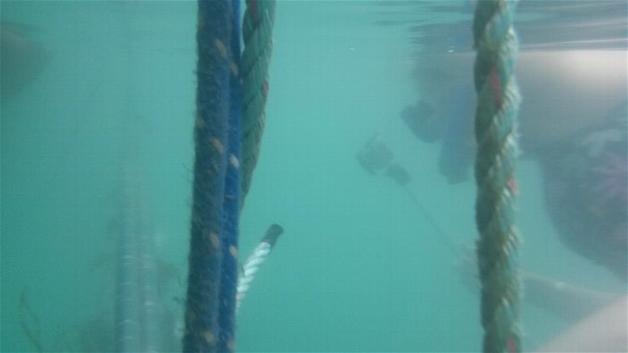
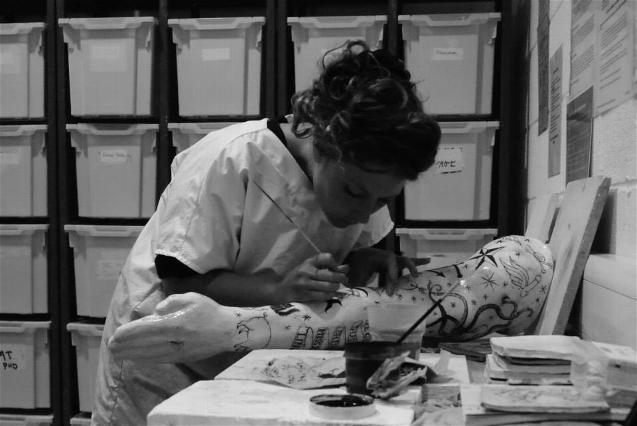
Books I have read, am reading or will read...
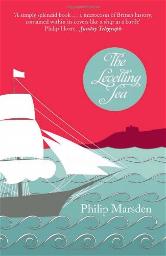
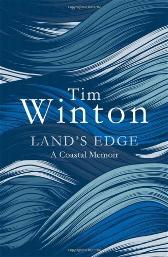
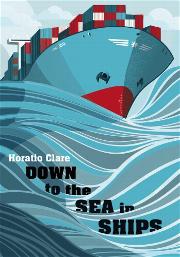
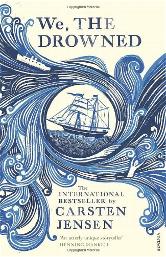
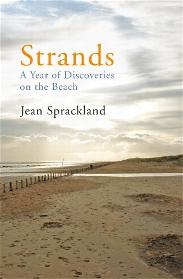
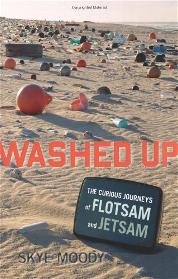
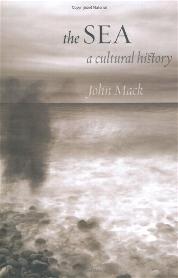
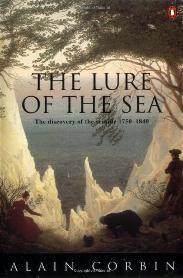
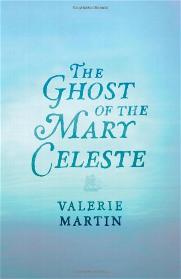
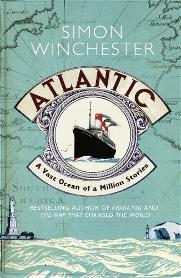
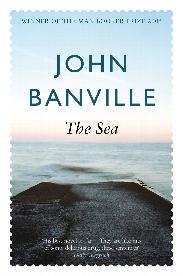
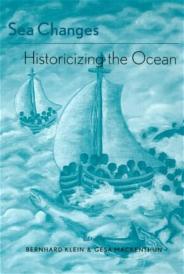
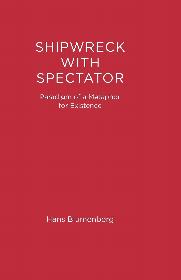

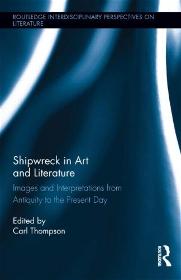
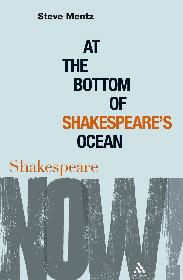
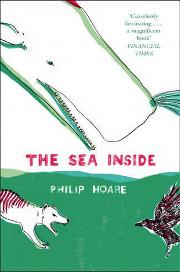
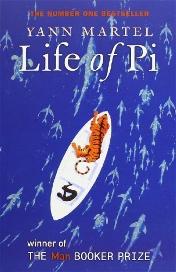
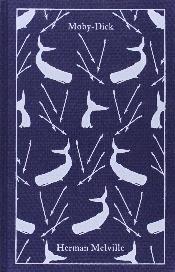
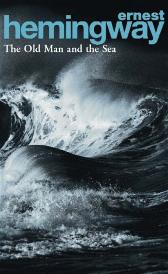
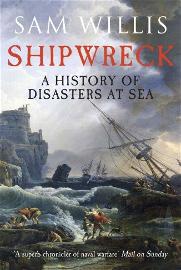
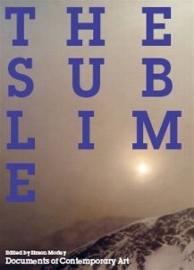
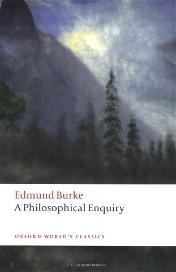
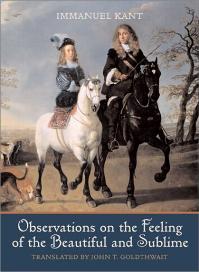

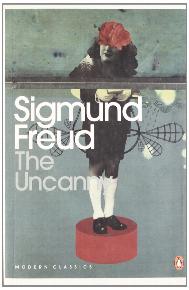
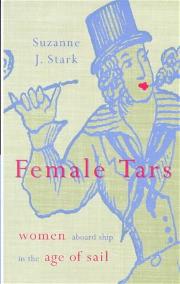
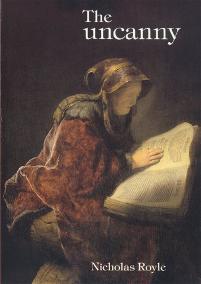
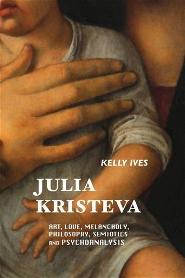
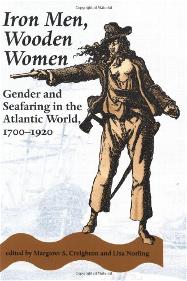
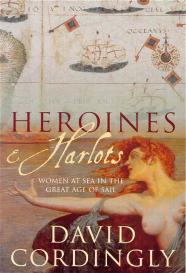
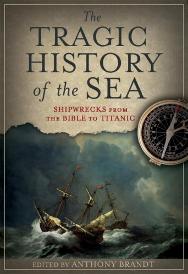
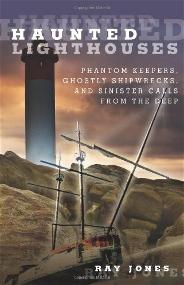
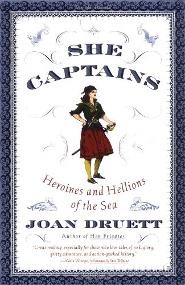
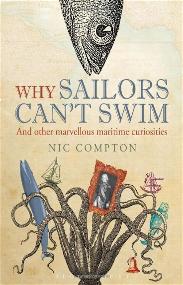
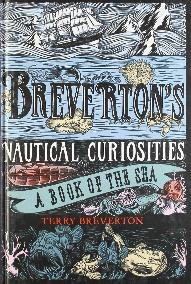
As idle as a painted ship Upon a painted ocean - The Rhyme of the Ancient Mariner, Samuel Taylor Coleridge
Ships are the nearest things to dreams that hands have ever made, for somewhere deep in their oaken hearts the soul of a song is laid.
~Robert N. Rose
We therefore commit his body to the deep, to be
turned into corruption, looking for the resurrection of
the body (when the Sea shall give up her dead).
Forms of Prayer to be Used at Sea At the Burial of their Dead at Sea
If a man must be obsessed by something, I suppose a boat is as good as anything, perhaps a bit better than most. A small sailing craft is not only beautiful, it is seductive and full of strange promise and the hint of trouble. If it happens to be an auxiliary cruising boat, it is without question the most compact and ingenious arrangement for living ever devised by the restless mind of man--a home that is stable without being stationary, shaped less like a box than like a fish or a girl, and in which the homeowner can remove his daily affairs as far from shore as he has the nerve to take them, close hauled or running free--parlor, bedroom, and bath, suspended and alive.
~E. B. White (I would of course add 'or woman!')
Whenever I find myself growing grim about the mouth;
whenever it is a damp, drizzly November in my soul;
whenever I find myself involuntarily pausing before coffin warehouses, and bringing up the rear of every funeral I meet...
I account it high time to get to sea as soon as I can.
~Herman Melville from Moby Dick
The desire to build a house is the tired wish of a man content thenceforward with a single anchorage. The desire to build a boat is the desire of youth, unwilling yet to accept the idea of a final resting place.”
~Arthur Ransome
They that go down to the sea in ships, that do business in great waters, these see the works of the Lord and his wonders in the deep.
~Bible, Psalms 107:23-24
I have been lucky enough to grow up sailing, not posh yacht sailing, more messing about in boats in muddy creeks with occasional jollys out to sea. One of my very first memories is of being on my Mum and Dad's little old Gaffer, moored just off Blackpool Sands (Devon) and accidentally dropping into the sea a shard of pink and white china 'treasure' I had found on the beach. I must have been 4 at the most and I distinctly remember watching it disappear into the blue deep, knowing I had lost what I had found.
Here are some words and terms I think I am thinking about:
NOSTALGIA, ROMANCE, FAILURE, SHIPS, THE SEA, WRECKS, DIRT, DECAY, BEAUTY, RELICS, RELIGION, ATHEISM, RITUAL, PAST, PRESENT, WHIMSY, ART, CRAFT, GENDER, SEWING, PATHOS, BATHOS, SUBLIME, DOMESTIC, SCALE, WORK, FABRIC, LOW-TECH, HIGH-TECH, SELF, PAINT, MUD, FIRE, ASH, REMAINS, WORDS, DEATH, HEROISM, SENTIMENTALITY, RIDICULOUSNESS, ABSURDITY, TEDDY BEARS, TATTOOS, SUPERSTITION, STRANGNESS, HEIMLICH, HOMELY, UN-HEIMLICH, UN-HOMELY, DREAMS, BED, STORMS, SWIMMING IN THE SEA, STORIES, SPINNING YARNS, FALMOUTH, DARTMOUTH,OLD MILL CREEK, RIVERS AND CREEKS, ROCKS, BEACHES, PUBS, BEACHCOMBING, HOME, TREASURE, NEEDLES, SAILORS, SEEDINESS, SAILS, CANVAS, ME.
Starting from literal shipwrecks I have sailed into metaphors (and cliches). Shipwrecks have been used as literary, philosophical, artistic, poetic and political metaphors since our earliest records, Pseudo Longinus and Homer offer famous examples, Shakespeare's plays are littered with shipwrecks, early sensationalist newspapers print images of shipwrecks and ship-wreck narratives, The Romantic poets and painters employ shipwrecks to convey The Sublime, and even today artists still respond to the theme.
The earliest known depiction of a shipwreck is on an ancient Greek vase. (this link to pottery is important for me)
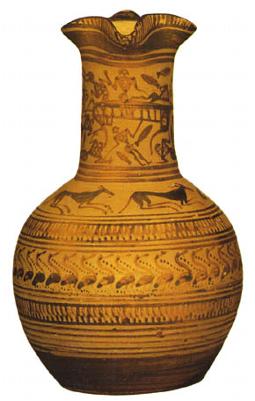
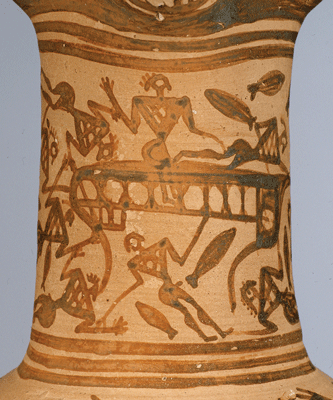
A scene said to be depicting Odysseus being shipwrecked
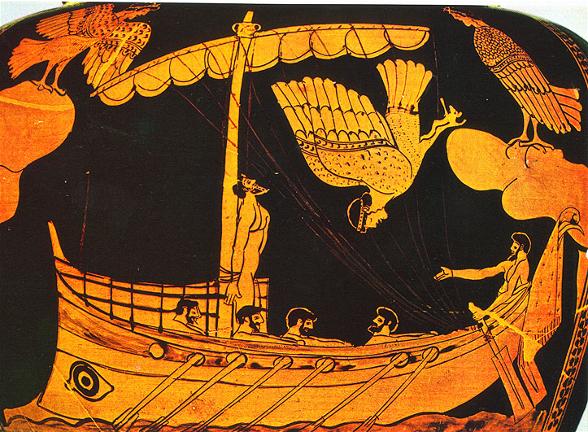
Another later pottery depiction of Odysseus lashed to the mast, inspiration for maritime artists Vernet and Turner? The sea is the real siren that calls mostly men and some women away.
Often we confront an actual historic shipwreck there may be no ship, just wreck; boats and bodies rot away so what is left is metal, stone, glass and china. The domestic space of a ship's hull is torn apart and the innards are spilt onto the sea-bed. The result is an un-heimlich image of the domestic in a very un-domestic place. The ordinary becomes extraordinary. These bits of china, if salvaged become desirable and pricey relics. Relics of disaster and tragedy but also romance and the sublime.
Central to this project is the concept of us, ships and the sea all being 'bodies' and that the perception of ships and the sea as being personified beings.
Sexuality and the sea, whether the sea is male or female or both? The sea as a place of mutability, a liminal space where limits are lifted. Shipwreck and immersion as magical events that have the power to allow a suspension of norms and the rational. A sublime event, a terrifying event, but in the imagination a pleasurably thrilling one.
WORDS AND TERMS: UNCANNY. UNHEIMLICH, SUBLIME, ABSURD, ADVENTURE, TRAGEDY, PATHOS, BATHOS, DEEP, ABYSS, DOMESTIC/UNDOMESTIC, DEATH, DISASTER, MEMORIAL, REMAINS, ABSENCE, LOSS, ARCHAEOLOGY, TATTOOS, SHIPS, SUPERSTITION, RELIGION, GODS, SEX, TRANSGRESSION, POTTERY, CERAMICS, HERMAPHRODITES, SHAKESPEARE, SHANTIES, BEDS, SLEEP, DREAMS.
RELEVANT CONTEMPORARY ART
WOLFE VON LENKIEWICZ - THE RAFT OF THE MEDUSA AND THE SEA OF ICE 'MASH-UP' - PAINTING 2013
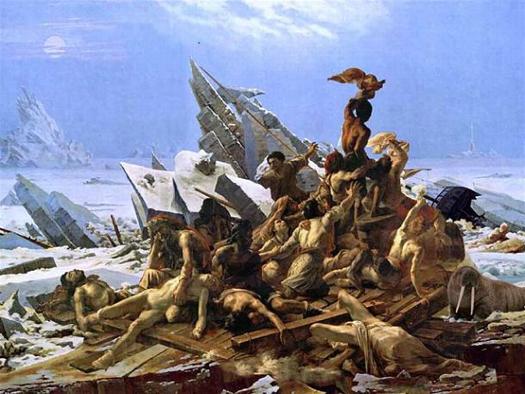
JOSH BECKMAN - SEA NYMPH - MACHINE PROJECTS - 2010 - LOS ANGELES
An installation of a 'shipwreck' in a gallery space.
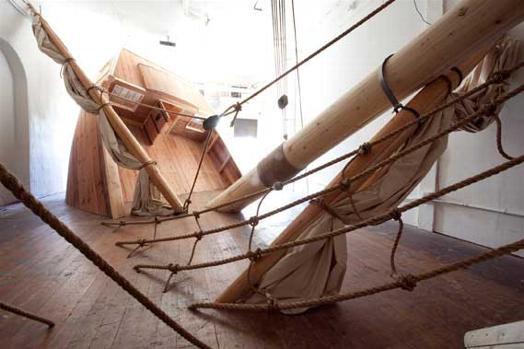
THOMAS HIRSCHHORN - CONCORDIA, CONCODIA - 2012 - GLADSTONE GALLERY - NEW YORK
Installation inspired by the photographs of the chaotic remains of the interior of the wrecked cruise ship; The Costa Concordia.
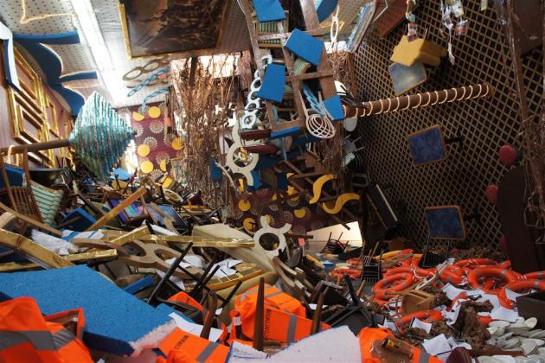
SIMON STARLING - AUTOXYLOPYROCYCLOBOROUS - SCOTLAND 2006
A wrecked boat is salvaged and then motored using a steam engine that is fed with wood from the boat till the boat sinks again.
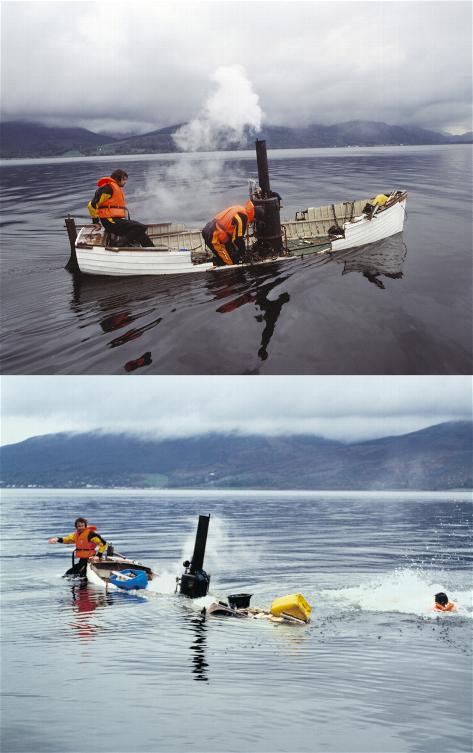
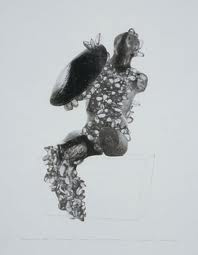
SIMON STARLING - INFESTATION PIECE - PROPOSAL COLLAGE
I really liked the collage and macquette proposal pieces exhibited in Aquatopia. I think they are very interesting and succeful examples of how proposal documentation can be art works in their own right.
In the 1960s Henry Moore was commissioned by The City of Toronto to create 'The Archer', a major piece of public art,' the local artists were unimpressed that a foreigner was being parachuted in. Moore's piece was inspired by finding a pebble on a beach.
Starling took the idea of foreign infestation as inspiration, both the perceived 'infestation' of the Canadian art world by English Moore and the ecological infestation of the non-native Zebra mussel into the Great Lakes, carried by ships. The effect has been drastic. Starling made a cast of Moore's piece in metal then immersed it in the Lake Water to grow mussels before removing it and exhibiting it.
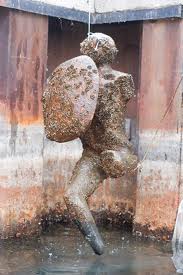
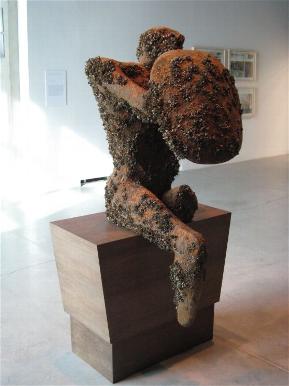
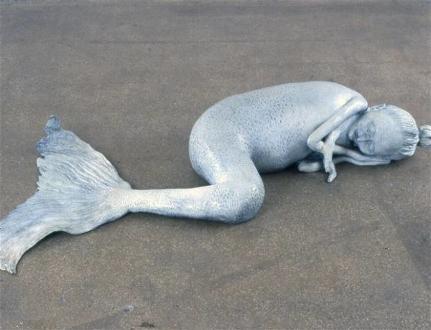
Liz Craft - Old Maid
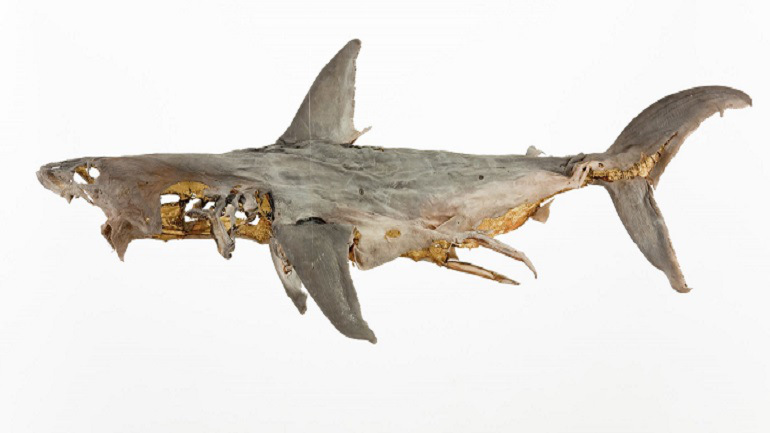
Dorothy Cross - Relic
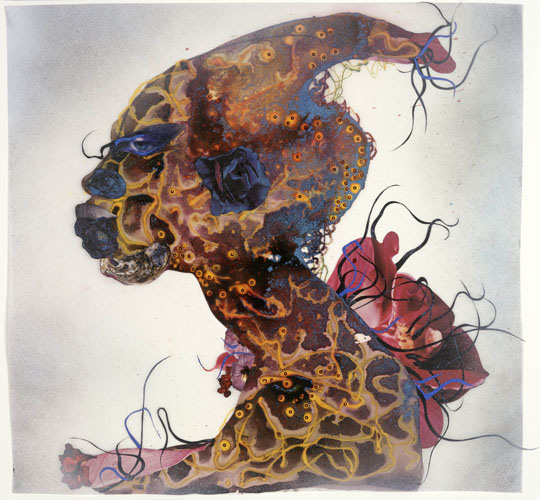
Wangechi Mutu - Blue Rose
BAS JAN ADER - IN SEARCH OF THE MIRACULOUS - 1975
As a performance piece Bas Jan Ader attempted to sail from Cape Cod in a 13ft 'yacht' called Ocean Wave,he was trying to reach Falmouth, he never did and the empty boat was found off Ireland by fishermen. The boat was later stolen and remains lost.
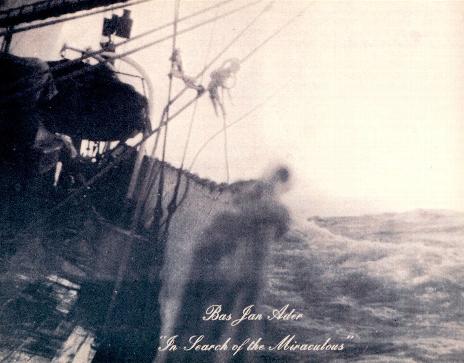
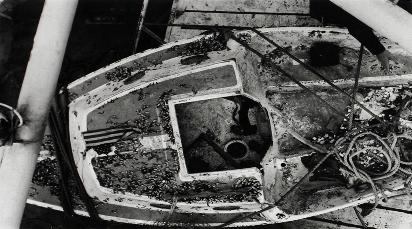
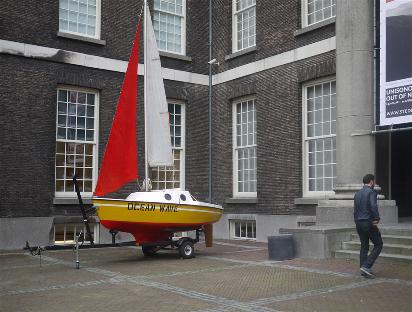
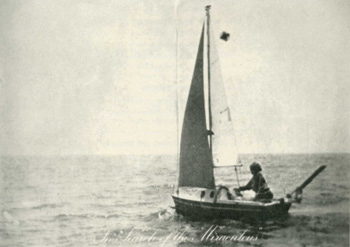
Ader's 'In Search of the Miraculous' is the ultimate celebration/lamentation of romantic, heroic, ridiculous failure and loss. His story seems to mirror that of the death of Percy Bysshe Shelley 1822 aged just 29. He drowned when his boat Ariel was wrecked in Italy.
ROSIE LEVENTON -
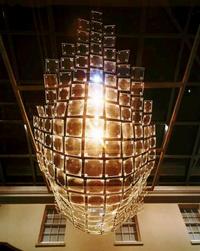
Glass, stainless steel cable, 1999
Absentee by Rosie LeventonAbsentee by Rosie Leventon, 1999. One of the highlights of the National Maritime Museum is the restored stern of the HMS Implacable. This French 74-gun ship was launched in 1800. After a chequered career in which she was captured after the Battle of Trafalgar and subsequently used as a Royal Navy vessel, a training ship and then a holiday home for boys, she was scuttled in 1949 off the Isle of Wight. All that remains is the salvaged stern and figurehead.
Rosie Leventon's sculpture pays tribute to the history of HMS Implacable. Absentee is a ghostly re-creation of the Implacable made from over a hundred pieces of glass attached together like chainmail: a ship that will never float. The sculpture is suspended from the glass roof of Neptune Court to form the shape of the historic ship, glistening as the light reflects off the many glass pieces. During the creation of the work, Leventon was particularly interested in the quality of light and space within the new architecture of the Museum that would house it. Her work registers things that are lost, hidden, forgotten, or have been destroyed and exist only in memory. This delicate work stands as a testimony to a lost past and the heritage represented by the Implacable.
http://www.rmg.co.uk/explore/art/new-visions/rosie-leventon-absentee
FORENSIC EVIDENCE
wood sculpture
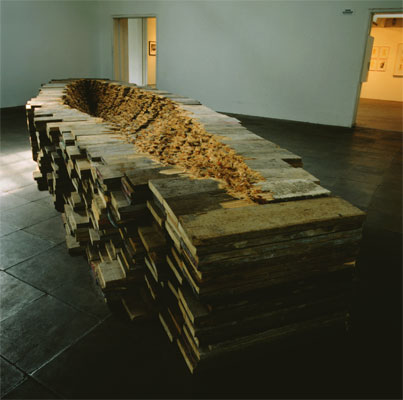
The material for this wood sculpture came free from a scaffolders who were discarding it. I used scaffolding boards which are used for temporary staging and floors built up on the sides of buildings as they seem appropriate to the layers of an archaeological site. There was about 3 tons of wood and, with some help from friends, we broke and splintered the edges of the boards, cut them and fixed them in stacks. This recycled sculpture was first shown at London's Serpentine gallery. The piece takes as its starting point the Sutton Hoo Burial ship which survived only as an impression in the sandy soil above the River Deben on a high escarpment in Suffolk. It had been dragged up a steep hill and buried beneath a tumulus and was about 27 metres long. It was already an old well used boat which had been given a new function to transport an Anglo Saxon king on his liminal journey beyond death. The incredible grave goods that were discovered in the ships hull were all that remains from this find and are in the British Museum. But for me even more wonderful than these objects was the negative impression of the ship itself, and that somehow it was more powerful in its absence. It has been the source of many years work and a series of artworks all of which resulted from a chance visit to the National Maritime Museum.
http://www.rosieleventon.com/recycled-sculpture/wood-sculpture-FORENSIC-EVIDENCE.html
TACITA DEAN'S ROARING 40S CHALKBOARD DRAWINGS CLICK TO LINK TO THE TATE PAGE
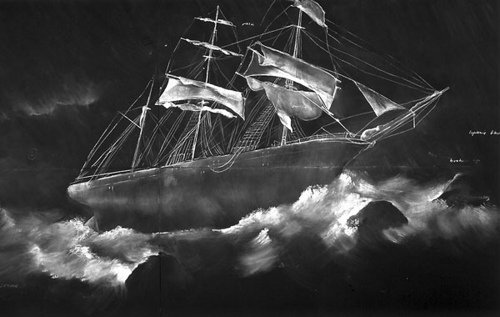
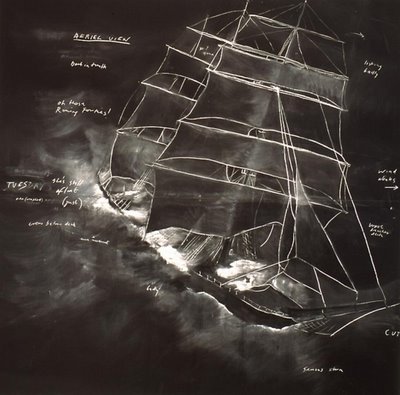
I almost love these images too much... I wish I had done them. They are huge chalk board drawings, done in situ. I really like the aesthetic and concept, the fragility of the image, it's ghostly appearance and insubstantial impermanence yet great graphic strength.
TACITA DEANS - DONALD CROWHURST'S LAST WORDS ENGRAVED IN THE GREENWICH MARITIME MUSEUM HANDRAIL IN HIS OWN HANDWRITING (IT IS THE MERCY)
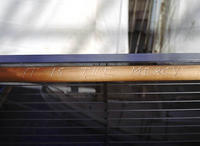
TACITA DEAN - DONALD CROWHURST'S TEIGNMOUTH ELECTRON - CLICK ON LINK TO MARITIME MUSEUM PAGE
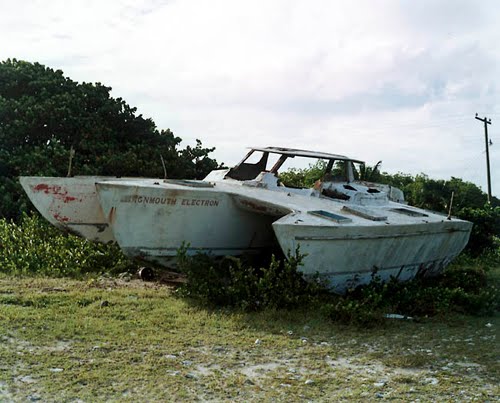
The wrecked shell of The Teignmouth Electron sits on an Island near Jamaica called Cayman Brac. It has been plundered by souvenir hunters and an artist has bought it and cut it up and exhibited part of the boat in a gallery. Before this she was refitted and used a tourist dive boat but was reportedly haunted, the skipper who couldn't swim nevertheless dived off and made it ashore rather than staying on board alone but with the sound of footsteps constantly pacing on deck.
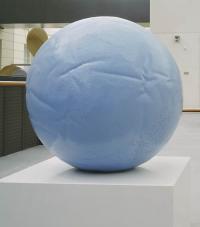
STEPHAN GEC - FAEDM 1999 AND TRACE ELEMENTS STARTED 1990
FAEDM was a fathom (6ft) diameter polystyrene ball made of the same material as underwater buoys, it was placed in a compression chamber to replicate the pressure of 33 fathoms. Trace Elements is a series of bells made out of scrap metal from K-class submarines, the bells were hung in the River Tyne and as the tide rose they rang in the water.
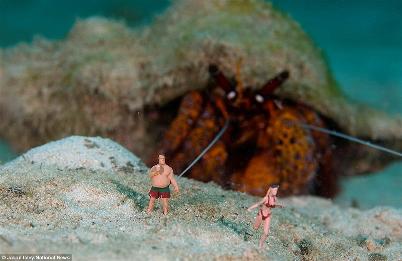
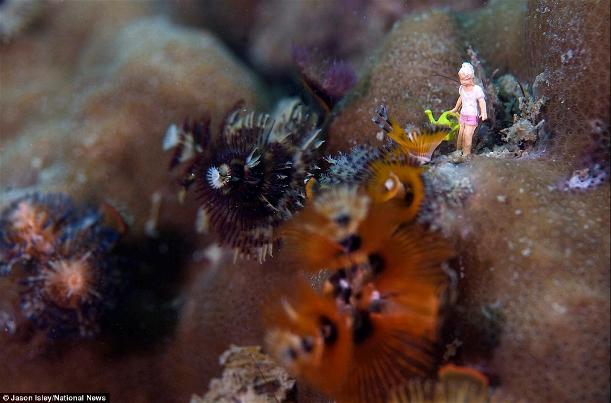
Jason Isley - Underwater scenes
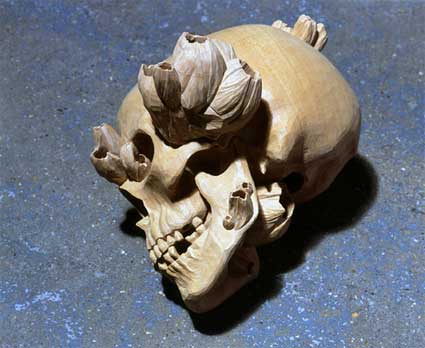
RICKY SWALLOW -

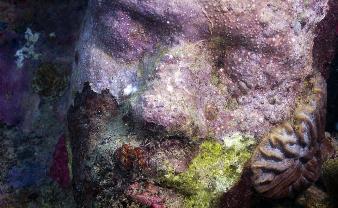
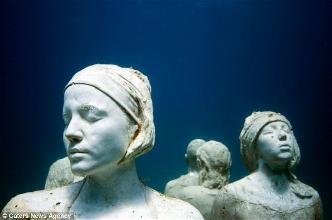

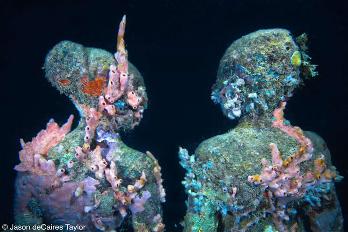
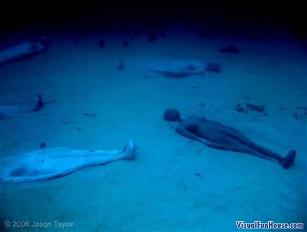
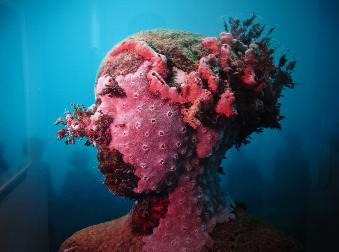
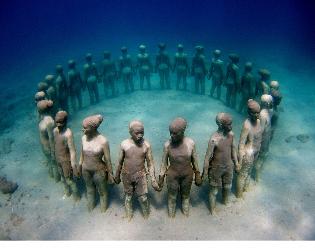
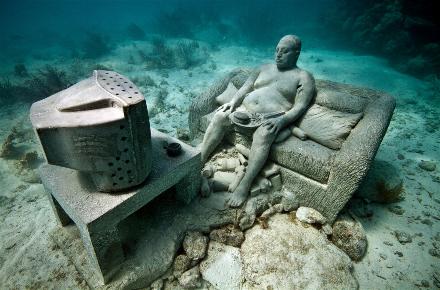
JASON DECAIRES TAYLOR - CORAL FRIENDLY SCULPTURES
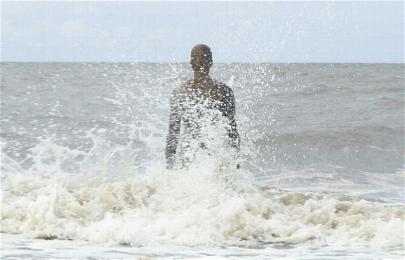
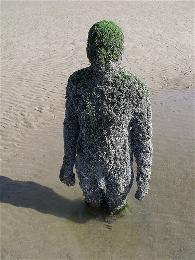
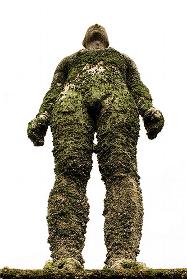
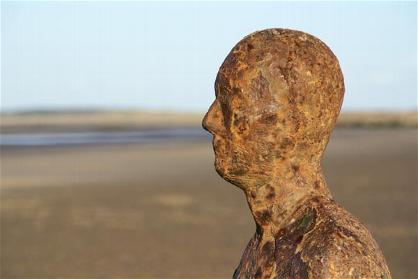
ANTHONY GORMLEY'S FIGURES
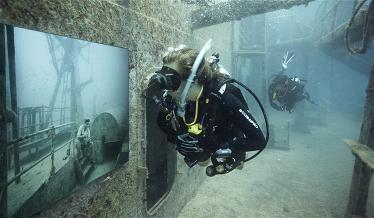
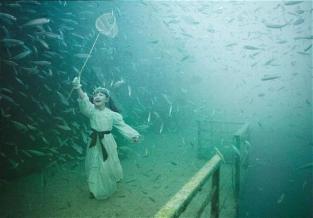
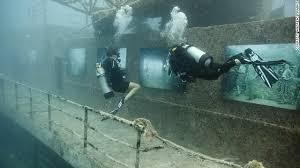
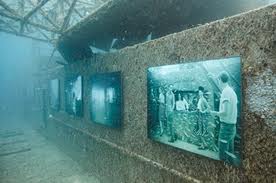
Andreas Franke - Worlds first underwater art exhibition, not so inspired by photographs on display but the concept is interesting.
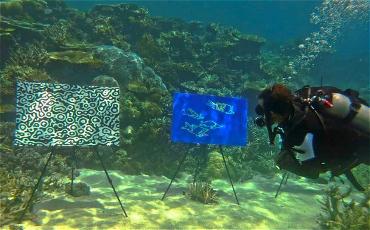
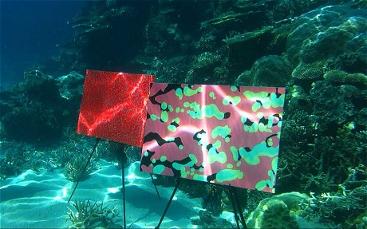
The world's second underwater art exhibition, apparently designed to encourage visitors to the Great Barrier Reef, hmmm, if the pull of one of the greatest natural wonders on earth won't inspire you, have some prints on aluminium, now you must surely want to come?! Also I thought tourism was damaging the reef. The spot is marked by a giant inflatable turtle...
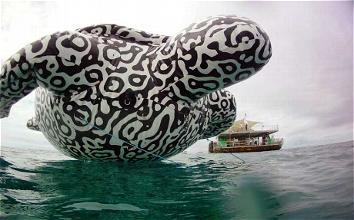
RELEVANT HISTORICAL ART - Some of the most influential and famous shipwreck paintings:
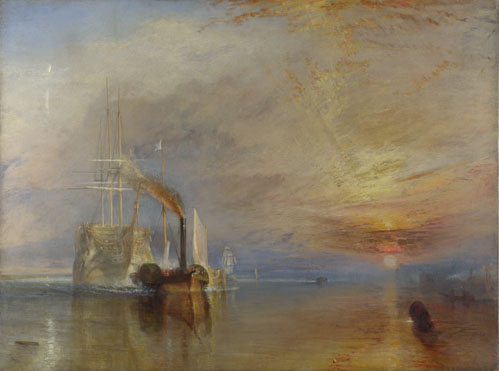
THE FIGHTING TEMERAIRE - TURNER - 1839
A ship before she is to be purposefully wrecked, voted in a BBC poll as the nation's favourite British painting. The ultimate painting of romantic, nostalgic loss, where a ship is mourned like a human. There is a sense of Charles the 1st or Mary Queen of Scots walking bravely to their deaths. It is of course a marker of the start of the end of the days of sail and the birth of steam, the triumph of man over nature.
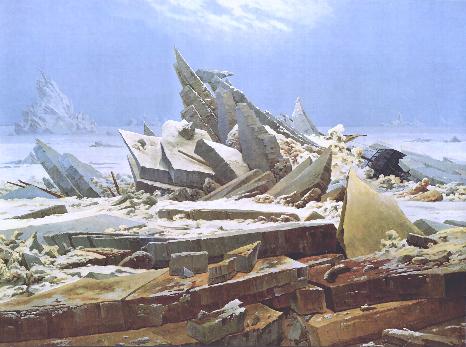
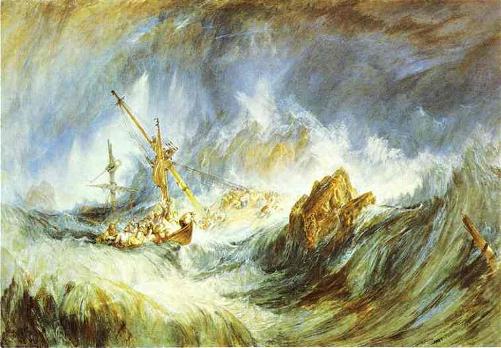
J M W TURNER'S SHIPWRECK
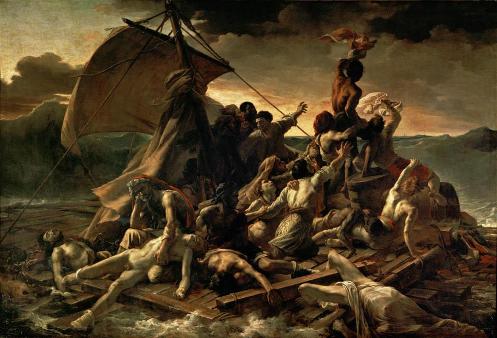
GERICAULT'S RAFT OF THE MEDUSA
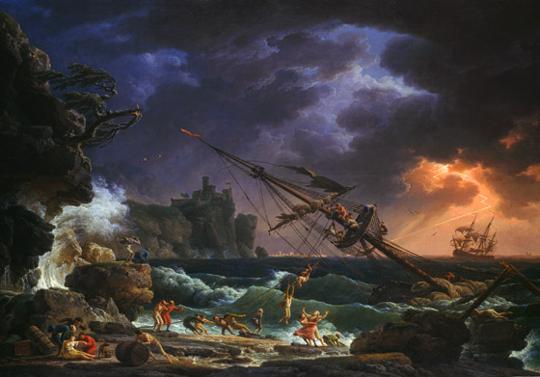
CLAUDE JOSEPH VERNET - THE SHIPWRECK 1772
HISTORIC SHIPWRECK IMAGES
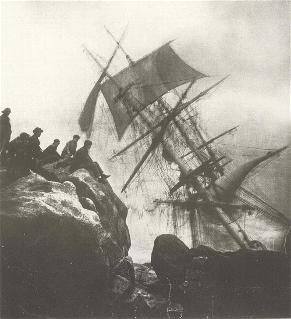
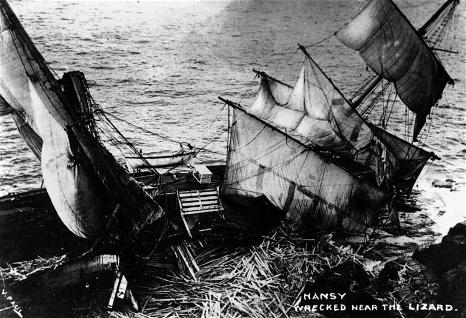
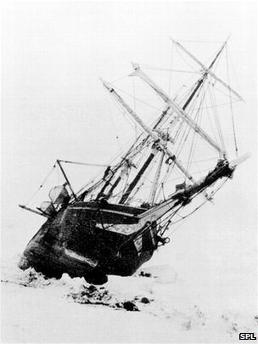
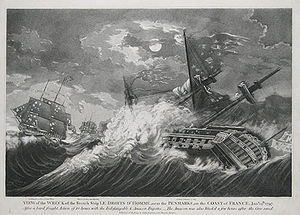
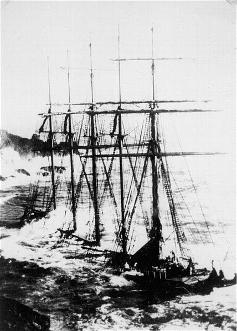
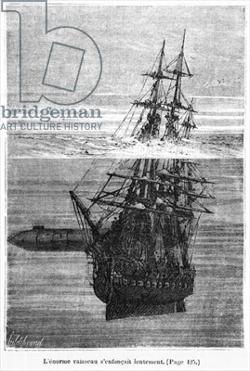
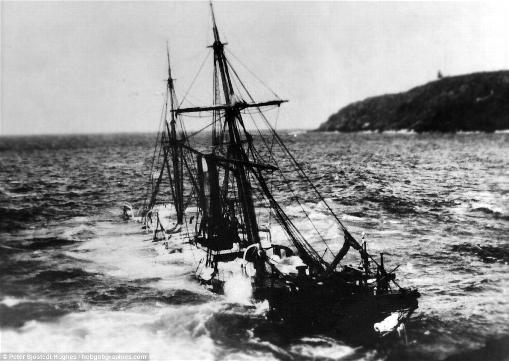
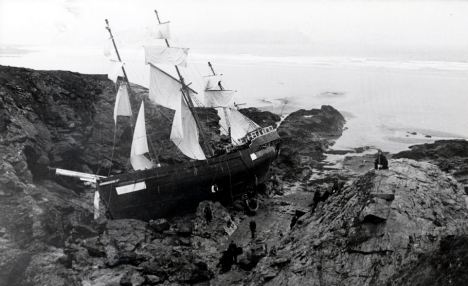
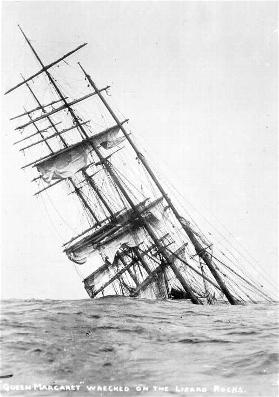
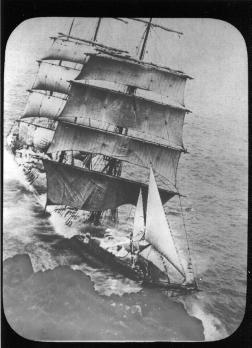
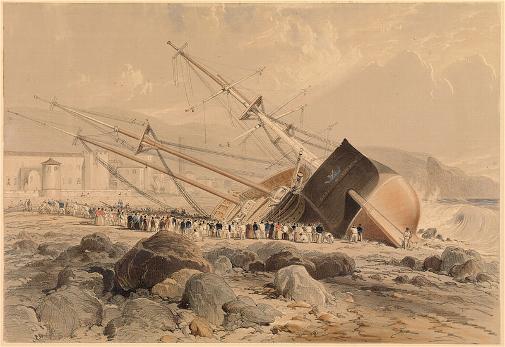

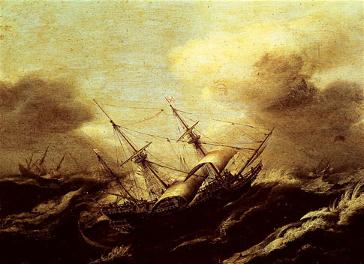
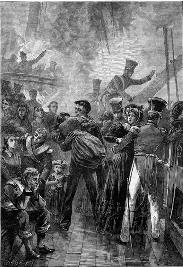
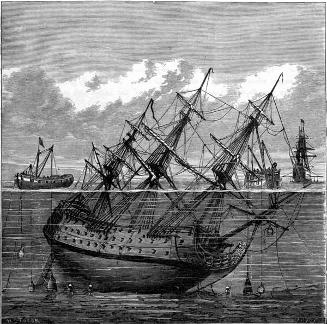
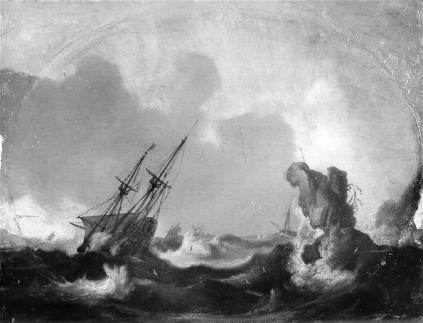
UNDERWATER SHOTS OF SHIPWRECKS AND REMAINS
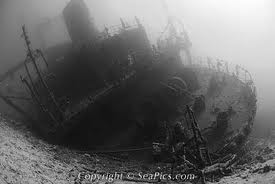
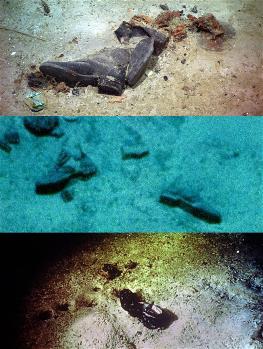
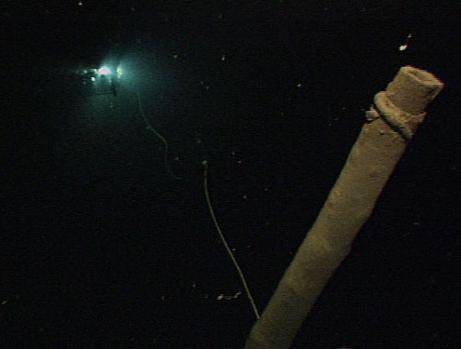
The shoes are all that remain of people in the wreck of the Titanic. The mast is from a Byzantine wreck found by Robert Ballard in the Balck Sea, it is perfectly preserved because of the anaerobic layer that stops ship worm from eating away the wood. It was one of the most eerie things I have ever watched, the way it appeared out of the gloom, still standing after over a thousand years. Generally all that remains from wooden wrecks are metal, stone and china, the bodies of both boats and sailors long gone, occasionally wooden hulls are preserved in mud or sand. Of course some of the most exciting things to come from shipwrecks are treasure-hoards of gold, silver and precious gems but perhaps more touching are the remains of the everyday, the china tea-cup, glass bottles or leather boots of sailors. These objects become relics, the ordinary becomes extraordinary.
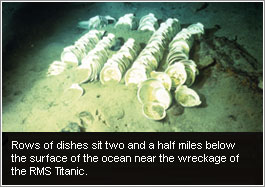 This set of breakfast dishes from the Titanic, which sank in the North Atlantic on April 12, 1912, lies on the ocean floor, discovered recently exactly in this position by Expedition Titanic 1987. Expedition officials believe it probably took the crate some two hours to fall through the 2 1/2 miles of water where the shipwreck is located. Not one of the bowls is cracked.
This set of breakfast dishes from the Titanic, which sank in the North Atlantic on April 12, 1912, lies on the ocean floor, discovered recently exactly in this position by Expedition Titanic 1987. Expedition officials believe it probably took the crate some two hours to fall through the 2 1/2 miles of water where the shipwreck is located. Not one of the bowls is cracked.
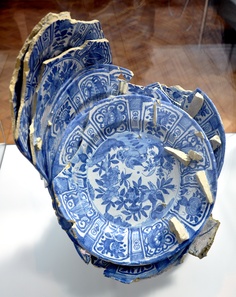
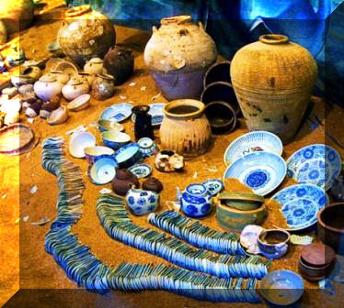
Pottery from various shipwrecks. The demand in the West for blue and white Chinese china meant many boats were packed with pottery, inevitably some sank. The Tek Sing is one of the most well know, it sank in 1822 with the loss of 1600 souls, although more died than when the Titanic sunk the Tek Sing is primarily known for it's cargo, you can even buy some at the Shops at Dartington. What troubles me is that these momento-moris, these wreck-relics are so commodified, and yet... I confess to coveting them.
There is a roaring trade in shipwreck memorabilia, you can buy bottles, pottery, coins, canons, portholes, wood, and even old rope, yes, money for old rope. And perhaps, most strangely I found a blanket for sale from a Great Lake shipwreck, not cheap at $20,000.
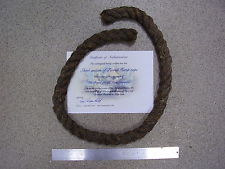
Money for old rope - A piece of rope, unusually preserved in the mud, £24.99 + £8 postage.
'Since this is a secular age, sacred relics will no longer do as quest objects (the recent demotion of the Shroud of Turin from holy trophy to medieval forgery ought to have dealt the final blow to the sacred object industry). Things swallowed by the sea will do excellently in their place.’ Hamilton-Patterson, James, Seven Tenths: The Sea and its Thresholds (London: Faber & Faber, 2007), pg 132
‘Part of the pleasurable melancholy of beachcombing comes from speculating about where the objects came from, what they were, how long they took to arrive. Having been in the sea, jetsam, like wrecks becomes pickled in agelessness’ Hamilton-Patterson, James, Seven Tenths: The Sea and its Thresholds (London: Faber & Faber, 2007) pg 139
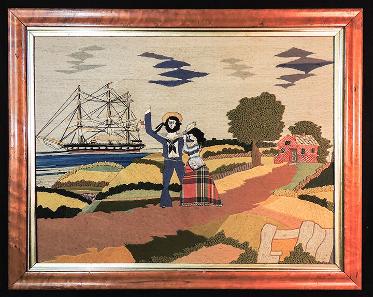
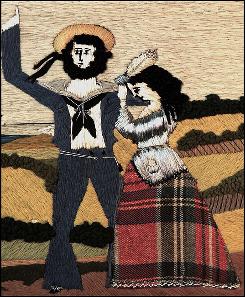
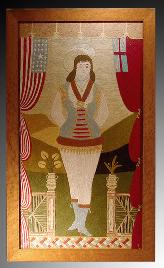
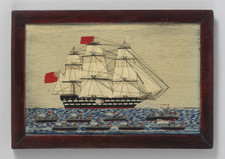
CRUEL WORK, BASICALLY EMBROIDERY BUT AS IT IS DONE BY BURLY SAILORS, IT GOES BY ANOTHER NAME!
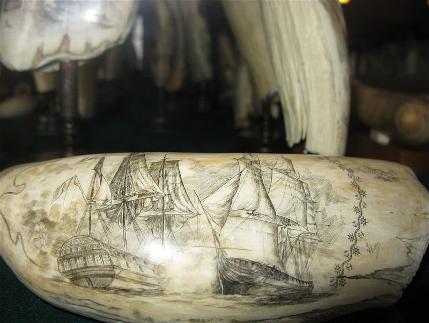
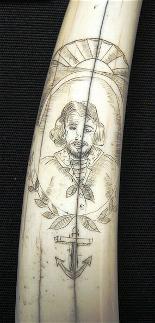
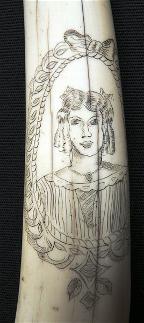
SCRIMSHAWS - BASICALLY TATTOOED WHALE TEETH AND BONES
This extract is from a book my Mum requested for Christmas 1963, it sums up the way ships are personified as female beings.
'She? You have only to ask any one of those shipyard men just why to get a ready answer. They would have said a ship is called a "she" for obvious reasons. They will tell you the custom goes back to the ancient Greeks, who called all ships by feminine names, maybe out of deference to Athene, goddess of the sea. Since those far-off days, all ships have vitality and intelligence, like any attractive woman.
Elaborating their theme, they will remind you that a ship possesses not only vitality, intelligence and other human qualities, but a waist, stays, ties, combings, chains, pins, hooks, eyes, and watches. Also a head, and a nose, eyes, shoulders and, of course, heart and veins. Then again, when in port a ship is tended by a man familiarly known to sailor-men as a "ship's husband"; and any ship always looks her best when she is dressed, rigged out by men like that. So those craftsmen and the average seaman would say, that is logic for sure.
And the Port Pirie, as every man among her crew would proclaim, hand on heart was a lady, albeit a times a frivolous lady. She loved nothing better than a beam sea, and her roll could be as gentle as the rocking of a cradle. Then again, no matter what stevedores, or her officers, did with the freight that was loaded into her, she was in seaman's language, "as tender as a lamb chop", For the Port Pirie was a well-founded ship and weather did not bother her one bit. She was a beauty, a rare-beauty, in a seaway and as proud as they come; a proud ship is worh serving in, too.
Jonesy, her sixth engineer, claimed she "spoke"to him at all times, and he knew, the moment he came on watch, whether she was well or ailing. To shore folk that may sound foolish but it is so.' pg 120-121, 'Sea Phantoms: True Tales of Haunted Ships and Ghostly Crews', Warren Armstrong, Oldhams Press London, 1963.
Here Philip Marsden in his book 'The Levelling Sea' perfectly describes the confused 'love' we feel for the sea and ships.
'I wached him in that moment, with his hand arced against the icing-white mainsail, describing the technique with a cracked softness in his voice that he used only when he spoke of certain people, and of certain periods in his life. I realised then, in a way I could not articulate, that this was as powerful as any human attachment, this love of the sea. But I know, too, that 'love of the sea' is not strictly accurate. Mariners do not love the sea. Love for the sea is something you feel from he shore. You can admire the sea from a deck; you can be drawn to it, awed and terrified by it. If you are out on the water, your affection is not for the shifting mass all around the hull, but for the hull itself. What seamen feel for their vessel is something that elevates it high above the inanimate. It is, said Conrad, 'profoundly different from the love that men feel for every other workof their hands'. pg6-7, 'The Levelling Sea', Phillip Marsden, Harper Press, London, 2012.
SAILOR'S SUPERSTITIONS
The sea is a scary and unpredictable place, unsurprisingly there are many superstitions around the world surrounding sea-faring and the sea. Some superstitions have their roots in logical acts, others seem very very odd.
- Rabbits and salmon are considered bad luck on fishing boats, often even mentioning their real names is considered bad luck; 'long ears' or 'cotton-tails' and 'red-fish' for salmon. Saying the word 'pig' was also unlucky and so sailors would refer to them as 'curly-tails'.
- Green sails are bad luck.
- Setting sail on a Friday is bad luck.
- Knocking on wood for luck; however, this does stem from good sense, by knocking on wood sailors could tell if a ship was 'sound', ie not riddled with wood worm or rotten.
- Stepping right foot first for luck, again, logical if you are carrying a sword as most people would draw from their left.
- Place a silver coin under the masthead of a boat as it is believed that this will
ensure a successful voyage
- Black Cats are thought to bring good luck in bringing a sailor home from sea.
- Pour some wine on the deck of the boat before you start your journey as an offering to the Gods. In the past sailors believed that this would bring good luck for a long voyage
- A stolen piece of wood mortised into the keel of the ship is thought to make the vessel sail faster
- Avoid people with red hair before you set sail as this can cause bad luck. If you do see a red headed person the bad luck can be reversed if you speak to them before they speak to you
- Fishermen would fear impending doom if they saw a man of the cloth before setting sail, and wouldn’t even mention the word on the boat, instead referring to them as ‘sky pilots’. He would also be referred to as the man with the collar on back to front.
- Don't whistle on board, it will whistle up a storm.
- Don't have bananas on board!
SAILOR'S TATTOOS
Swallows: help you find home
Anchors: hold you fast
Hold Fast: helps you hold on tight to ropes etc
Compass rose: helps you find your way
Dragon: means you have been to China
North Star: helps you find your way home
Pigs and Chickens: wonderfully strange belief that God, knowing that pigs and chickens can't swim (pigs actually can), if seeing the drawings in the water, would scoop them up and put them safely on dry land - the power of art.

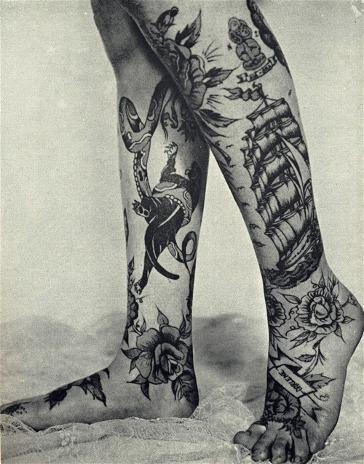
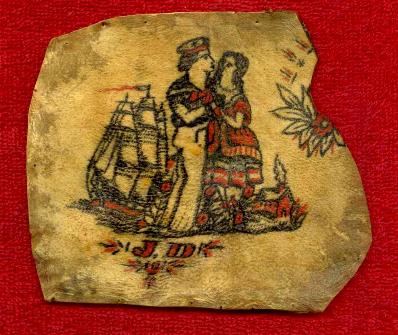
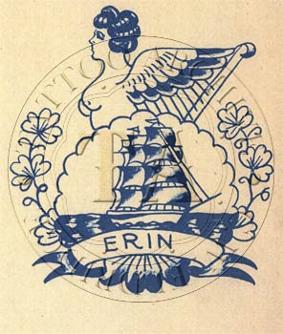
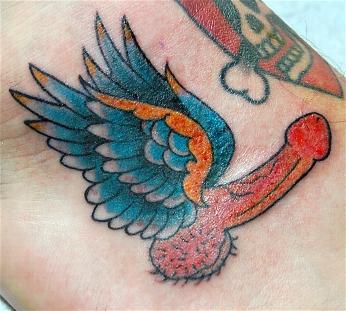
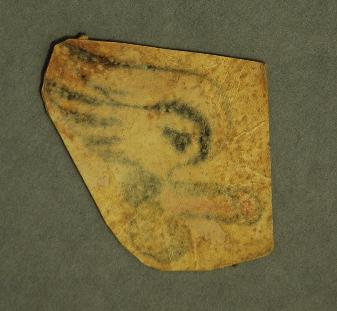
Winged phallus tattoos became popular after graffiti was discovered in Pompeii and Herculaneum.

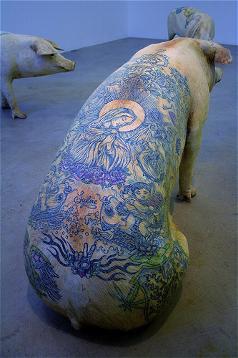
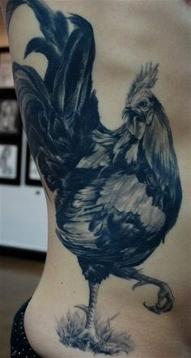
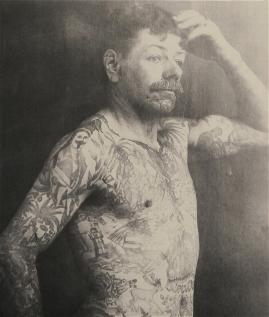
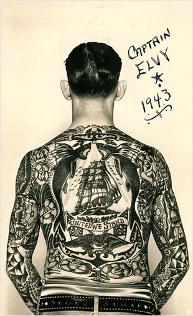
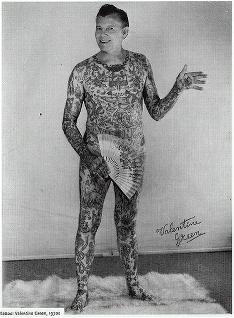
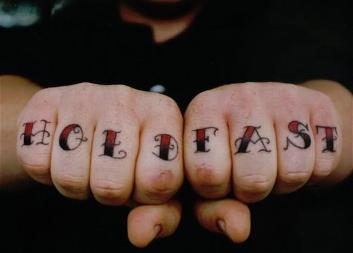
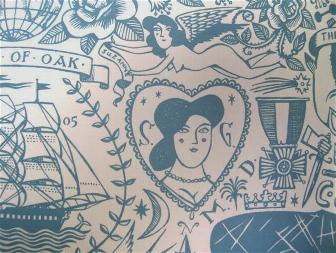


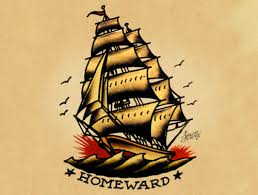




Siberian ice maiden
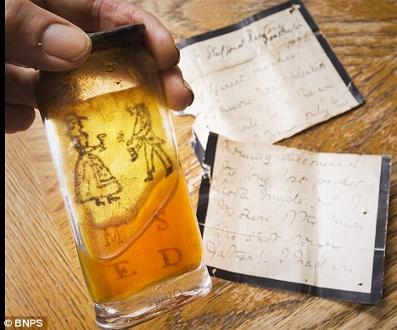
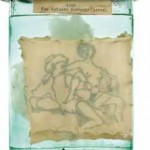
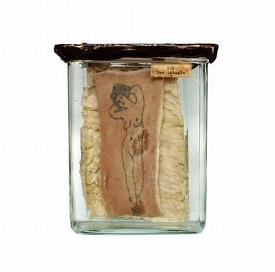
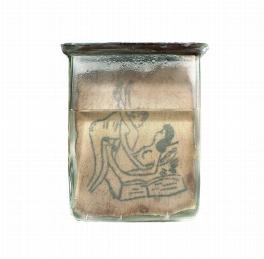
Tattooed skin fragments from Polish prisoners. Pornographic images; getting turned on by your own skin...
SEWING AND STITCHING
Sailors have always been able to wield a needle. Early boats were sewn, sails always need stitching and repairing, fishing nets are pretty much crocheted. Sailors often turned their needles to arts and crafts too; scrimshaws, cruel work, tattoos.
A corpse buried at sea was sewn into an old canvas sail as a shroud, the final stitch was through the nostrils; to make sure the person was definitely dead.
Fishermen mending nets on White Heather, Falmouth 2013
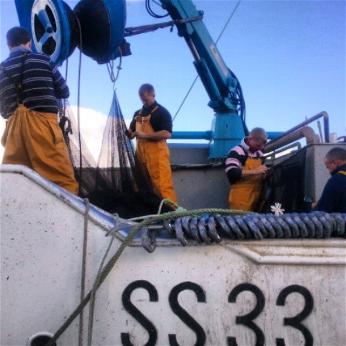
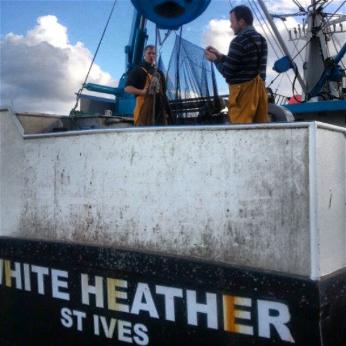
I now live almost next door to a shipwreck.. domestic shipwreck
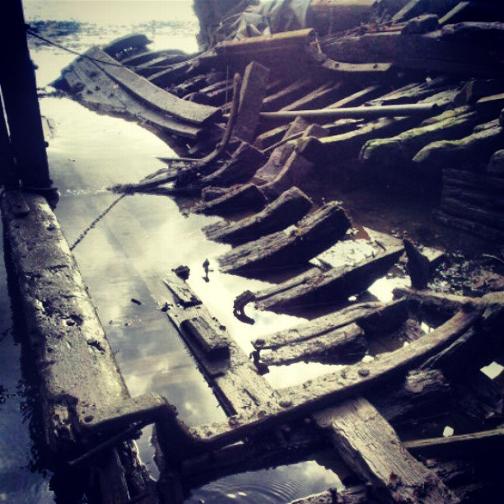
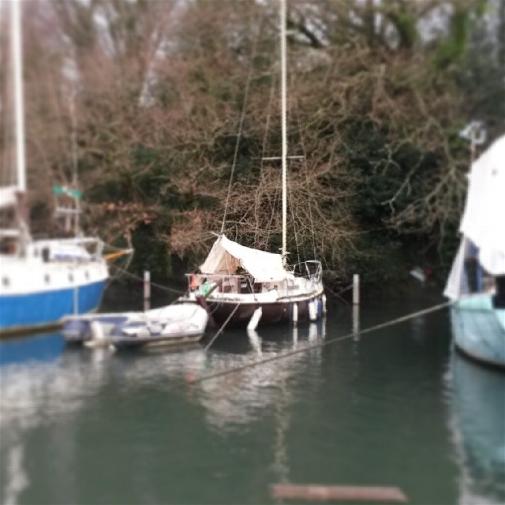
My home for a few nights each week.
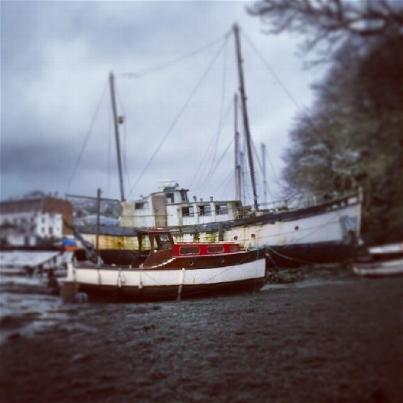
Broken dreams... shipwrecks don't need to be dramatic, short, sharp events, they can be slow and sad. Abandoned houseboats in Penryn Creek, a few boats down from my boat.
About 5 boats down from me is another Folk Boat, the same type as mine, it now longer floats at high tide, the water flows in and out instead, a sad reminder of how fragile my little home is. A greater reminder came one night during the storms, my little boat was heeling over like we were sailing at sea, suddenly I heard a cracking of wood and realized one of the legs that prop the boat up at low tide was broken, at high tide not a problem, but come low tide she would fall over and wreck herself. Luckily I was aboard and so rafted up against the big old lugger beside me. To make sure she sat all right I stayed up and drank rum till the tide dropped and she settled OK. My yurt home in Devon also nearly got squashed by a big oak branch that broke the steps up to it in two, stopping just before the door! On the plus side I am collecting lots of fabric from the beach, stirred up or washed in to the sea by the storms.
GOD, GODS AND GODDESSES
Superstition and religion are, for an atheist one and the same...
FISHERS OF MEN - JESUS AND HIS DISCIPLES
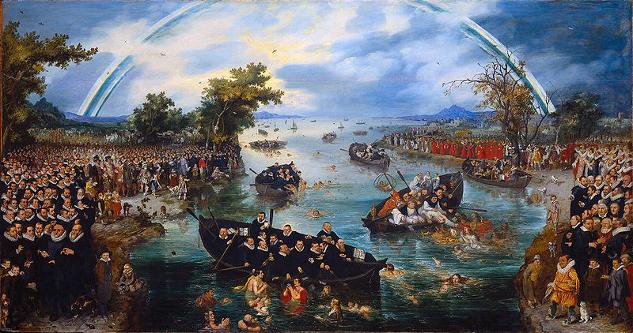
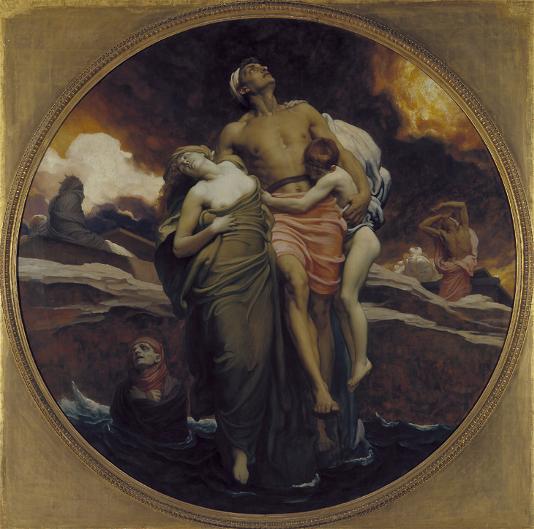
FREDERICK LEIGHTON - AND THE SEA GAVE UP THE DEAD... 1892
STELLA MARIS - OUR LADY, STAR OF THE SEA
An ancient title for the Virgin Mary. Referring to her role as guide for Christians (gentiles were referred to by Old Testament Israelites metaphorically as the sea, meaning anyone beyond the "coasts", or, that is to say, sociopolitical, and religious (Mosaic law), borders of Israelite territory) However the name is, like so much in the Bible, based on a mistranslation.
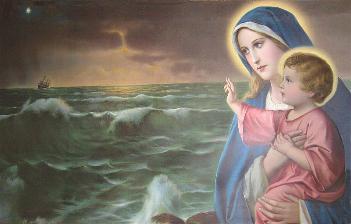
WOMEN AND THE SEA
LINK TO MARINER'S MUSEUM - WOMEN AND THE SEA - Remarkable women at sea
Whilst it is a well known traditional belief that a woman on a ship brings bad luck, the truth is that women have been at sea for millennia, and not just as passengers. Female fisher-folk, pirates, tradeswomen, cooks and cabin 'boys'. Sometimes women would pretend to be men. One of the first Royal Marines was a woman named Hannah Snell, the notorious pirates Anne Bonny and Mary Reed at first pretended to be men and it seems certain they were not alone. 'Women and children first' was a rule that had a lot to do with a concious shaping of a political propaganda. A favourite scene in broadsheets and paintings was one of a dashing heroic man helping a prone drowning woman:
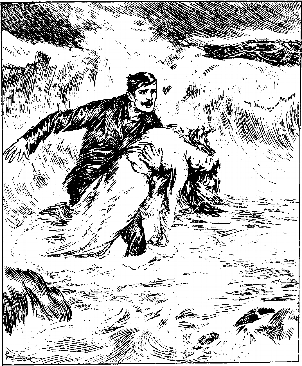
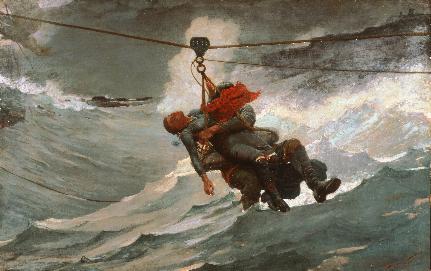
Winslow Homer - The Wire
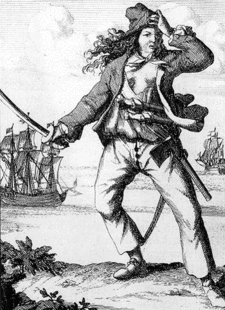
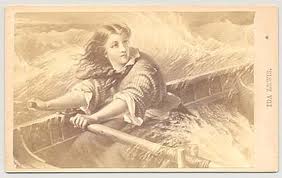
Ann Bonny Grace Darling - Heroine of the seas
However, women still make up less than 2% of the seafaring population.
SEX AND THE SEA
The sea is sexy...
Bared female breasts can apparently calm a stormy sea!
From 'genderedseas' blogspot:
'Sailortowns and port areas of cities have long been seen in popular culture and maritime history as sites of sexual and racial difficulty. Cruikshank’s cartoons early showed that no decent woman would go there. Anyone foolish enough to do so would lose her virginity or her reputation, usually both. The problem by the early twentieth century was perceived to be not only seafarers but ‘aliens’. Foreign seamen, therefore, were a double danger.'
Maritime Museum Rotterdam's exhibition 'Sex and the Sea'
5 October 2013 - 19 December 2014
'In the exhibition ‘Sex & The Sea’, the British film director Peter Greenaway and the Dutch multimedia director Saskia Boddeke have produced an experience for visitors (16+) in which they put themselves in the place of the seamen. Visitors are encouraged to feel the same emotions of homesickness and sexual desire as seamen are faced with when they are at sea for months on end and staying in unfamiliar ports. Far away from their homes, other norms and values can sometimes hold sway. Will the passing sailor allow himself to be tempted in these exotic locations? Does he have a different girl in every port? Does the lonely sailor write home every day? Or may a young hothead see the shape of a mermaid when a manatee appears? Greenaway and Boddeke have translated this into an artistic film project comprising images of maritime erotic artworks, pin-ups, mermaids, postcards, photographs and unique quotes from seamen about lust. This film project is complemented by additional objects such as a real mermaid, tattoos and sperm whale teeth, with erotic maritime shows, voluptuous ships' decorations and model ships with poetic names such as 'The Mermaid'.' The exhibition information from the Rotterdam Maritime Museum website.
SUBLIME OR RIDICULOUS?
A shipwrecked duck. Dutch artist Florentijn Hofman's giant rubber duck has floated in harbours worldwide but has deflated and burst several times, once because of an earthquake.
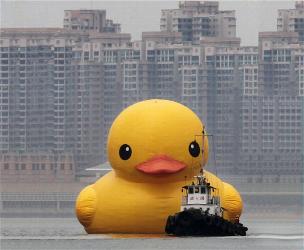
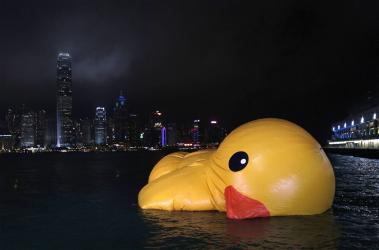
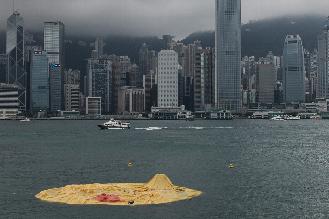

LAYING FLOWERS ON THE SEA TO MARK A SHIPWRECK
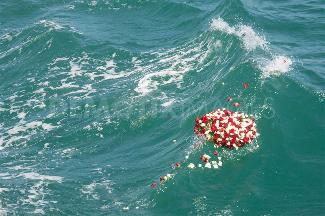
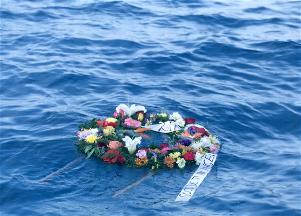
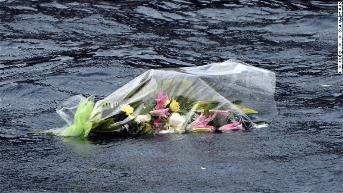
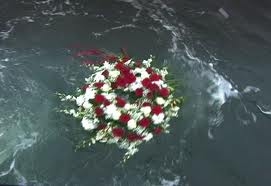
Sturm und Drang
literally "Storm and Drive", "Storm and Urge", though conventionally translated as "Storm and Stress")[1] is a proto-Romantic movement in German literature and music taking place from the late 1760s to the early 1780s, in which individual subjectivity and, in particular, extremes of emotion were given free expression in reaction to the perceived constraints of rationalism imposed by the Enlightenment and associated aesthetic movements
pathos
1. A quality, as of an experience or a work of art, that arouses feelings of pity, sympathy, tenderness, or sorrow.
2. The feeling, as of sympathy or pity, so aroused.
bathos
1.a. An abrupt, unintended transition in style from the exalted to the commonplace, producing a ludicrous effect.
b. An anticlimax.
2.a. Insincere or grossly sentimental pathos
BATHOS (ENCYCLOPEDIA BRITANNICA ONLINE)
bathos, (from Greek bathys, “deep”), unsuccessful, and therefore ludicrous, attempt to portray pathos in art, i.e., to evoke pity, sympathy, or sorrow. The term was first used in this sense by Alexander Pope in his treatise Peri Bathous; or, The Art of Sinking in Poetry (1728). Bathos may result from an inappropriately dignified treatment of the commonplace, the use of elevated language and imagery to describe trivial subject matter, or from such an exaggeration of pathos (emotion provoked by genuine suffering) as to become overly sentimental or ridiculous.
I feel deliberately invoking BATHOS is useful to me, it seem particularly pertinent as Pope claimed it was often accidentally used when describing the sea, it's etymological roots to the sea in meaning 'THE DEEP' is also apt.
SHIPWRECK
(Miriam Webster online dictionary)
1
: a wrecked ship or its parts
2
: the destruction or loss of a ship
3
: an irretrievable loss or failure
SHIPWRECK
noun
1.The destruction of a ship at sea by sinking or breaking up, for example in a storm or after striking a rock: these islands have a history of shipwrecks and smuggling
1.1A ship so destroyed: the detritus of a forgotten shipwreck
verb
(be shipwrecked)
(Of a person or ship) suffer a shipwreck:
'the English envoy was shipwrecked off the coast of Sardinia and nearly drowned'
(as adjective shipwrecked) she found herself clinging to the kitchen cabinet like a shipwrecked mariner to a rock
ANTIKYTHERA MARBLES
A SHIPWRECKED CARGO OF SCULPTURES FOUND BY SPONGE DIVERS- UNCANNY EFFECT - FIRST DIVER RETURNED TERRIFIED, CONVINCED HE HAD DISCOVERED A PILE OF ROTTING CORPSES, THE MARBLE IN THE SAND AS PROTECTED BUT SEA CREATURES CANNIBALISTICALLY CONSUMED THOSE PARTS EXPOSED TO THE SEA.
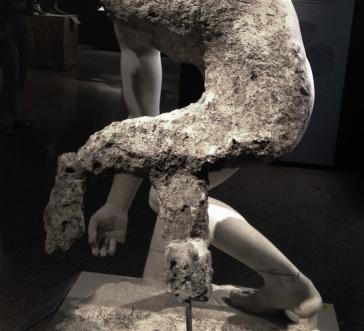
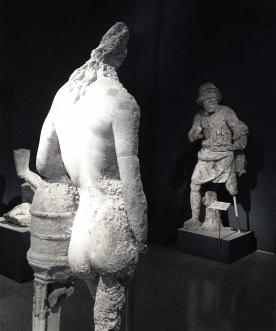
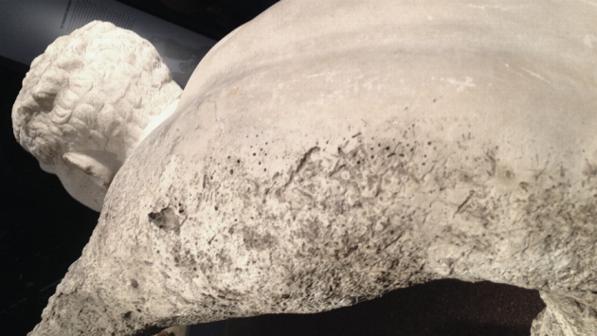
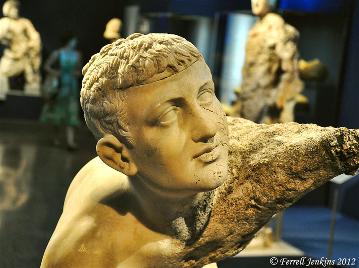
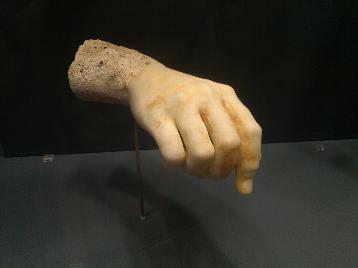
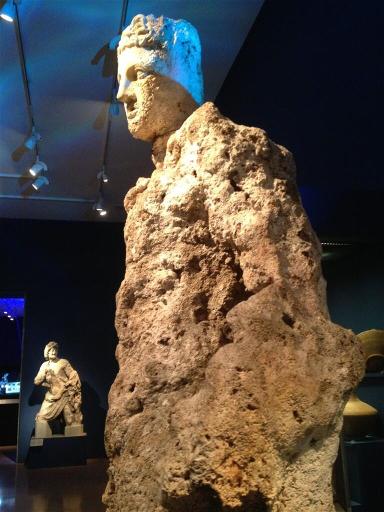
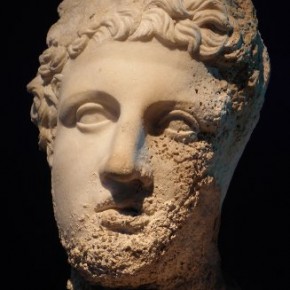
THE DANCING SATYR - ANCIENT GREEK BRONZE STATUE TRAWLED UP IN FISHERMEN'S NETS IN THE MEDITERRANEAN IN 1998
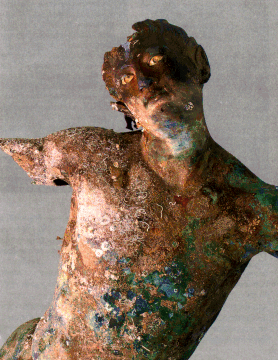
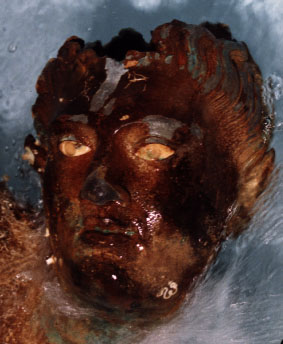
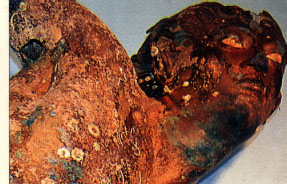
Statue before restoration, and after...
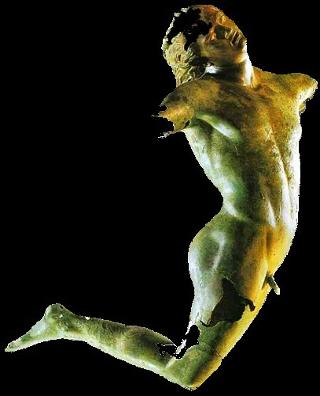
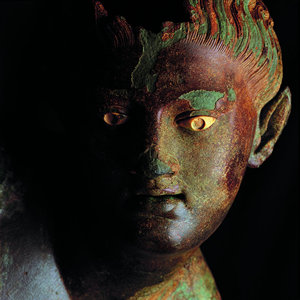
This passage comes from a tourist website, it describes the moment a 2,500 year old bronze 7ft statue of a dancing satyr is hauled out of the Mediterranean in 1998:
Captain Ciccio said the statue emerged from the sea in the most beautiful way imaginable, because while it could have come out with its legs, or backside leading the way, the first part of its body to break the surface of the water was its face. It came out gazing towards the heavens as if gasping for air. Ciccio said it initially looked like a castaway caught in his nets and trying to escape. The statue was covered in shrimps and small crabs, many of which had crawled out of its mouth.
http://www.finditsicily.com/en/travel-guide/travelguide/82/meet-the-dancing-satyr.htm edn, () [accessed 09/01/2014]
SEX DOLLS 'RESCUED' FROM THE SEA BY AUTHORITIES IN TURKEY AND CHINA
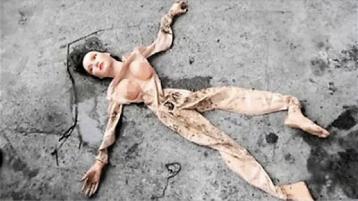
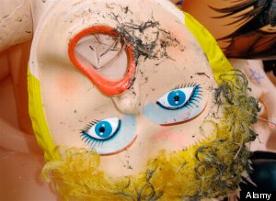
‘Crushed into the meshes was the face of a girl looking out at them, her mouth wide open in a yell, her eyes wide. Partially lost among the plaice and whiting and dogfish were her twisted limbs. When the catch was released nobody wanted to wade into the bin to dig her out from beneath the bottles and squid and halibut, not least because there was movement everywhere as if things were trying to struggle up from the bottom of the heap. Eventually some brave soul pulled her out from beneath a heaving monkfish: a torn and deflated life-sized sex doll. Inside her mouth, moulded into a red-rimmed O of insatiable accommodation, were hermit crabs. She, too, went back over the side, twentieth-century mermaid, Jenny Haniver herself, probably modelled from the by-products of the very same North Sea oil her roustabout lover had been helping to extract.’
Hamilton-Patterson, James, Seven Tenths: The Sea and its Thresholds (London: Faber & Faber, 2007), p.196
FIGURINES
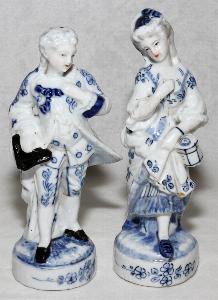

AND MORE SUBVERSIVE/UNUSUAL FIGURINES...
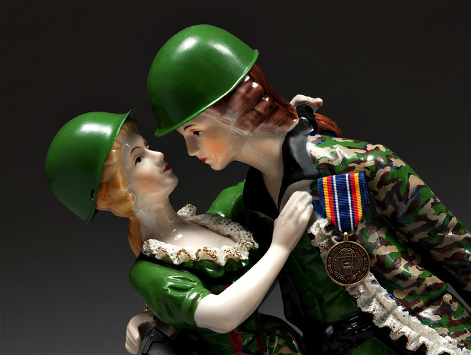
COMMEMORATIVE SHIPWRECK CHINA
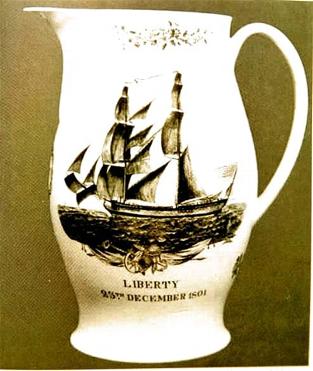
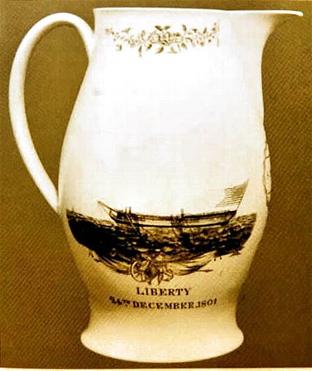
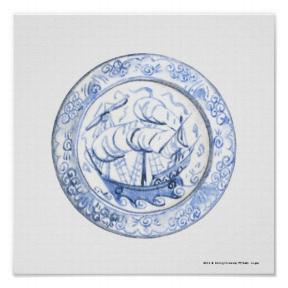
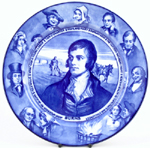
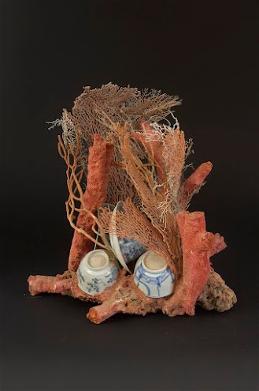
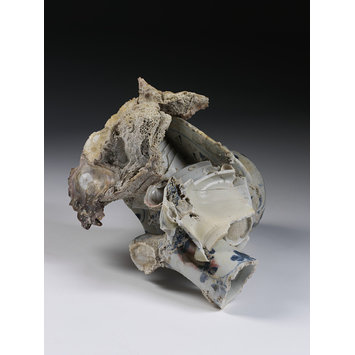
'SEA SCULPTURES' Shipwrecked china fused and grown over by coral.
Some of my photographs of goddesses in India that were made of straw and clay over several weeks before being elaborately painted and adorned and paraded through the villages for hours before being thrown into the river and hacked about with sickles.



THE SEA AS A PLACE OF TRANSFORMATION
I am interested in how things retrieved from under the sea become special, different, valuable and uncanny. As well as a literal immersion I am interested in how people can be metaphorically changed by shipwreck or immersion. Shakespeare uses the sea as a place where traditional boundaries of sex and class can be transgressed. The sea and sailing can still see women setting records, it is one of the few sports where that can, and does, happen. The possibility of a figure being a hermaphrodite or at least questionably male or female is interesting to me. The barnacles I hope will grow on my figure are themselves hermaphrodites.
All quotes from 'Art and Shipwreck'
Shipwrecks in art and literature ‘may sunder a ship’s timbers and break down body and mind in the seafarer only to enable a rebuilding to take place.’ Intro 6
Shipwreck in Shakespeare’s late plays function as ‘a mode of creative or restorative destruction and of personal transformation’. Intro 6
‘It is interesting to speculate on the origins of this recurrent although by no means universal association between shipwreck and processes of (positive) transformation and renewal. Other forms of disaster that have routinely afflicted humanity – fires, earthquakes, volcanic eruptions, and so forth – are far less commonly viewed this way. The tradition is unlikely to be a reflection of events during and after real wrecks; the vast majority of real-life shipwreck survivors have almost certainly returned home traumatised rather than enriched by their experiences.’ Intro 6
‘Thinking in terms of a phenomenological ‘poetics of space’, therefore, it is easy to see how a boat or ship may be constructed as a shell or carapace, constraining the seafarer, which by extension leads to an imaginative apprehension of a need to shatter the vessel, so that the seafarer’s new identity may emerge as if from a chrysalis.’ Intro7
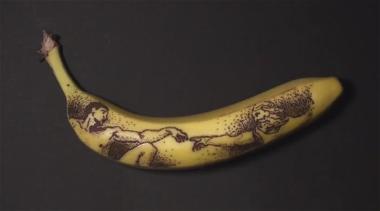
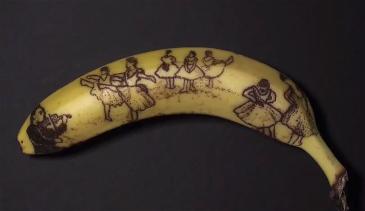
DOMESTICATING THE SUBLIME AND POSSIBLY EVEN SUBLIMING THE DOMESTIC
I enjoy the tension between the sublime and the domestic, small details that undermine the sublime but possibly make it more poignant. A recent interview on Radio 4 about the recovery of Bluebird and the remains of Donald Campbell was a brilliant example of tragedy and the humorously but worryingly absurd; the man who is salvaging the wreck went down at dusk by himself to 'tell' Donald Campbell about it, but he was breathing helium so the heartfelt and poignant address came out all squeaky and ridiculous, then there was his teddy called Mr Whoppit who was found floating after the sinking, he had lost his feet but new ones were drafted on. Replicas of the bear can be bought here:
http://www.vectis.co.uk/Page/ViewLot.aspx?LotId=384920&Section=432&Start=20

This friction is fascinating. The teddy, perfect example of sublime nature 'red in tooth and claw' rendered cuddly and comforting.
I have my Thomas to help me negotiate the sublime:
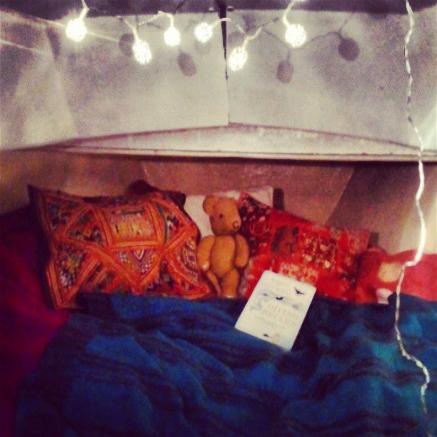
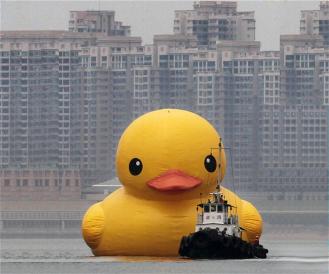
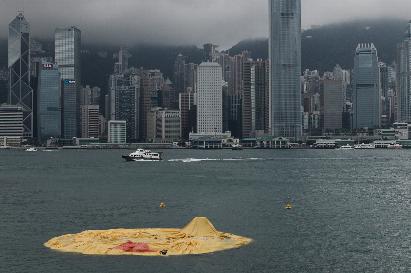
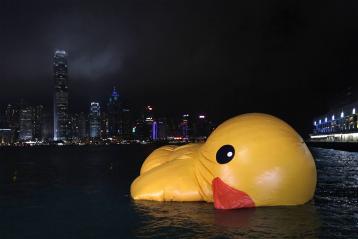

People responded by mocking up fake mourning images with traditional temple offerings.
I have always been fascinated and appalled by the carcasses of rotting boats down Oldmill Creek, the place I learnt to sail as a small child. Great old wooden boats or small fibreglass cruisers. Especially pleasurably thrilling were those boats that you could peer into and see fragments of domesticity, green slimed and wet with the high tides. Eventually someone would douse the wreck in fuel and set fire to it, concreted puddles of charcoal, rust and plastic litter the shore. People bring boats there to live on when they are down on their luck, the boats are refuges, some intend to do them up, they have grand dreams of the romance of life on the ocean wave, but those dreams have decayed with he boats. Muddy squalor as opposed to salt-fresh ideals.
I haven't used my proper camera in ages, the phone camera is such good quality and so easy to carry, but last week I was exploring some of the old wrecks and the light was fantastic, misty but sunny. I drove home and got the camera. I am really happy with the images, I feel these very domestic wrecks both in size and style of boat and contents seem to strike the perfect note of frustrated sublime, they are not grand or tragic on a vast scale, they are domestic, sad and a bit pathetic. I plan to see if I can print the images on some of the old sails. I like the idea of printing photographs on old sails, I actually think that printing photos on canvas is really naff but that is partly why I think it is appropriate, those sea-side images printed on canvas are everywhere here and so my images of the sad underbelly of the sea-side sailing rotten dream would work well. I do also, as ever think the marriage of materials with images and idea is very important and adds to the poetry and understanding of a piece.
I keep thinking about Grace Darling, Victorian heroine, the lighthouse keepers daughter who rowed out to a shipwreck and rescued those at peril. She was incredibly famous, a whole industry sprang up in commemorative china, glass replicas of her Coble boat she rowed out (I own a Cornish Coble, a similar design). Chocolate boxes with images of her daring rescue were very popular (I love this, literally the sublime shipwreck rendered as a chocolate box image!), she nearly went bald from all the requests for locks of hair. Tragically she died a few years after and her tomb became a tourist attraction with picture postcards sold of it. She continues to fascinate today, see the iphone cover with a Grace Darling print! I think she is a fascinating example of a heroic female at sea, not a prone drowning victim or a poor scared lady waiting to be helped into a life boat by chivalrous men. That she is still celebrated as such is brilliant. There is a whole museum dedicated to her and her little boat is on display. I feel she might appear in my work but I would like to restore some of the heroism and remove some of the saccarine.
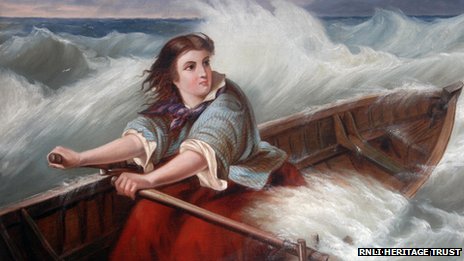
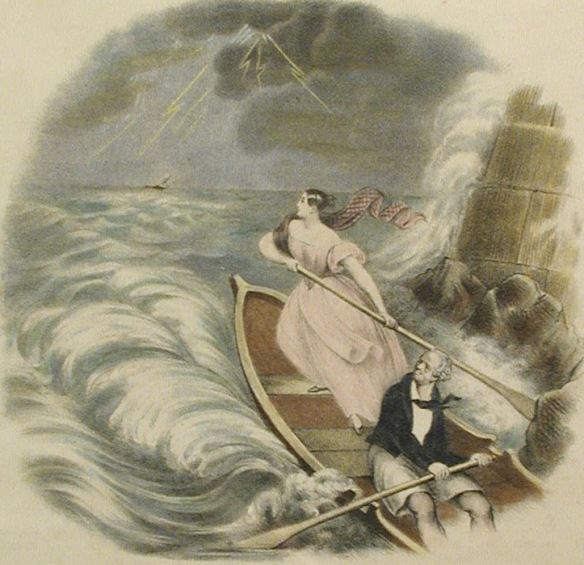
I have just bought this thimble of Grace Darling, it will be useful for when I am sewing.
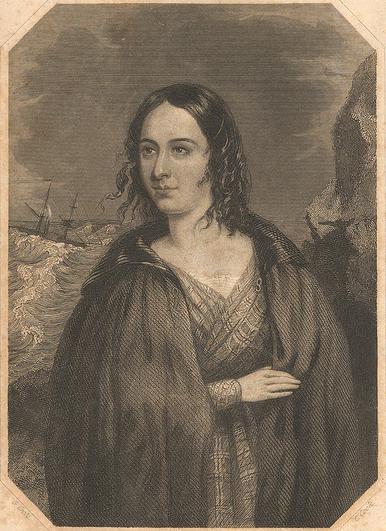
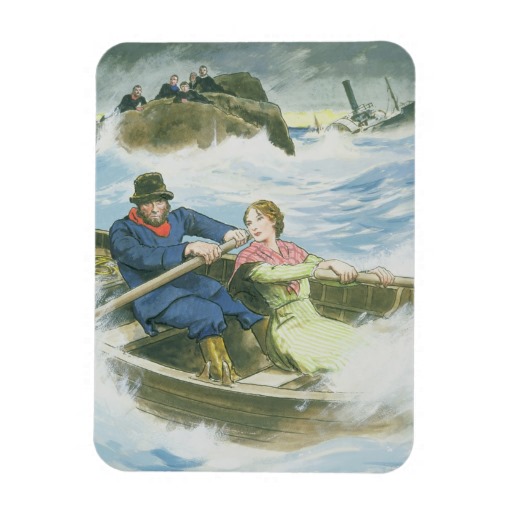
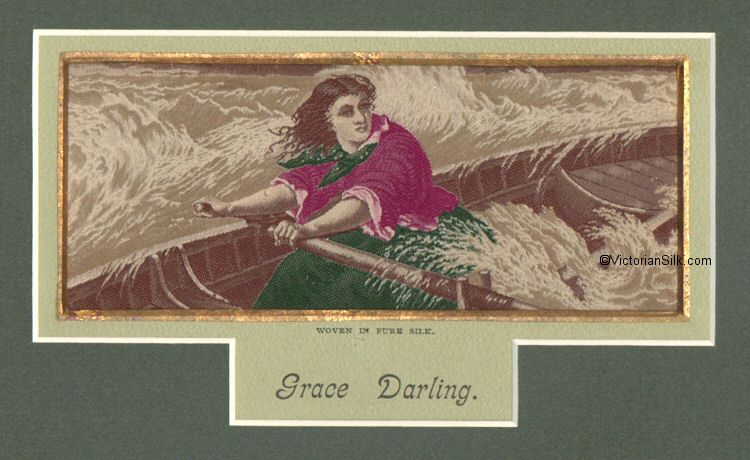
This image is woven in pure silk!
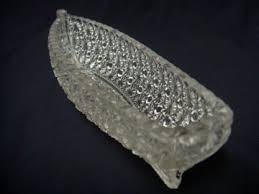
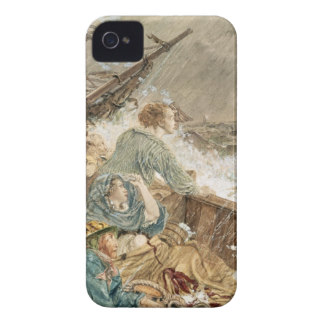
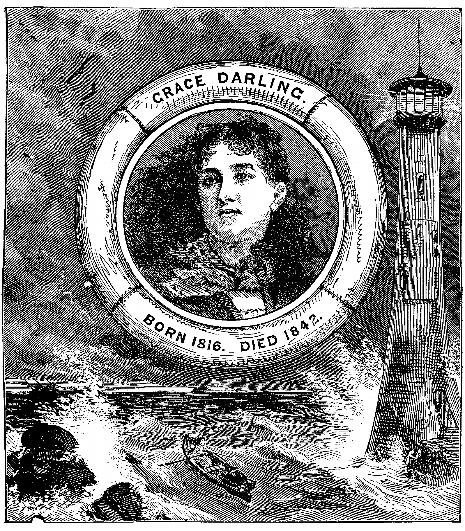
SOME APPROPRIATE POETRY...
Sea Fever
By John Masefield
I must go down to the seas again, to the lonely sea and the sky,
And all I ask is a tall ship and a star to steer her by;
And the wheel’s kick and the wind’s song and the white sail’s shaking,
And a grey mist on the sea’s face, and a grey dawn breaking,
I must go down to the seas again, for the call of the running tide
Is a wild call and a clear call that may not be denied;
And all I ask is a windy day with the white clouds flying,
And the flung spray and the blown spume, and the sea-gulls crying.
I must go down to the seas again, to the vagrant gypsy life,
To the gull’s way and the whale’s way where the wind’s like a whetted knife;
And all I ask is a merry yarn from a laughing fellow-rover,
And quiet sleep and a sweet dream when the long trick’s over.
DER STURM
By Johann Joachim Ewald
Suddenly it grows dark, the wind is howling loud,
And heaven, sky, and land appear a frightful jumble.
Toward the stars flies up the ship, then plunges down again,
Sails on washed by waves, with naught but ruin all around,
Here lightening, there thunder, the whole ether storming,
Swell towering up on swell, and cloud on cloud,
The ship is shattered, and I...nothing happened to me,
Because I only watched the storm from shore.
ARIEL'S SONG (From The Tempest)
By William Shakespeare
Full fathom five thy father lies;
Of his bones are coral made;
Those are pearls that were his eyes;
Nothing of him that doth fade,
But doth suffer a sea-change
Into something rich and strange.
Sea-nymphs hourly ring his knell:
Ding-dong.
Hark! now I hear them — Ding-dong, bell.
EDWARD RUSCHA
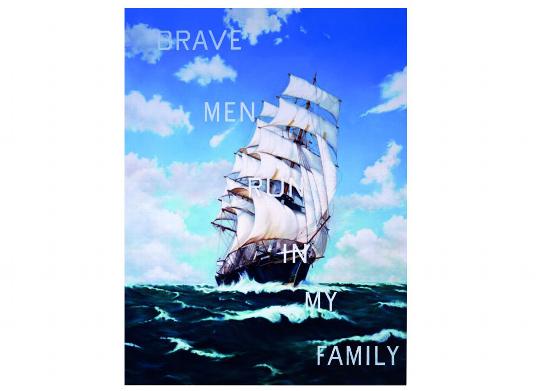
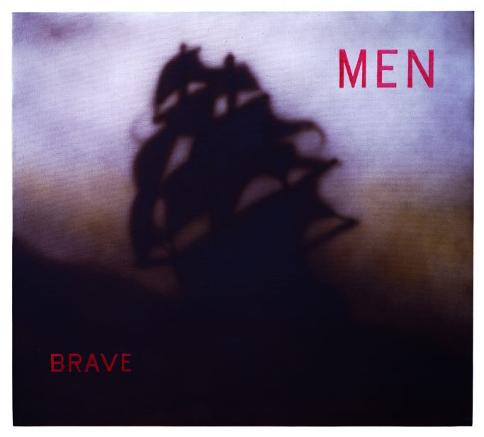
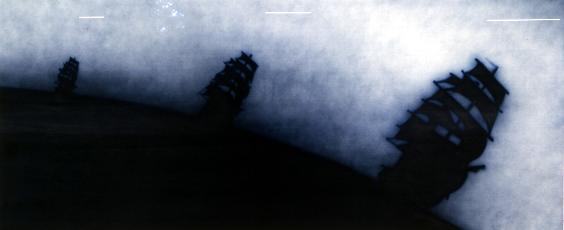
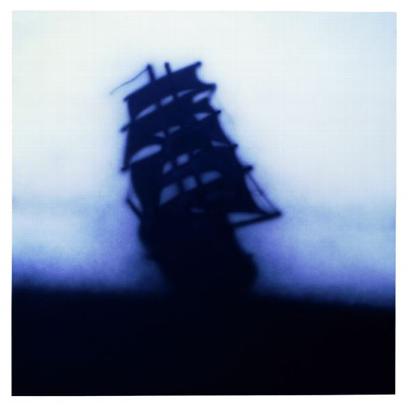
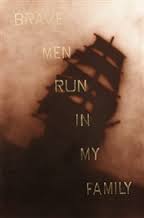
CORNELIA PARKER
We were lucky enough to have Cornelia Parker speak at our university and got to participate in a small seminar with her. I really enjoy her work, subject wise it is not so relevant to my work but her marriage of materials to concept is. As she said 'truth to materials' was drummed into her at art school. Below is one of her rochat ink images made with snake venom mixed with the black and anti-venom mixed with the white. Also her bullet drawings, sewn drawings. A masculine/feminine piece of art...
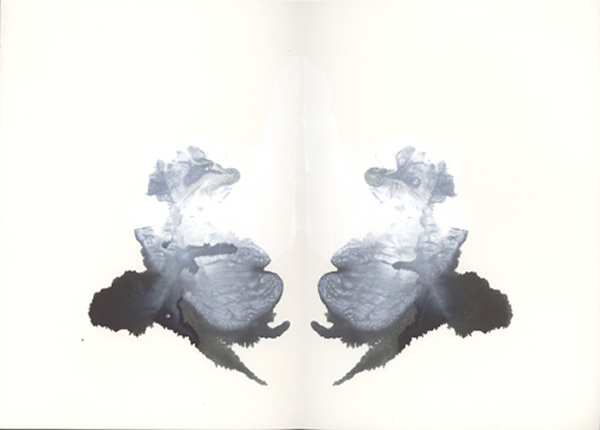
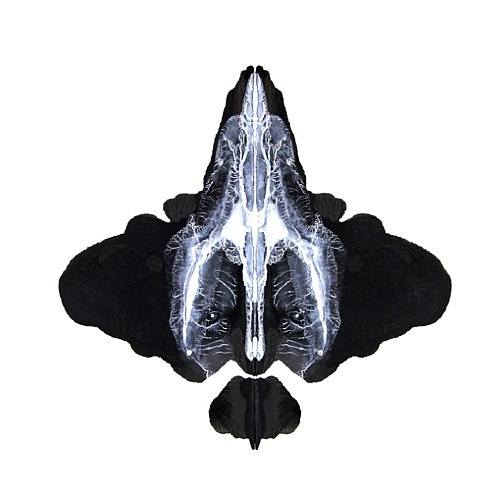
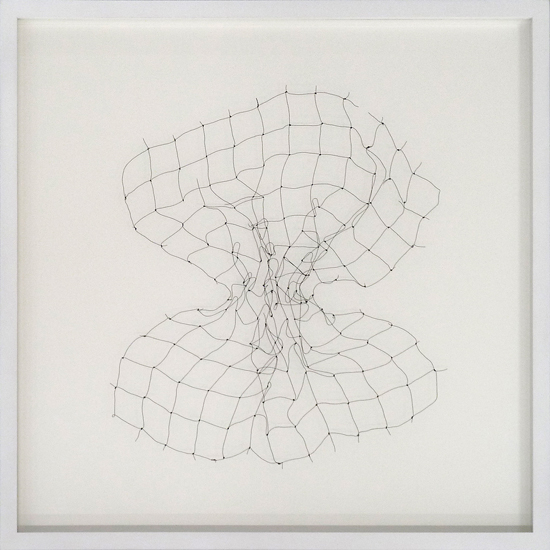

SPILT MILK JERUSALEM
I also find the spilt milk photographed in Jerusalem very pertinent, the way an accidental found event, beautifully photographed and titled can suggest a whole narrative and rich set of references.
YINKA SHONIBARE
Maritime artwork with significant fabric...
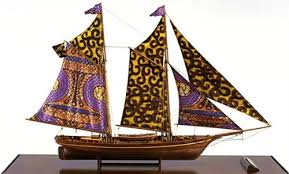
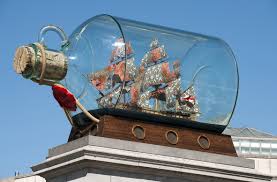
TRACEY EMIN'S PATCHWORK



GRAYSON PERRY -FABRIC AND POTTERY...
Grayson's pots and fabric are both very relevant to my projects, and I think they are great.
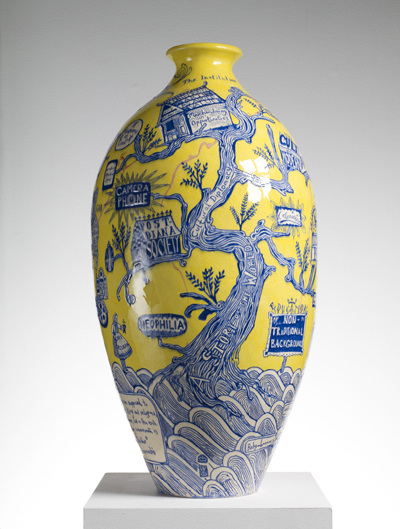

CHRIS BURDEN - GHOST SHIPS
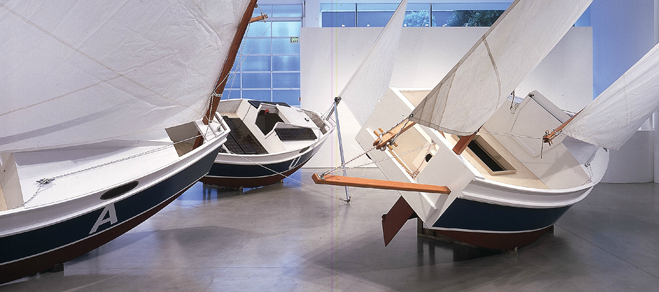
IF YOU GO DOWN TO THE WOODS TODAY...
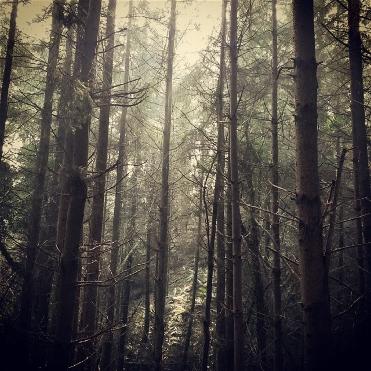
These woods are the fairytale-like world I used to walk through to get to the beach where I learnt to sail, they are still a magical place for me. I was walking through them and came down to the shore to look at a little bright yellow, plywood, wrecked cruiser. I also found some other stuff... I have always photographed, I get quite twitchy if I haven't any means of photographing with me, but I have never had more than a days formal training so I have been very nervous of exhibiting any of my images as 'Art'. I share them freely with friends and followers online but I have never printed any out and shown them in an exhibition. I have also not used my proper camera (a Sony Alpha 200) for ages as my camera phone is so good and easy to carry. But the day before I went to the woods I charged by battery. The light was so good and the boat so perfect for my project that I ran home and grabbed my proper camera and spent several hours photographing in the mud. I loved it. I really feel he images work in the context of the project, they are sad and silly, tender and absurd and personal but also I hope accessible to others. I am going to take the plunge and show them in the interim exhibition. It is after all supposed to be a chance to try things out. The images below are those taken on my phone, I will post the others later...

didn't think you still found dirty mags down the woods!
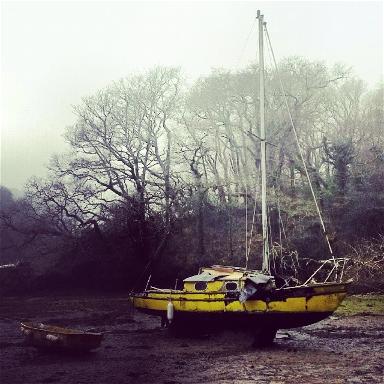
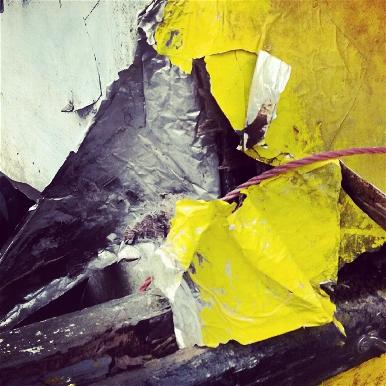
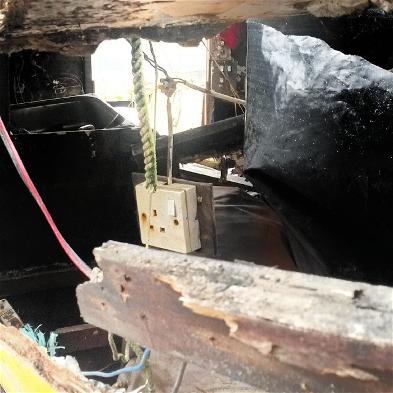
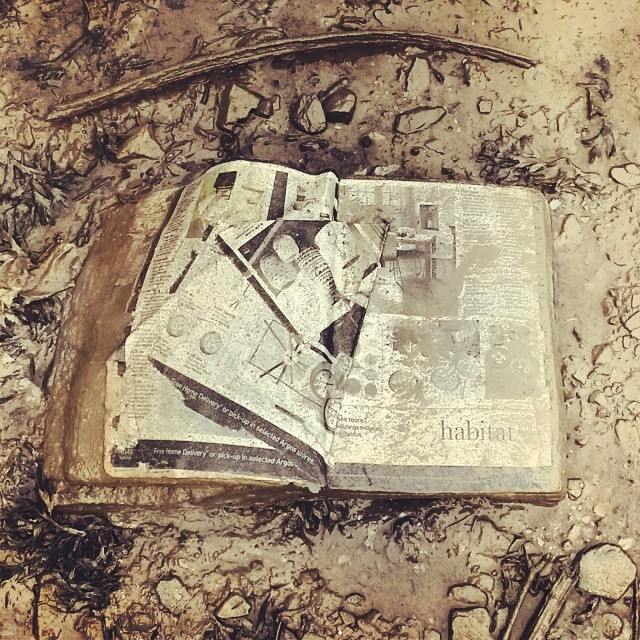
'NATURAL HABITAT'
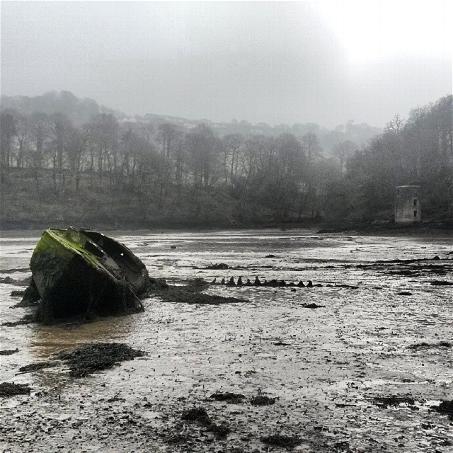
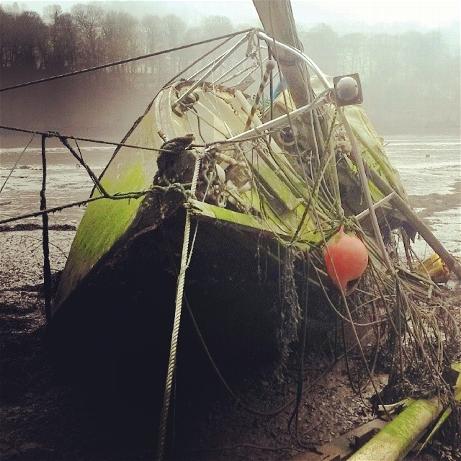
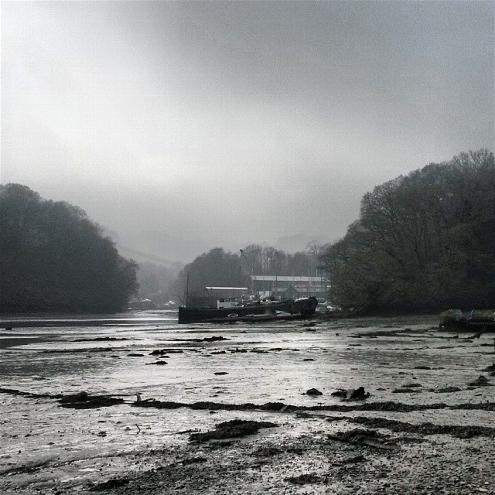
this is the boat yard where boats are born and repaired, elsewhere on the creek lie the carcasses and charred puddles of less fortunate boats.
'Of all things, living or lifeless, upon this strange earth, there is but one which, having reached the mid-term of appointed human endurance on it, I still regard with unmitigated amazement... and that is the bow of a boat.' John Ruskin 1850 from The Harbours of England quoted in 'The Levelling Sea' Philip Marsden, pg 249
HANDSEWNN, BEACHCOMED, PATCHWORK
I have been sewing the fabric I have found, mainly on Blackpool sands, the beach closest to where I grew up. I am not so good at sewing but I am getting better...
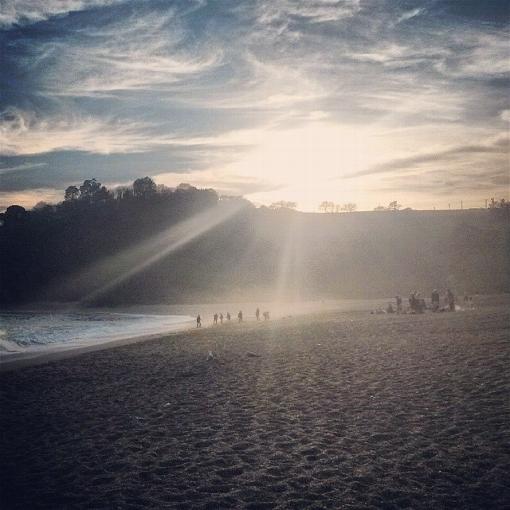
Blackpool Sands
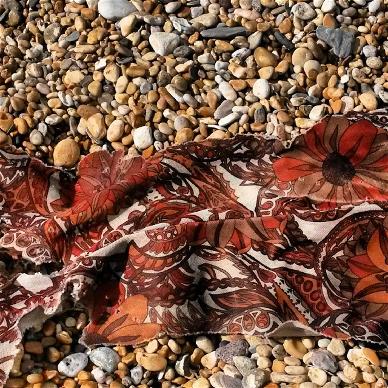
the fabric as I find it...
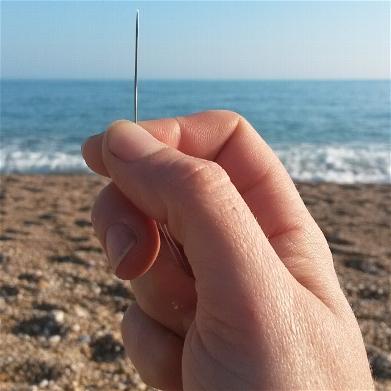
the needle and thread ready...
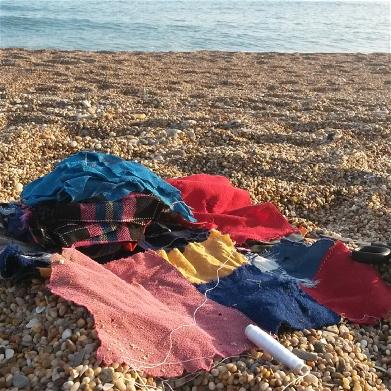
the fabric, thread and scissors, I cut the larger pieces up, for aesthetic reasons, I like to keep raggedy, sea-torn edges but some neater and squarer bits satisfy me. I see the whole piece like an abstract painting, I try and contrast or complement each adjoining or near piece.
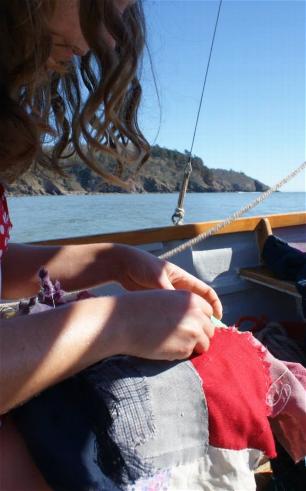
me sewing at sea in my little boat
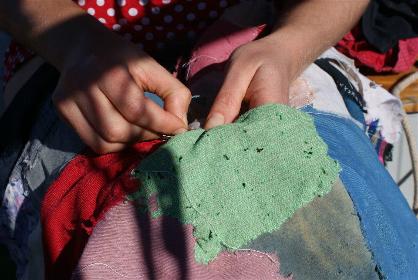
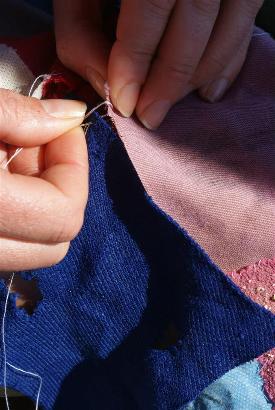
sewing in bed...
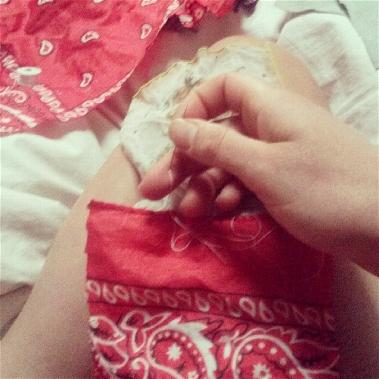
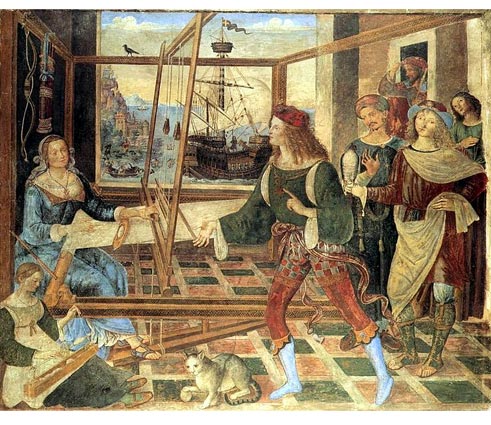
Here is 'Odysseus's Return', a fresco of 1509 by Pinturicchio. Note his ship in the background but also the women spinning and weaving. In Odysseus's long absence Penelope keeps her suitors at bay by weaving a shroud for her ill father in law King Laertes, (seems a bit insensitive) and says she will choose a new husband when it is finished, but each night she unravels what she has done. The name Penelope may mean 'weft' and 'face', a good name for a cunning weaver.
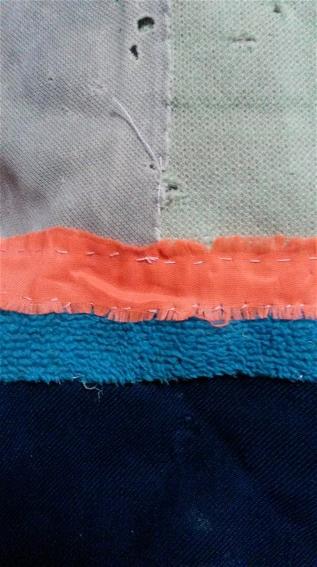
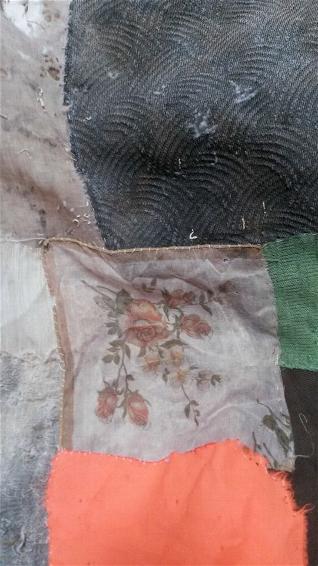
Close ups of the patchwork, I see them like abstract paintings, I try and contrast and complement the pieces with texture, style, pattern and colour.
I spent a day sewing in Porthmeor Studios in the space opposite Marc Dion's installation, 'The Maritime Artist'. It was a great opportunity to spread out the piece,normally I am working in bed, on my boat or on the beach or pub, so seeing the work spread flat was great, it was also interesting to see the un-sewn rags in a pile beside the sewn pieces, the contrast was marked, the creation of something out of rubbish was very noticeable. It reminded me of the girl Rumplestiltskin helps then threatens and her task of spinning straw into gold. It was also a real privilege to be able to work in that environment with all the history of art and fishing in this place as played upon in Marc Dion's installation. The sound of the sea is a relentless background rhythm. I was very pleased to be invited back in May to take part in the open studios event. I post more details nearer the time.
PORTHMEOR STUDIOS PROJECT PROPOSAL
KATE MARSHALL MA FINE ART AS CONTEMPORARY PRACTICE FALMOUTH SCHOOL OF ART
‘Part of the pleasurable melancholy of beachcombing comes from speculating about where the objects came from, what they were, how long they took to arrive.’ James Hamilton-Patterson ‘Seven Tenths’
As part of my MA I plan to spend several days during the May St Ives open studios hand sewing my patchwork cloth made from beachcombed fabric in the space opposite Marc Dion’s installation. The public are welcome to come and talk to me, especially to share stories of the sea; shipwrecks, strange tales and odd beachcombings…
The very fabric of the Porthmeor Studios is stitched together with recycled materials; mass concrete, ship timbers and pipes from old mine shafts. The studios are a unique fusion of fishing and art as celebrated in Marc Dion’s installation, ‘The Maritime Artist’. By working in this space I am seeking to embed my own work within the traditions celebrated at Porthmeor Studios.
The patchwork cloth is hand-stitched from fabric I find, mostly on Blackpool sands in Devon. I have been picking up the odd bit for years and they have remained stuffed in pockets or bags, but this winter I have been collecting bags full, the record breaking storms have provided me with a bounty. I have always been aware of the possible back-stories for each piece; how have they come to be in the sea, the patterns or material and the marks on them help to tell a tale, as I sew I like to muse about the narratives of each piece.
The cloth spreads and grows; it may be a sail, a blanket, a shroud, or a dress. Sewing might seem like a gentle, feminine, decorative process but the needle was one of the most important technological inventions in the history of mankind. Containers, clothes and boats were all sewn. Whilst it may be seen as a ‘girly’ craft today, there is still a bunch of hard-nut men wielding needles; fishermen. Nets still need to be repaired with large needles and thick thread and if you are at sea for months, a man needs to be able to make repairs to clothes or sails. Traditionally sailors made embroidered (more butchly called ‘crewel work’) decorative pictures. A sailor who had to be buried at sea would be stitched into a shroud of old sails, the last stitch passing through the nose, just to make sure he was properly dead, before he was committed to the deep.
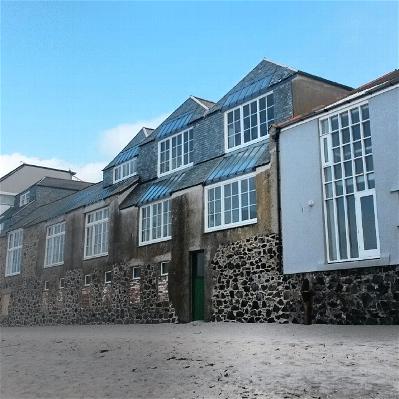
View from the beach of the studios
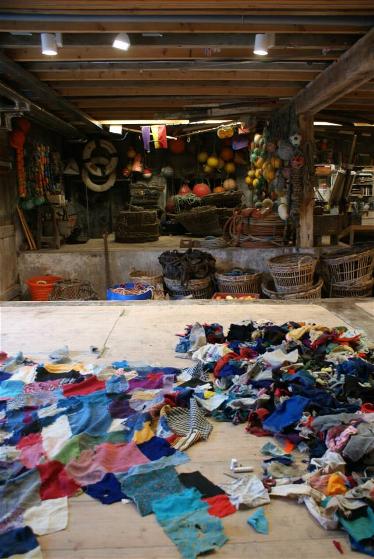
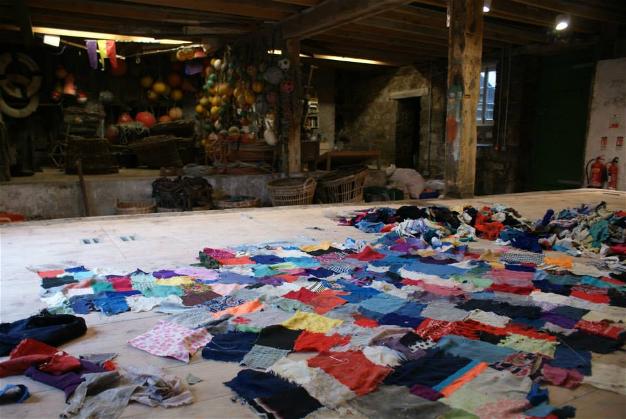
my work with Marc Dion's installation in the background
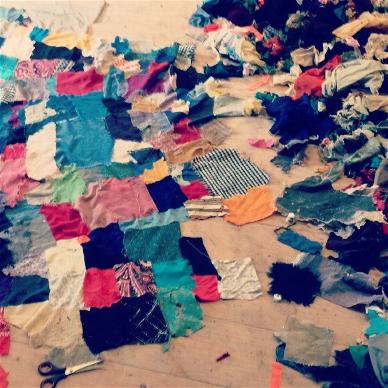
the rags seem to be making themselves into the patchwork, or the other way round!
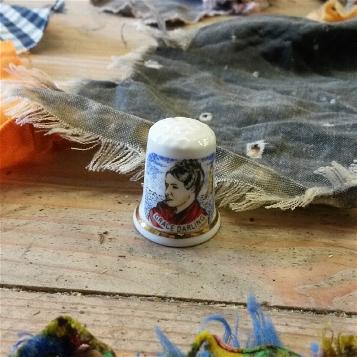
my Grace Darling thimble, it might be appropriate in style but it is another example of romance over reality, practically it is a rubbish thimble
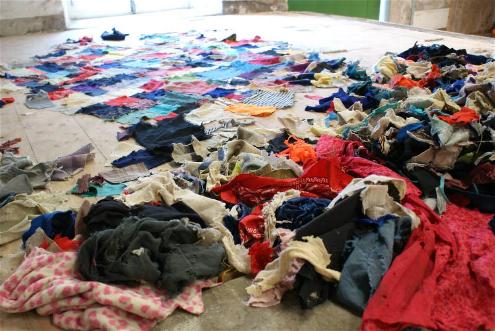
more of the rags and the patchwork
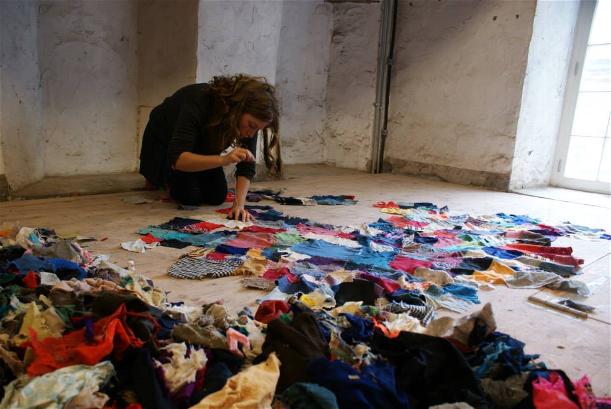
me sewing in Porthmeor Studios
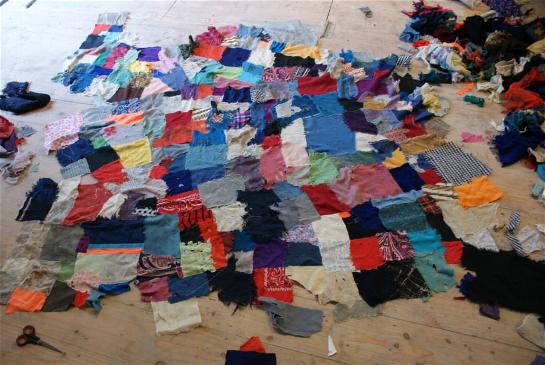
at the end of the day...
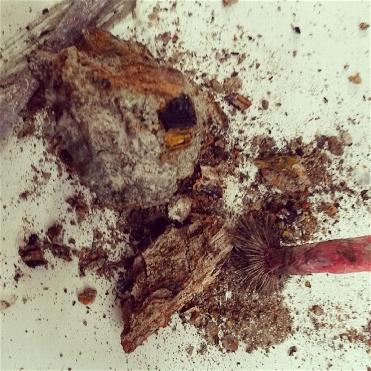
concretized burnt boat, mud, rust, ash, charcoal, I grind it up and mix it with white spirit and paint it on old sails.
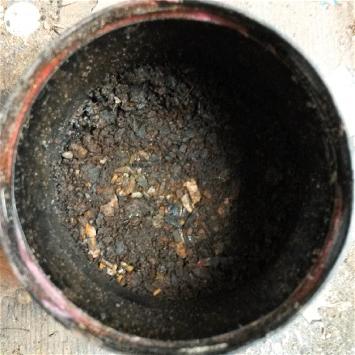
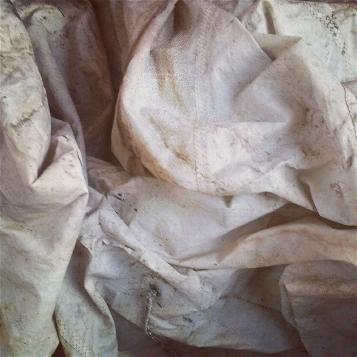
old sails salvaged from the wrecked boat I photographed
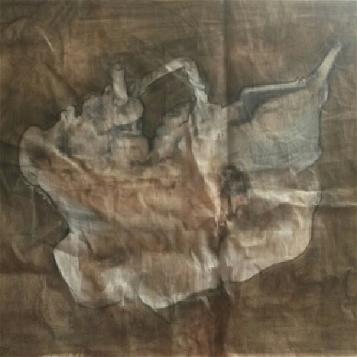
my painting of a shipwreck aquarium ornament on old salvaged sails painted with burnt wrecked boat and marine white paint and charcoal
CERAMIC FIGURE UPDATE
My ceramic figure project is developing, due to my inexperience and time constraints I have decided to produce 2 arms rather than a whole figure, for me this is a poetic compromise, the arms are to be placed so that 6ft (a fathom) is measured between finger tip to finger tip. This is the original way a fathom is measured. A fathom is a measurement of sea depth but is also the depth at which we are buried. The word comes from the old English, faedm, meaning to embrace. Technician Mark Lea has been very helpful, we have scanned one of my action men arms, it looked brilliantly absurd spinning slowly in the 3D scanner. The plan is to scan action man arms, then laser cut foam, then make a plaster mould from them and then press mould the arms in clay mined locally before glazing them with a white slip and cobalt blue hand-painted tattoo inspired images. They will then be sunk in the sea for as long as possible before I try and retrieve them, if nothing is left then so be it, the documentation will be the art. The programme produces beautiful apparently abstract 'drawings' live on screen, gradually a recognisable arm is rendered,the final image looks like a bronze relic from the sea, like the Dancing Satyr. The arm is a little too shiny for the scanner and the gaps in the detail make it look ancient and damaged, not good for using to cut the foam from but beautiful in the context of the project! So we have decided to use Mark's arms, as they are suitably muscled. We will enlarge them slightly to allow for shrinkage. Having experimented with handpainting the glaze I have decided that decals, a digital printed image from my drawings or other sources that is then laid over the glazed and fired surface rather like a transfer tattoo. This allows for multiple images and a much neater, easier and more predictable method that leaves less space for f#*kups. I also like the contemporary technological solution and the reference to tattoos in the method. This whole project embraces technology alongside ancient craft forms, I like the interaction between the two but also the way sometimes the technology f#*kups add humour but also sometimes rich-strangeness.
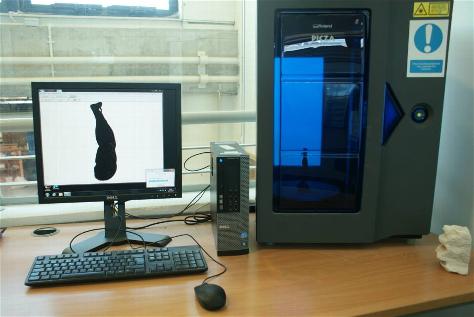
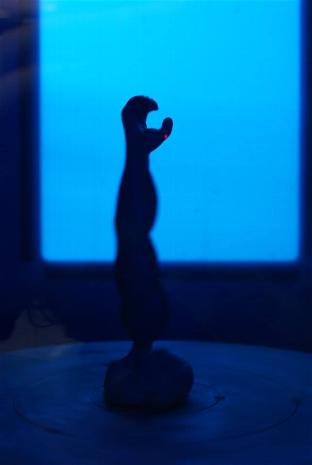
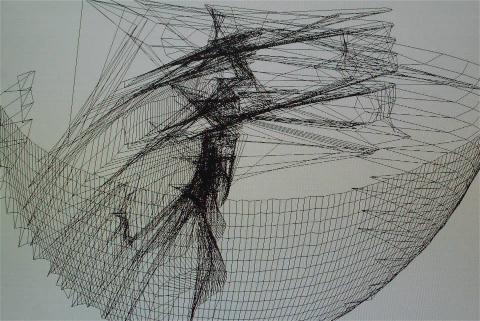
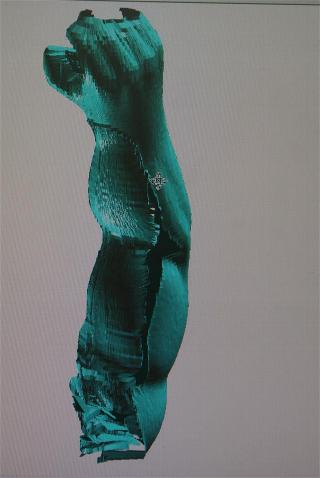
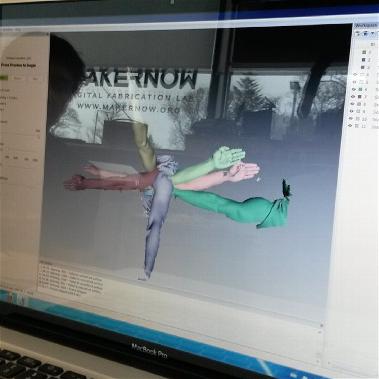
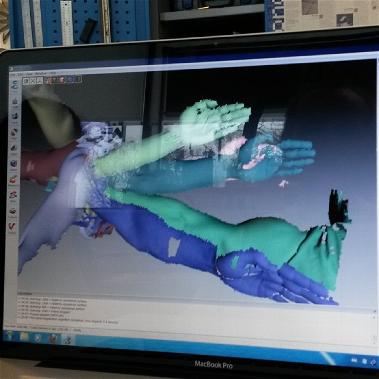
Mark's arms look like a Hindu god, we line up each scan to create the 3D image
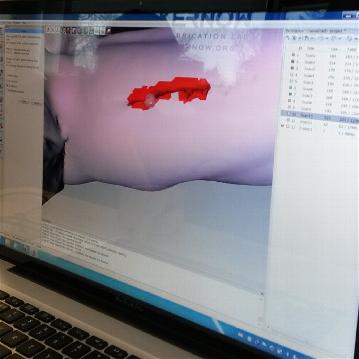
mending a tear in the render
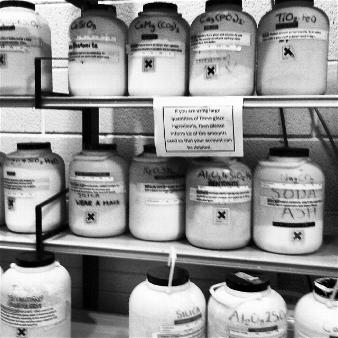
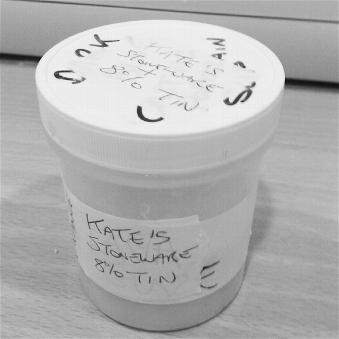
alchemical magic! Glazes I mixed up to experiment with
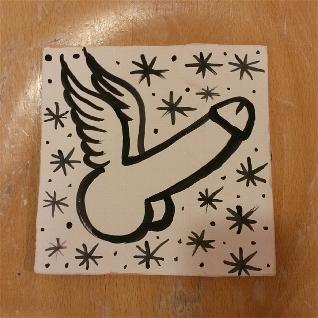
unfired handmade tile, local clay, stoneware and tin slip with cobalt design inspired by tattoos made popular after the rediscovery of Herculaneum and Pompeii and the phallic charms and graffiti found there.

and fired...
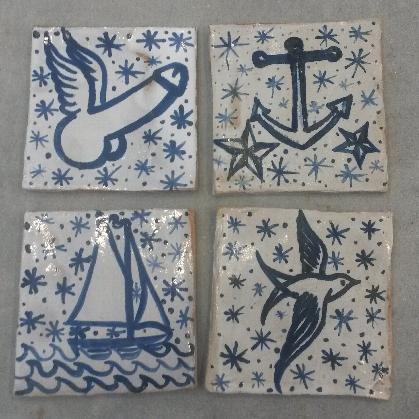
my trial tiles, the left are glazed with tin, they are brighter white and blue which I think I prefer, but there is something more of the body and skin about the right tiles. Having seen them fired I am reconsidering my decision to use digital decals, I think I need to do some more experimenting...
DIGITALLY ROUTING ARMS OUT OF INSULATION FOAM
(they will then be cast in plaster to make a mould to slab mould clay)
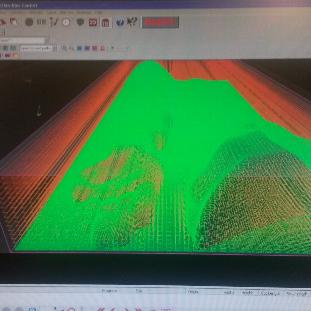
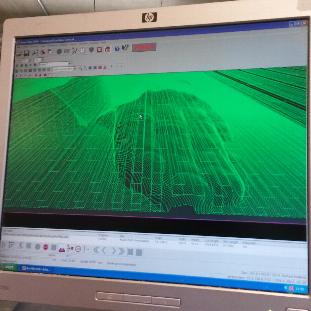
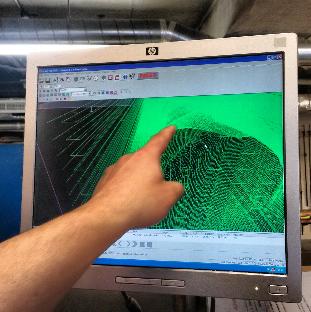
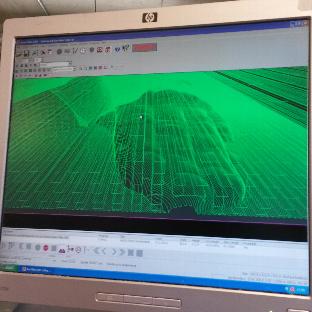
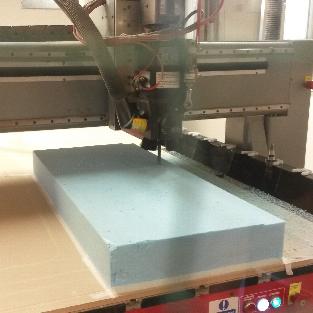
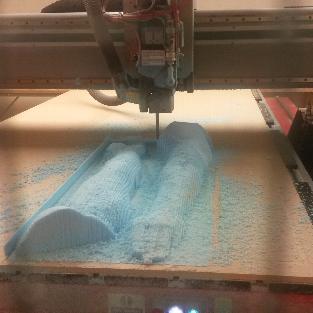
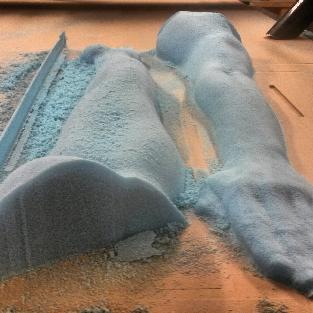
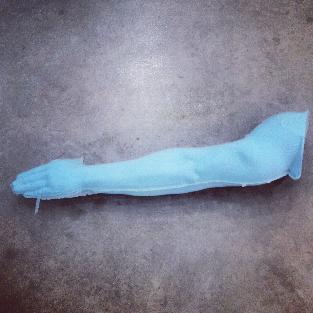
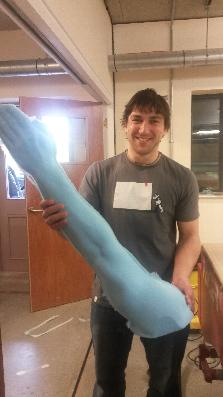
Mark holding his 20% larger arms! This allows for shrinkage in the kiln.
It is quite exciting having a physical, 3D object, partly as I normally work in 2D but also because I have been imagining the piece up till now, and with an actual object I feel like it is really happening! The other arm will be a mirror image, Mark will flip the file and set the router going. Next week I will be casting and hopefully slab moulding...
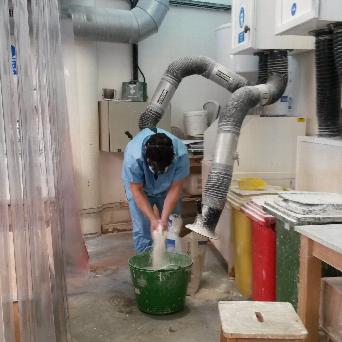
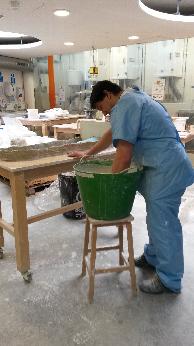
Gypsum plaster, or plaster of Paris, is produced by heating gypsum to about 300 °F (150 °C)
2CaSO4·4H2O + Heat → 2CaSO4·H2O + 3H2O (released as steam).
When the dry plaster powder is mixed with water, it re-forms into gypsum. The setting of unmodified plaster starts about 10 minutes after mixing and is complete in about 45 minutes; but not fully set for 72 hours.
A large gypsum deposit at Montmartre in Paris led "calcined gypsum" (roasted gypsum or gypsum plaster) to be commonly known as "plaster of Paris"
An interesting article on the Cornell University Library site about the history of plaster casting in art.
http://antiquities.library.cornell.edu/casts/a-short-history
A short and interesting extract:
Foreshadowing the later fate of cast collections, Romantic artists since the early 19th century had associated the white and often
fragmented plaster copies with death; casts were specters. And indeed, a few decades later the casts’ reputation generally started to decline. This was as much due to changing aesthetics in the arts as to socio-political circumstances.
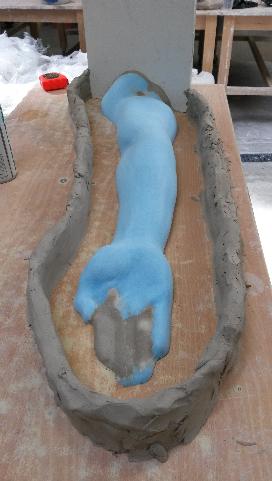
Here is one section ready to be cast in plaster, the whole process feels like that of entombing, each section looks like a grave, complete with tombstone, the act of making the clay wall is delightfully called 'coddling'. The art of plaster casting is quite sensuous, the plaster is mixed by hand and then the race is on to pour it over the arms before it sets, each section used 18litres of water so it is quite a substantial lump. The final process involves tamping and piling up, it has that strange sensation of not being fully liquid or solid, then within a few minutes it has gone hard, then it gets hot, proper hot. Apparently one unlucky boy got his hand stuck in a bucket of the stuff, much to the amusement of fellow pupils, teachers and even the emergency services, before they realized his screams were not that of panic but of pain as the temperature reaches 75 degrees and the poor lad's hand was cooked. The hardened casts are then hefted into the drying room; opening the door is like stepping into the tropics. Hopefully in a few days the arms will pop out leaving me with 4 moulds ready to start slab moulding with the clay. The clay 'coddle' wall is then picked clean of plaster and reused, the act of cleaning the clay is called 'fettling'. So far it has been a fascinating mix of digital and ancient techniques, partly very 'hands on' and partly very 'hands off'.
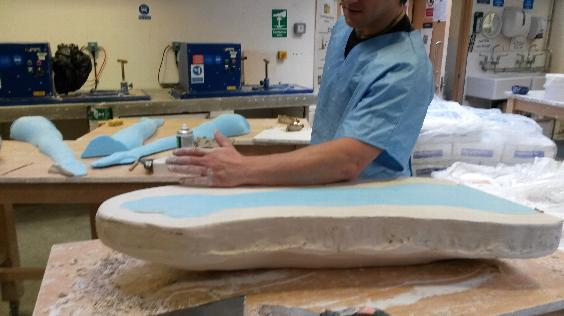
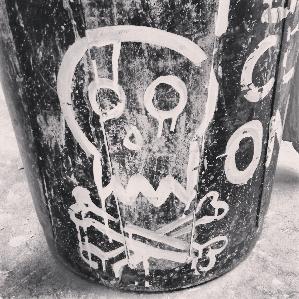
For the interim show, Angela has found a fantastic space down at Falmouth Wharves near the Fish Factory. It is perfect for us 4. I love the dirty, utilitarianism of it and of course the connections to ships and the sea. The photographs are printed out A3 on Somerset Fine Art Paper and look beautiful, I have framed them with the help of technician Ravi in perspex frames secured with bolts. The wall I have painted with a colour that was supposed to be sampled from the mud in the creek where I photographed, the Dulux colour scanner chap wasn't impressed when I tried to bring actual mud in so I photographed the mud with my phone camera, uploaded it to Microsoft Paint, isolated a pixel and then printed off a sample swatch and took it in to be scanned and mixed, the man thought I was mad. I was a little surprised when I started painting the wall and it appeared to be the lilac of a teenage girl's bedroom wall. It dried a more subtle shade but I quite like the way technology looses stuff in translation. It fits with some of the other aspects of my project. I wanted to make the dirt of the creek decorative, pretty and 'clean', it a process partly inspired by my BA dissertation on DIRT in relation to art.
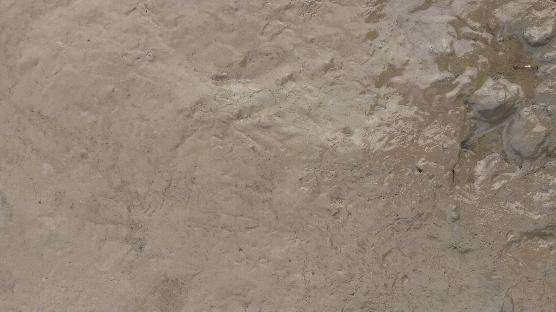
The mud photographed on my phone camera
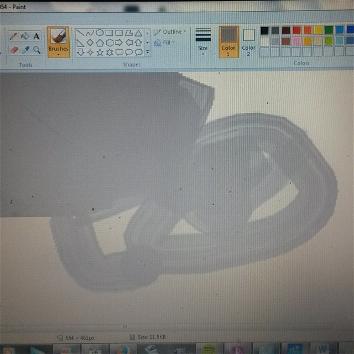
isolated pixel colour in Microsoft paint and 'painted' across screen

sample I printed out
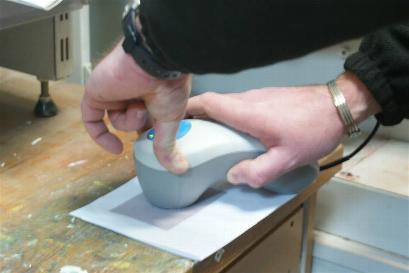
scanning the printed colour

the colour on the Dulux computer
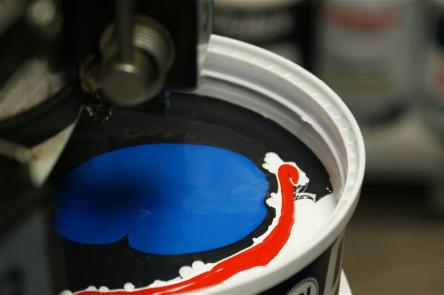
the colours squirted in
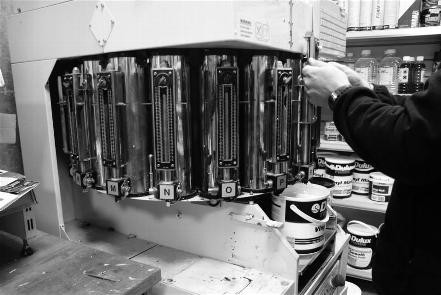
the magical machine...
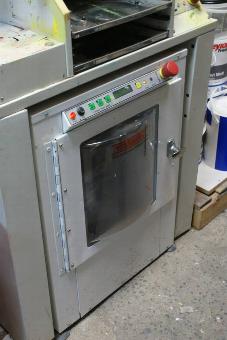
the machine that jiggles the can to mix the paint...
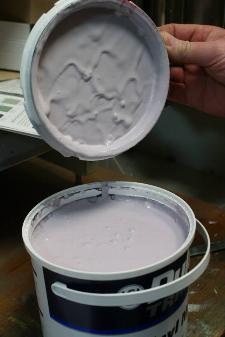
The mixed result!
CYNICAL OPTIMISM
MA INTERIM SHOW
A SHED
FALMOUTH WHARF
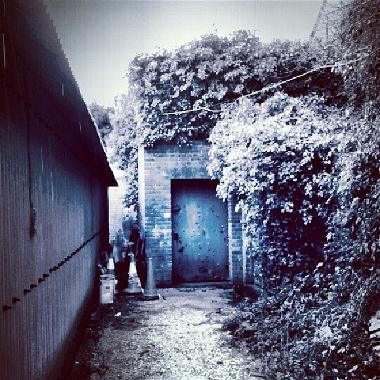
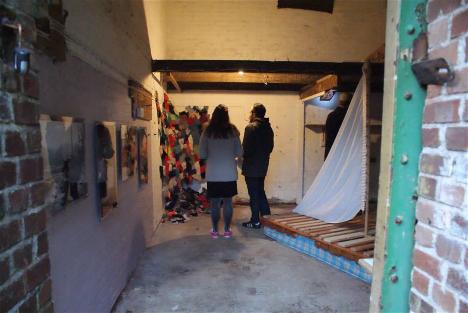
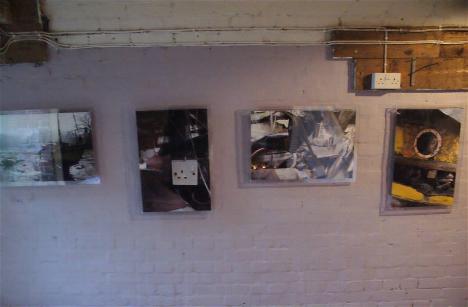
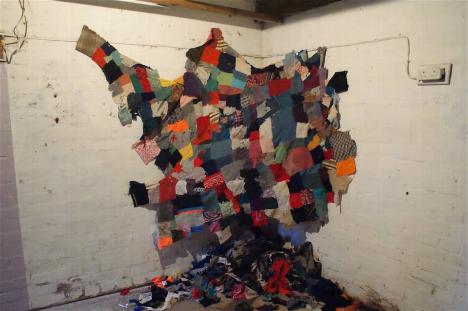
Angela Maxwell's painting

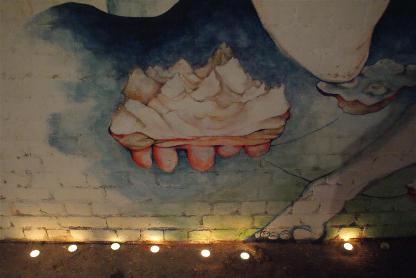
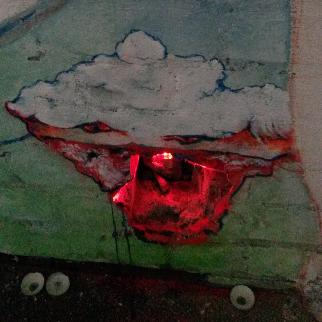
Orestes Mavroudis' Bed Boat
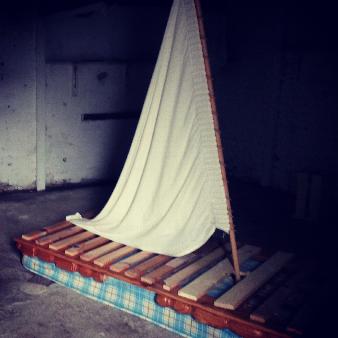
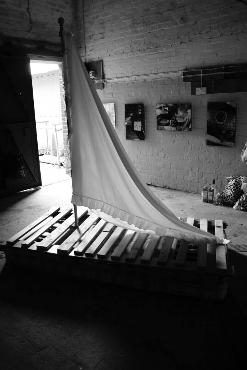
Phillip Maire's Stairway to Heaven
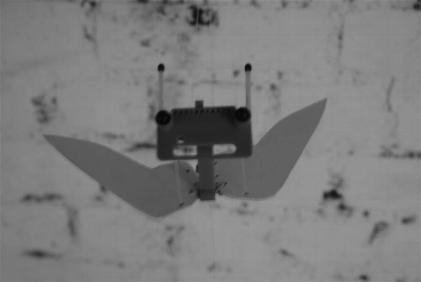
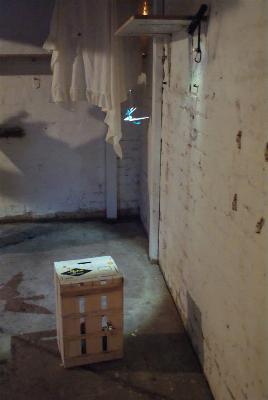
Orestes photographing Angela's painting
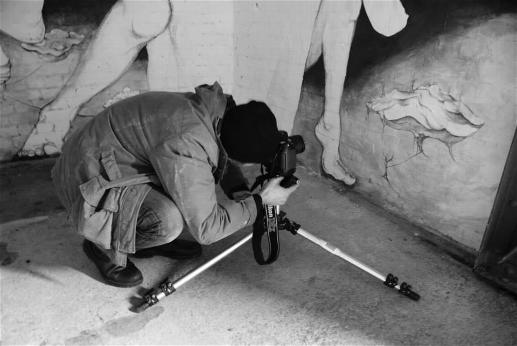
The show was bloody marvellous... the process was incredibly useful, the opening was very busy and people really engaged with us and our work. We couldn't have asked for a better evening. Despite the out of the way and hard to find location, the rain and it being the Oyster festival, there was a very good turn out and a real buzz. In all we estimate over 60 people turned up and a lot stayed and talked to us in depth about our work. The 4 of us also have a very good and interesting dynamic and shared threads of interest, our work feeds off each other and it was a great privilege to exhibit with the other 3. Personally it was quite a big milestone to be exhibiting my photographs for the first time, even down to the framing, perhaps not fully successful, but a pragmatic answer to the problem of displaying the work in a damp and lumpy walled space on a limited budget. I understand the reflective problems of perspex but in some ways it seemed appropriate considering the reflection in 'Self Reflective Shipwreck'. As I am considering printing the images on sails there will be new issues to do with exhibiting any in the final show. The other big thing for me was putting on an exhibition with no drawings, prints or paintings. As one of my family asked me "aren't you exhibiting any art work?" I know what they meant, to be honest I have been quite surprised at not having produced any 'final' drawings, paintings or prints but as I am always open to experimenting and responding to research it has just felt natural. Even so I have been questioning WHY? Why make art, does the art I have been making on my MA satisfy me? I think a big part of why I create art is the pleasure I take in the processes, I am definitely still getting that, specially in learning new ones. It might not be very communal spirited of me but there is also the buzz in looking at something and thinking 'I made that' but also 'I thought of that', despite all the technology and help I have had with the arms I still get that thrill. And even though photography is less 'hands on' I still look at the printed image and feel the same. Pride in authorship I suppose. Oh how vain. Whilst doing the mini Artist Writing course with Anna Kiernan I was reminded by how much the physical sensual joy of materials is important to me. Even though photography might be seen by some as the click of a button, the process of being there, standing in the mud, struggling to get the right composition without looking in the viewfinder was very physical. The images are carefully chosen to be printed on thick matt paper. The process of casting with plaster is fantastically sensuous, the act of collecting, rinsing, drying, cutting, selecting and sewing the beachcombed fabric is very stimulating; smelly, windy, and cold on the beach, then sewing whilst warm and cosy. What does worry me slightly is the idea of showing work that is just 'MA work', not sustainable outside the college and not representative of what I want to show from now on. This is something I will need to decide if it is an issue or not...
I will be drawing/painting on the ceramic arms but I also have an idea to paint imaginary portraits of the people I think might have worn or used the fabric I have found, it is a way I feel I can add to the sense of possible narratives the patchwork suggests, I am also trying to write short stories inspired in the same way. There is also a laser cutter I have started to consider using, maybe cutting or burning words, drawings and or photographs into the old sails...
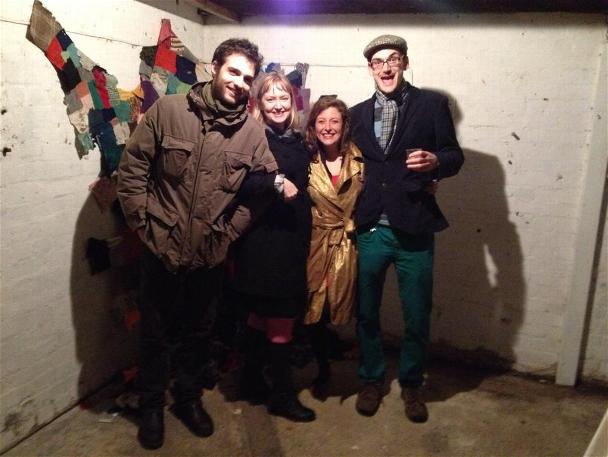
The Fab 4
MORE RELEVANT CONTEMPORARY ART
TRACEY EMIN'S NEON
From Aesthetica Magazine's blog review of Emin's solo show at Turner Contemporary, Margate:
'Emin and her art seem at home in Margate. Surrounded by a vast and gaping coastline, Turner Contemporary is a space in constant conversation with the sea. Emin manages to bring this relationship closer: her work floods the building with tumultuous greens, soft blues and the black of the inconceivable and immeasurable depth of the ocean. Upon visiting this exhibit, we do indeed find the artist lying at the bottom, hidden in her gouache nudes and exposed in her soft tapestries. Here in Margate Tracey is waiting for the sea, either love or death, to claim her.' - See more at: http://www.aestheticamagazine.com/blog/tracey-emin-margate/#sthash.D2rSNfON.dpuf
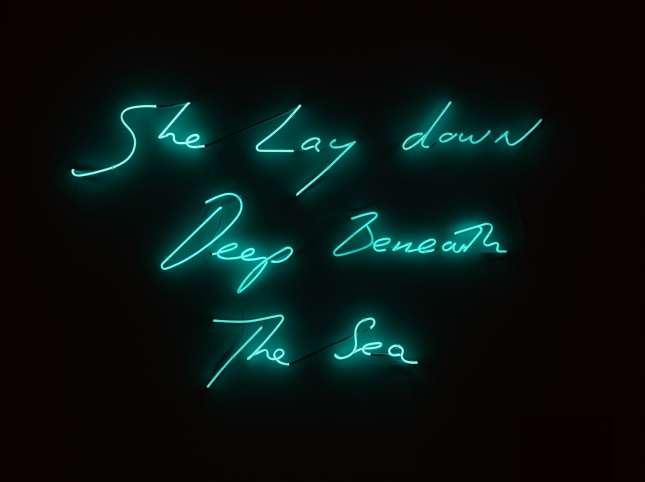
EDMUND DE WAAL
De Waal strikes me as an interesting artist for me to investigate at the moment, I admire his writing and his ceramics but also the way he chooses to display or frame his work and how this alters the way we read his work. His latest show at Margate's Turner Contemporary looks liek a great site specific installation and a fascinating use of tiny ceramics but in a grand scale setting. Here is a link to an article about his work in The Telegraph:http://www.telegraph.co.uk/culture/art/9570595/Edmund-de-Waal-on-his-new-exhibition-A-Thousand-Hours.html
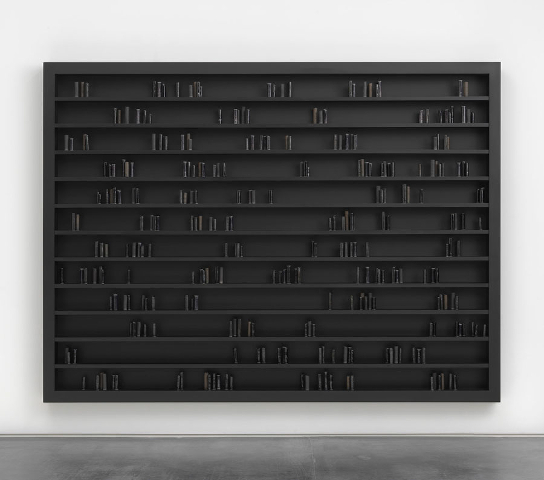
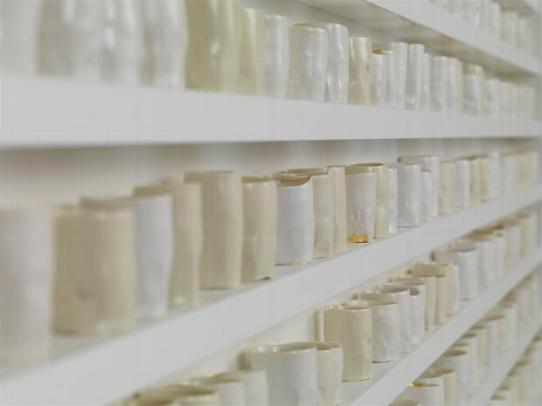
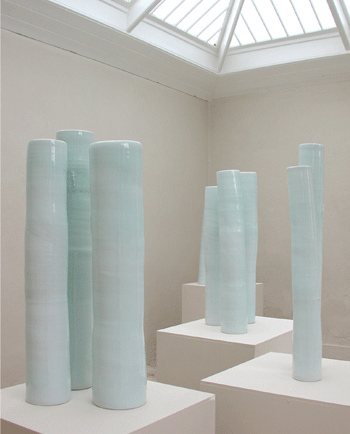
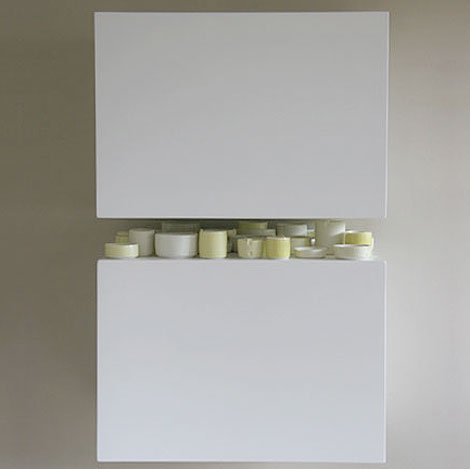
EDMUND DE WAAL 'ATMOSPHERE' AT MARGATE TURNER CONTEMPORARY
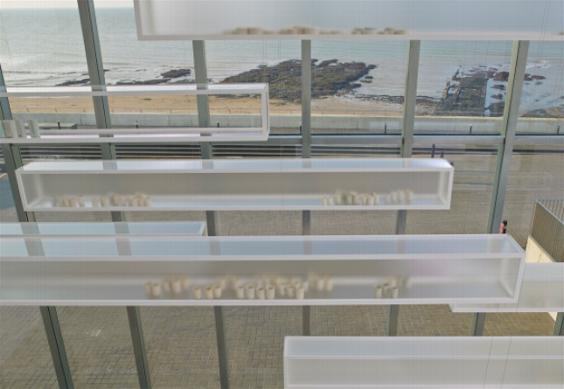
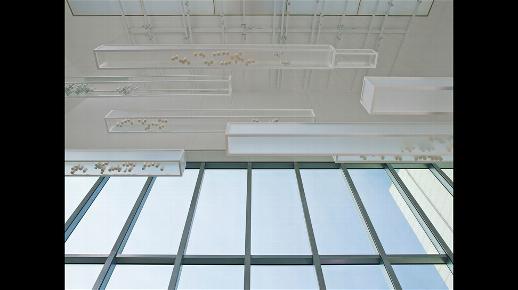
Gunnar Jónsson, Hringsól 4
(Wander around 4), 7 minute video loop, 2012
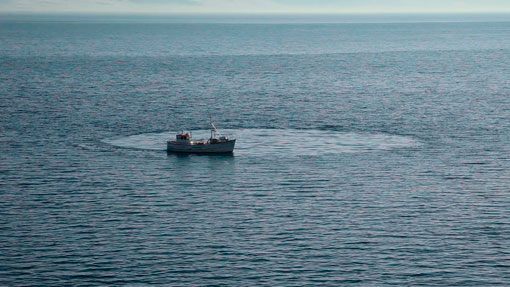
A trawler traces an endless looped circle on the sea. I rather like the sound of this video. The boat draws a circle on the sea, that perfect divine symbol of artistic genius, but of course it is only permanent in the video, after the boat stops the circle will fade till there is no trace upon the ocean, but although I found the old quote describing how boats that sink or boats that make it both leave no trace on the surface of he sea, now we are fucking up our planet so much the surface of the sea is damaged and marked either way.
LINK TO CAPEFAREWELL PAGE:
http://www.capefarewell.com/seachange/ditty-boxes-2/
LOTHAR BAUMGARTEN

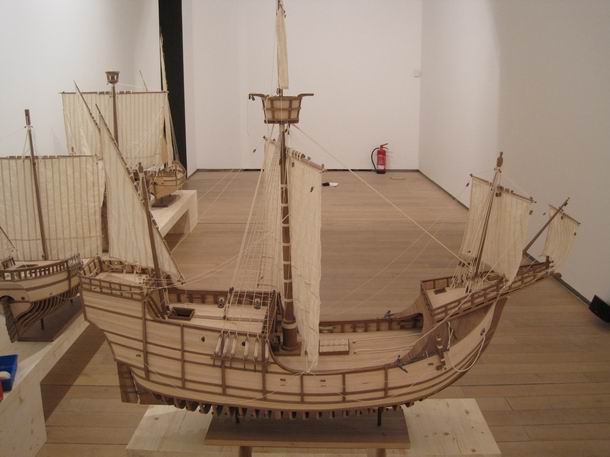
http://www.fundacionbotin.org/exhibition-lothar-baumgarten-los-aristocratas-de-la-selva-y-la-reina-de-castilla_fundacion-botin-795800474133.htm
DOROTHY CROSS
https://www.turnercontemporary.org/exhibitions/connemara
A sense of place pervades contemporary artist Dorothy Cross’s practice. Living in Connemara, a rural area on Ireland’s wild west coast, Cross creates sculpture, film and photography that delves into the relationship between living beings and the natural world around them.Like Turner and Constable before her, Cross’s work is inspired by the natural world. Cross offers strange and unsettling encounters between the body and the environment, creation and destruction, new and old. Many of her works incorporate items found on the shore, including boats and animal skins. The exhibition reflects on the unique surroundings of her
A sense of place pervades contemporary artist Dorothy Cross’s practice. Living in Connemara, a rural area on Ireland’s wild west coast, Cross creates sculpture, film and photography that delves into the relationship between living beings and the natural world around them.
Like Turner and Constable before her, Cross’s work is inspired by the natural world. Cross offers strange and unsettling encounters between the body and the environment, creation and destruction, new and old. Many of her works incorporate items found on the shore, including boats and animal skins. The exhibition reflects on the unique surroundings of her home, drawing connections to Turner Contemporary’s coastal location in Margate. One newly commissioned video explores a rarely accessible sea cave near Cross’s home, while another swims through Margate’s Shell Grotto.
Aestetica Magazine article on Dorothy Cross at Turner Contemporary:
http://www.aestheticamagazine.com/blog/15553/
LINK TO TATE VIDEO INTERVIEW OF DOROTHY CROSS ON SHARKS, ART AND GHOST SHIPS:
http://www.tate.org.uk/context-comment/video/tateshots-dorothy-cross
Some interesting video art projections, not sure I have used that phrase a lot.
http://www.frithstreetgallery.com/shows/view/video_projection_film/
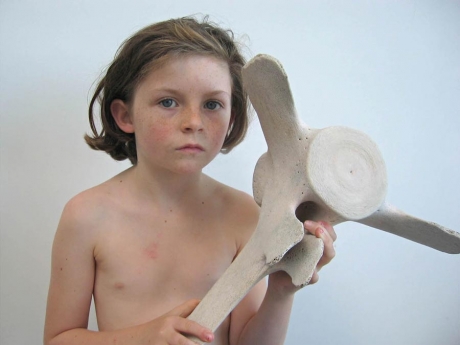
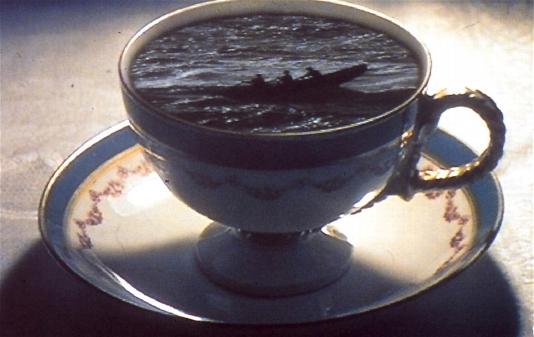
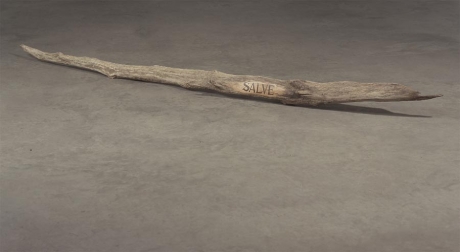
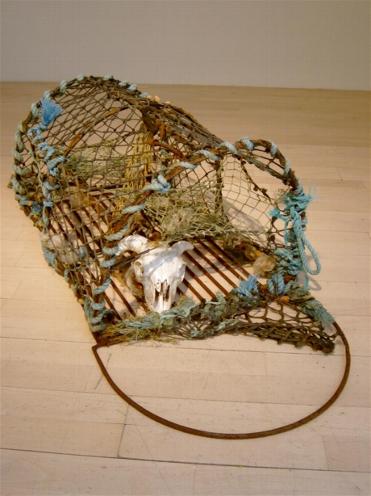
THE WRONG DEATH
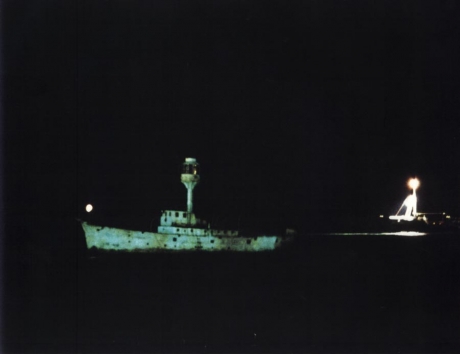
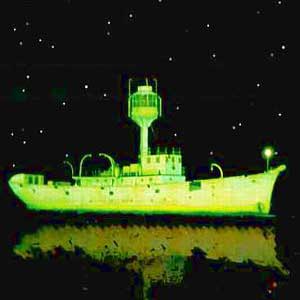
The Ghost Ship
by Dorothy Cross
The Ghostship is a personal homage to the many light ships which once marked dangerous reefs around the Irish coast, but have now all but dissappeared. The ship is covered in luminous paint and at nightfall is illuminated to glow and fade in cycles over a three hour period. Cross sees GHOST SHIP as honoring "the memory of the lightships whose presence was held dear around the Irish coast. The Role of the sea has now diminished for the Irish people and the view is inwards twords the cities." The original red, engineless lightships were moored to the bottom of the sea and and were crewed by men for weeks on end. Each had large white letters naming the rocks they marked - Daunt, South Roak, Conigebeg, Kish, Lucifer, Barrels, Codling. Manned until 1974, they have now been decommissioned and replaced by automated, electric buoys.
The project took place in Scotsmans' Bay, Dun Laoghaire, Co. Dublin, Ireland from 3-21 Feb 1999. nightly from 7.30 to 10.30pm
READ KRISTEVA ON ART AND MELANCHOLY
MORE BLOODY BRILLIANT TACITA DEAN WORK....
Her latest show s called 'FROM SEA TO SEA' here is a link:
http://www.azureazure.com/culture/tacita-dean-from-sea-to-sea
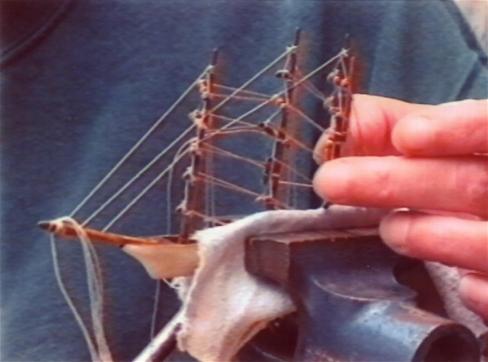
The majority of Tacita Dean’s work is made on 16mm film and How to Put a Boat in a Bottle is the only video that she has made to date. It was originally made to accompany her film, Girl Stowaway, in an installation made in 1995. It shows the process of putting a model of the Herzogin Cecilie into a bottle, resurrecting the destroyed ship and capturing maritime space – like a still – in the vacuum of the bottle. In contrast to the film, the video has a deliberate domestic feel and points to the difference between ‘fictional’ and ‘real’ time as well as the difference in image, process, content and structure. From Frith Street Gallery webpage
Michelangelo Pistoletto
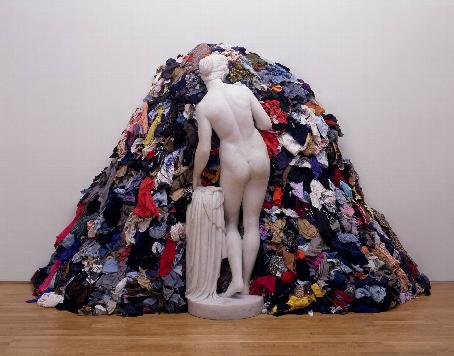
Venus of the Rags 1967-1974
'Pistoletto was interested in broadening the material language of Arte Povera, and in creating complex juxtapositions of modern and historical images and ideas. Venus of the Rags appears to bring together an iconic figure of classical culture with the detritus of contemporary society as the solid Roman goddess props up a randomly formed pile of gaudily coloured second-hand clothes. In fact the figure is based on a kitsch statue found in a garden centre rather than a genuine antiquity.' From Tate description of art work.
(Looked familiar! Interestingly looks like my unsewn patchwork and my sculpture idea)
'In the various existing versions of the Venus, or their re-installation, you can use the same original rags or you can change them, but they must maintain their multi-coloured and ruffled character. One of the plaster Venuses of 1967 was broken. My project was to put the pieces together, leaving the signs of breakage evident, like the tears in the rags.' extract from Tate website:
https://www.tate.org.uk/art/artworks/pistoletto-venus-of-the-rags-t12200/text-summary
PAST EXHIBITION 'AT SEA' - TATE LIVERPOOL - Would have been great to see!
http://www.tate.org.uk/about/press-office/press-releases/sea
MARIELE NEUDECKER
Magical.
link to her website:
http://www.marieleneudecker.co.uk/marieleneudeckep.html
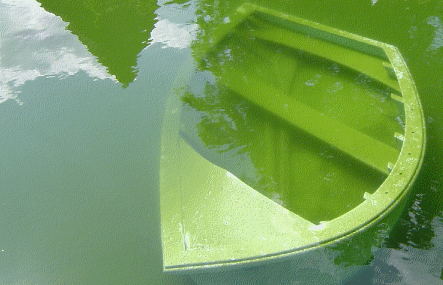
Deliberately distorted boat hen sunk to create even more optical distortion
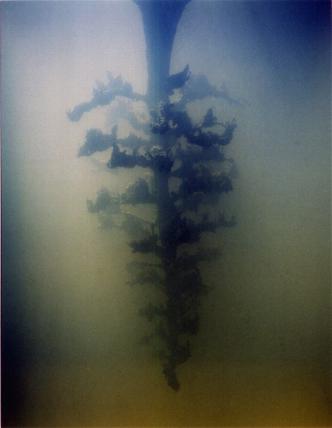
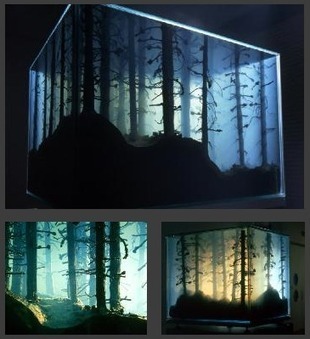
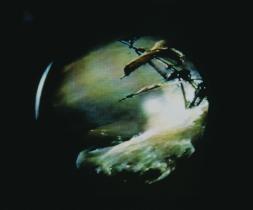
Heliotropion (Ship And Avalanche)
1997 ref ship:George Philip Reinagle (1802-1835)
A First Rate Man-of-War driving on a reef of rocks and foundering in a gale.
Oil on canvas
WHITNEY BEDFORD
http://www.starkwhite.co.nz/exhibitions/whitney-bedford-this-for-that.aspx
Really rather wish I had done these, bold colourful paintings of shipwrecks drowning in colourful seas of paint. Bet they sell well too...
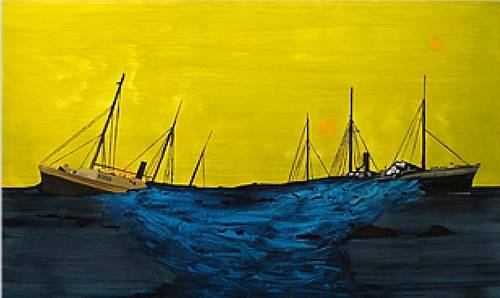
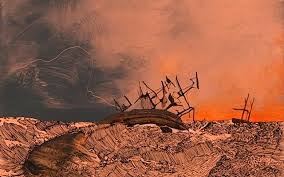

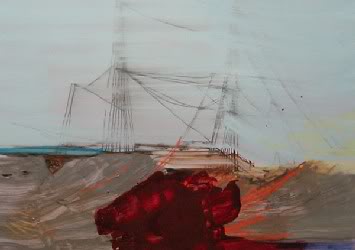

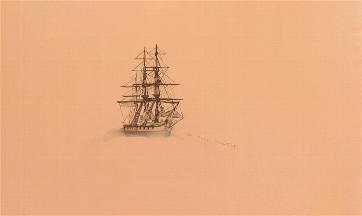
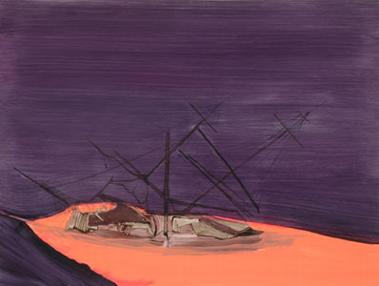
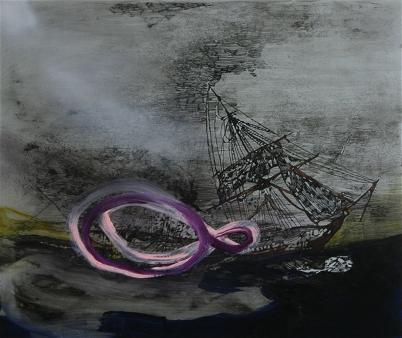
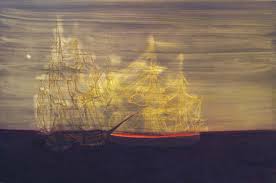
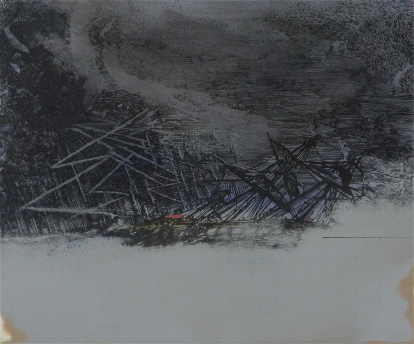
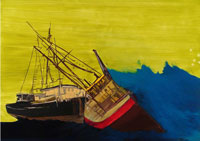
CORNELIA PARKER'S ENLARGED MICROSCOPIC IMAGE OF A PIN HOLE FROM CHARLOTTE BRONTE'S PINCUSHION
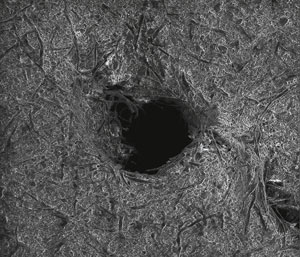
The domestic rendered sublime, partly through scale but also through knowledge of the tragedy and sublimity of Charlotte Bronte's life.
MARY ROSE MUSEUM VISIT
TITANIC EXHIBITION SOUTHAMPTON
RWA THE POWER OF THE SEA
EXHIBITION 'SHIP TO SHORE' IN SOUTHAMPTON I VISITED (at two locations)
Here is the description from the John Hansard Gallery:
Ship to Shore: Art and the Lure of the Sea is an intriguing visual feast for all ages. This new exhibition features paintings, artists’ films, photography, sculpture, prints and archival objects, evoking the vastness of oceans, th
e romance of sea travel and ship-to-shore communications.
It is the first time that Southampton, a hub for transatlantic travel, has presented so many internationally-renowned contemporary artists on this subject. You can explore Ship to Shore across two venues – John Hansard Gallery and The Pavilion at SeaCity Museum.
At the John Hansard Gallery you will discover extraordinary film installations by Isaac Julien and Catherine Yass (who also features at SeaCity Museum), the account of Chris Burden’s Ghost Ship and Thomas Joshua Cooper’s haunting sea photographs.
The Pavilion at SeaCity Museum showcases works by Tracey Emin, Tacita Dean, Yinka Shonibare MBE, Susan Hiller, Dorothy Cross, Steffi Klenz, Simon Patterson, Humphrey Ocean, Richard Long, Langlands & Bell, Mark Power, Claire Kerr and Zineb Sedira, juxtaposed with voice recordings from Southampton’s past, beautiful historic paintings, maritime instruments, posters, postcards, cruise ship memorabilia and other archival objects from the city’s rich collections.
Ship to Shore: Art and the Lure of the Sea is curated by Dr Jean Wainwright in collaboration with SeaCity Museum and the John Hansard Gallery, University of Southampton. The exhibition will be accompanied by a publication, with written contributions by Philip Hoare and Dr Jean Wainwright alongside a range of artist images featured in the show. The publication is financially supported by University for the Creative Arts (UCA) and is due to be published later in the year.
http://www.seacitymuseum.co.uk/?page_id=2646
http://www.hansardgallery.org.uk/event-detail/137-ship-to-shore-art-and-the-lure-of-the-sea/
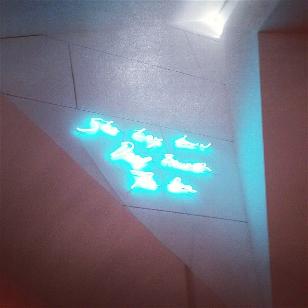
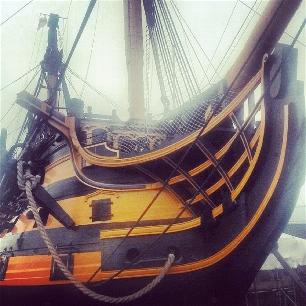
TRACEY EMIN THE VICTORY
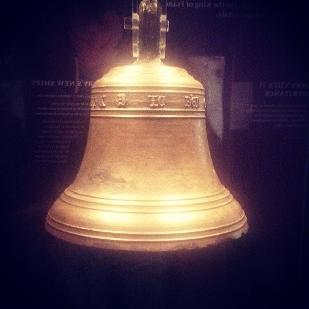
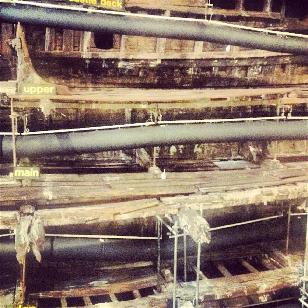
MARY ROSE BELL MARY ROSE HULL
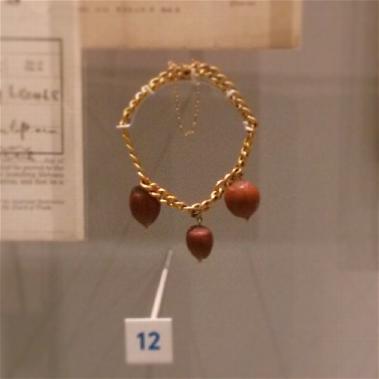
Boat sailing off into the mist, Dartmouth
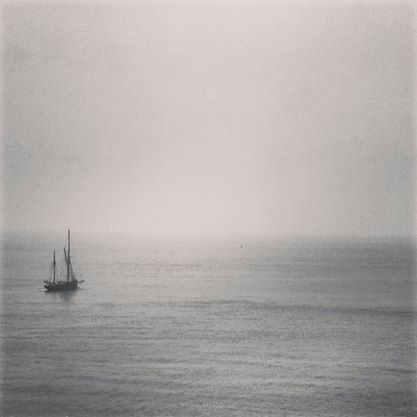
Photographs of the wreck at Penryn
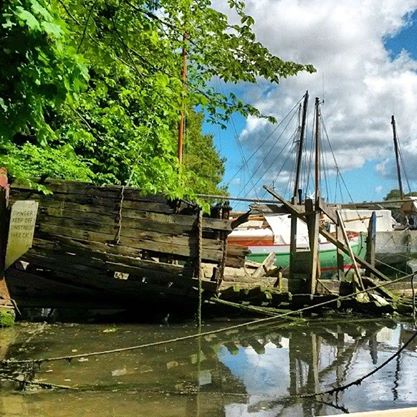
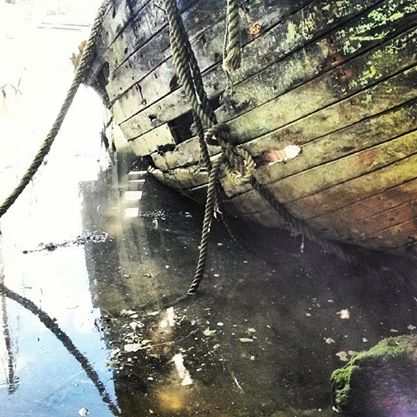
I have moved the boat to a floating mooring just off Flushing.
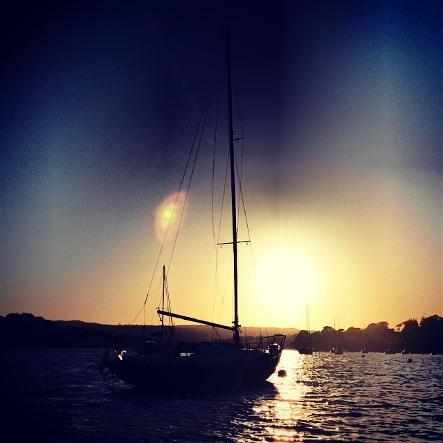
HAZLENUTS FROM THE POCKET OF A TITANIC SURVIVOR MADE INTO A BRACELET
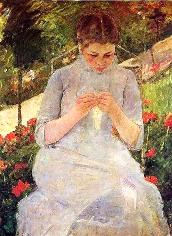
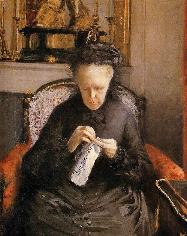
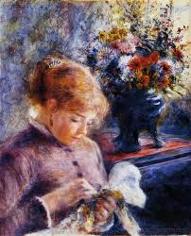
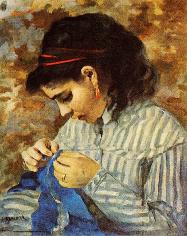

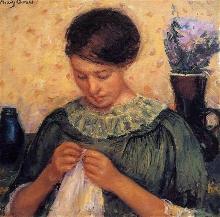
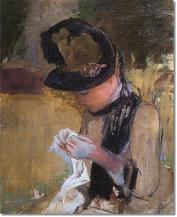
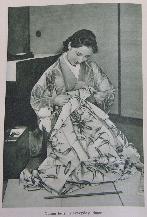
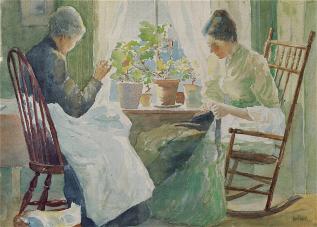


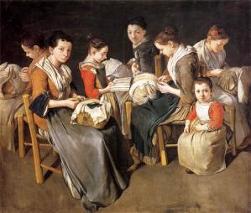
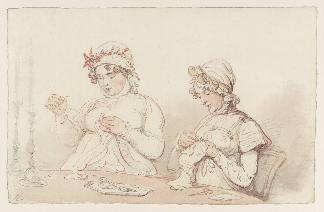
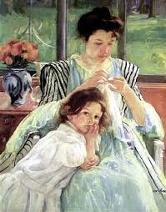
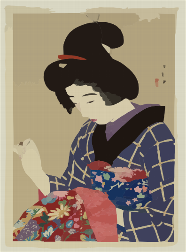

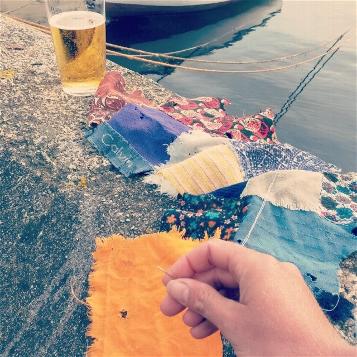
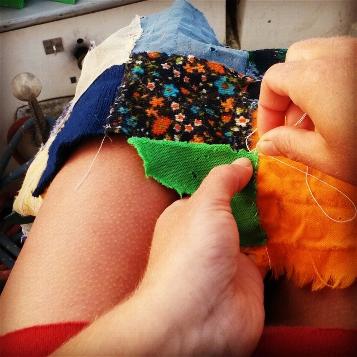
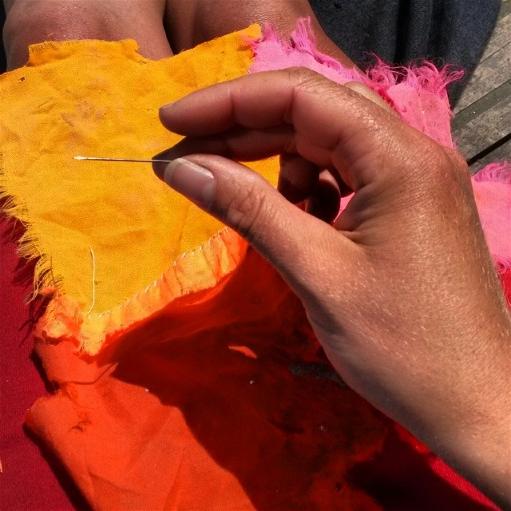
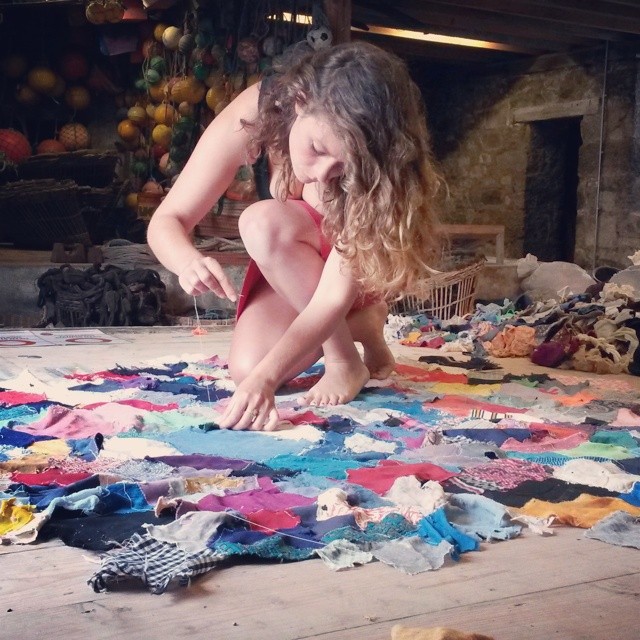
SEWING IN PORTHMEOR STUDIOS ST IVES
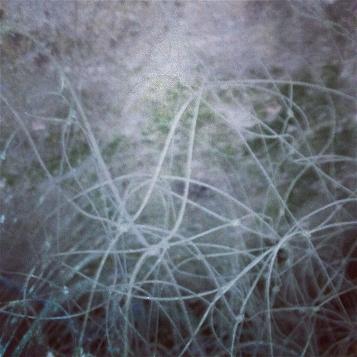
GOSSAMER FINE NETS OUTSIDE THE STUDIOS
(I want to use nets lie these to create a hammock for my arms when I sink them)
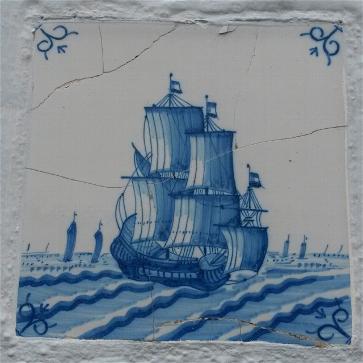
DELFT TILE IN FLUSHING ON A HOUSE CALLED 'DELFT HOUSE'
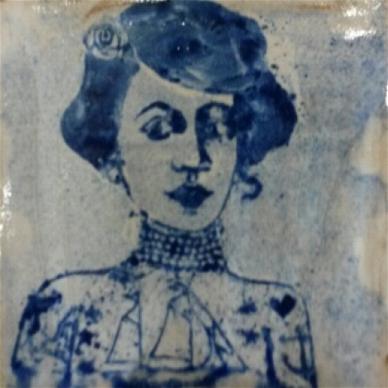
ONE OF MY TEST TILES
BRITISH FOLK ART TATE BRITAIN
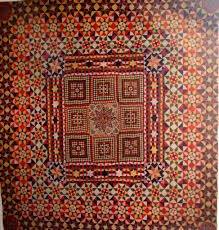
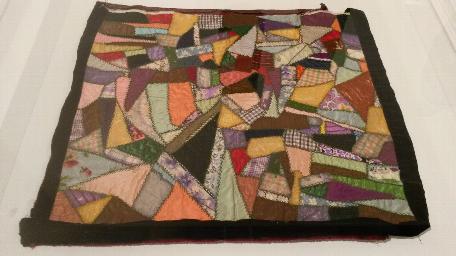
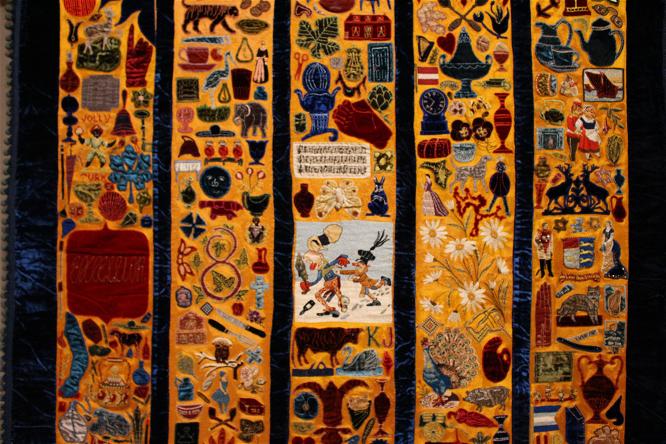
Embroidery made by an engaged couple the year before they were married... the sexual tension of each stitch is still potent.
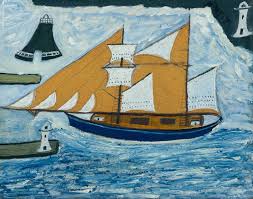
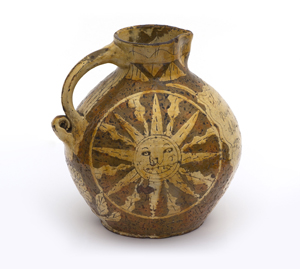
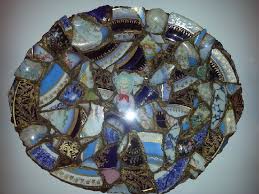
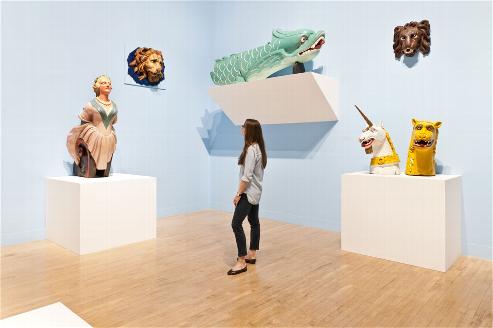
VIKINGS BRITISH MUSEUM
Far too crowded to get a real physical sense of much of the objects, as usual I found the simple items most affecting, especially the rivets used to hold the clinker planks of the boats together. Since my early days I have helped my father 'dolly up' the rivets on our boats, it made me smile thinking of Vikings doing the same repetitive task. A boat was displayed in ghost form under glass, simply implied by placing the rivets where they would have been in a hollowed out space. Looking on line I found an even more striking display of a Viking boat in Edinburgh where the rivets are suspended with clear thread, disturbingly and irritatingly similar to an idea I had had for exhibiting the rusty nails I collected from the burnt boat near me in Penryn.
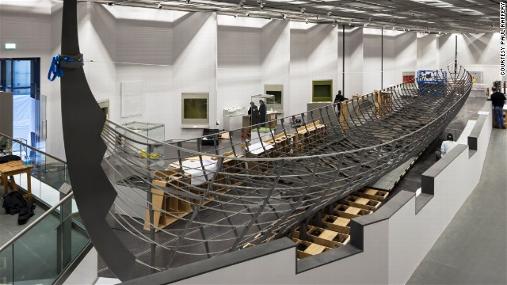
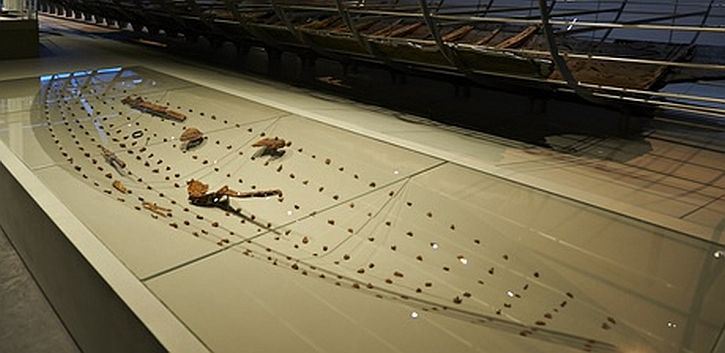
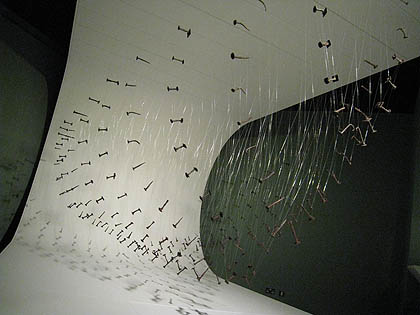
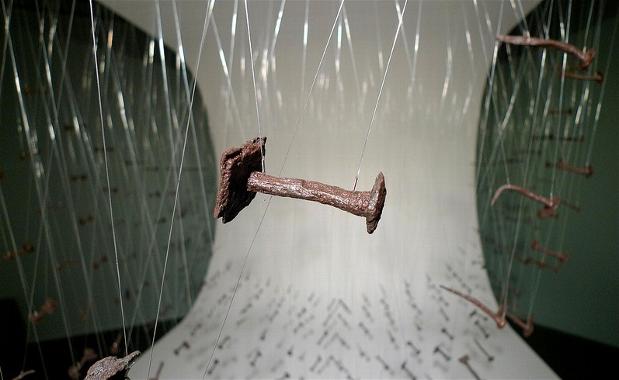
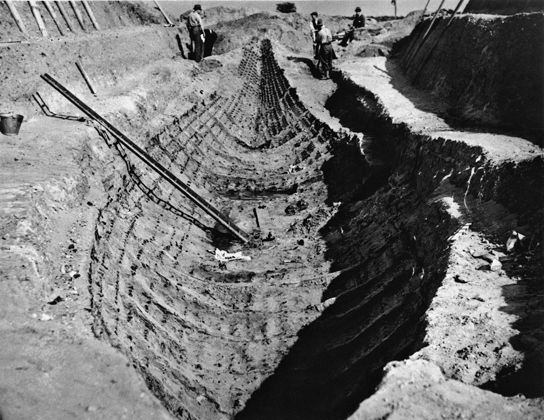
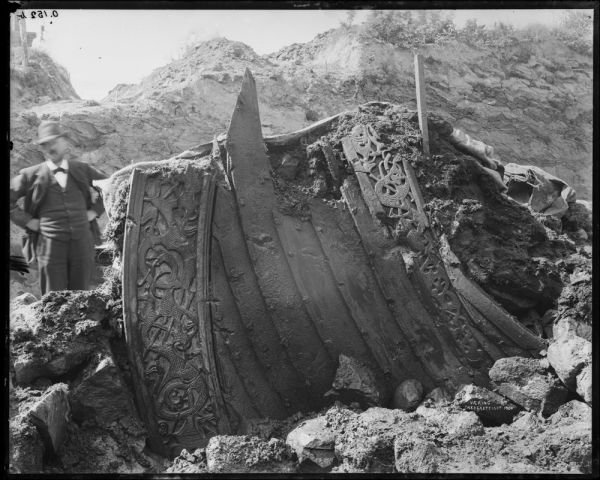
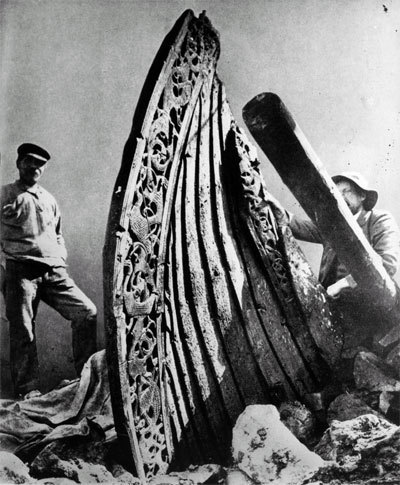
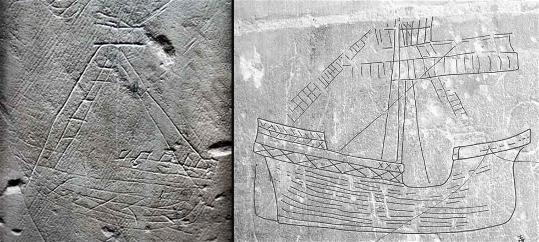
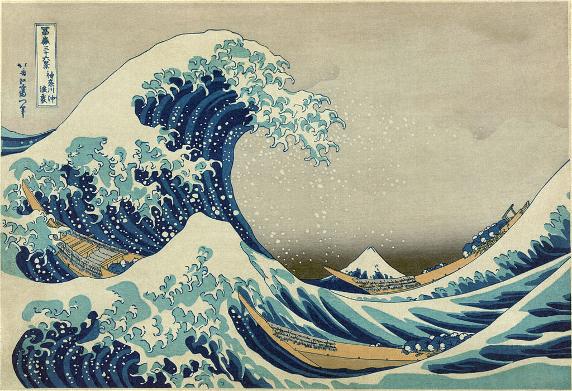
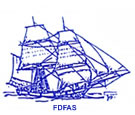
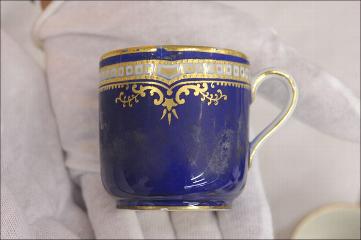
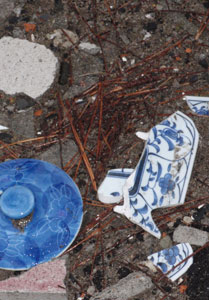

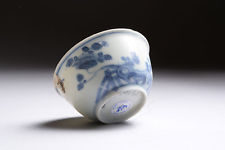

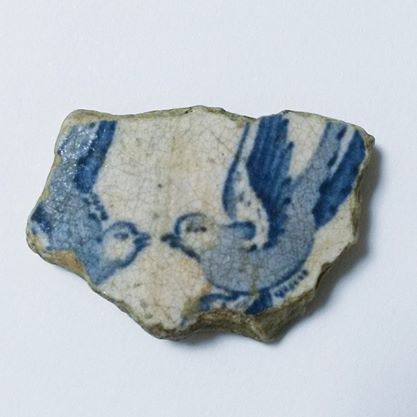
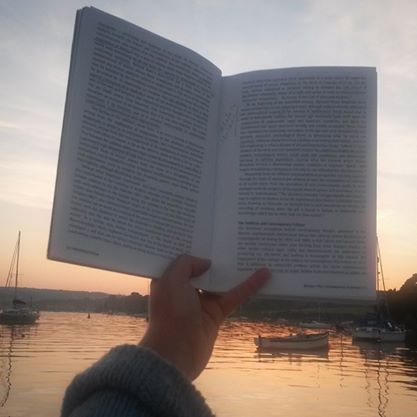
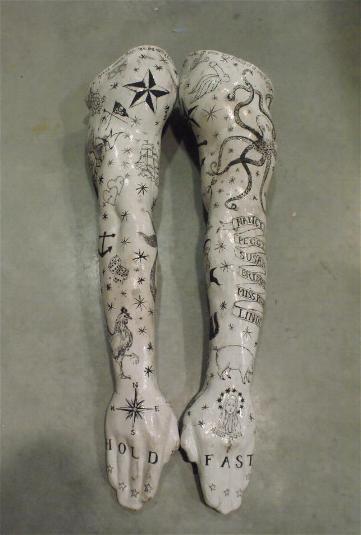
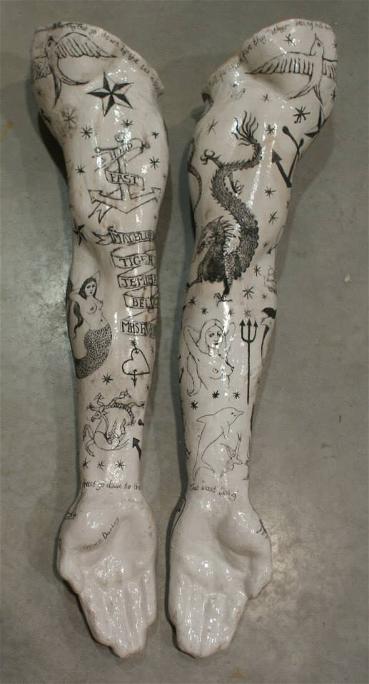
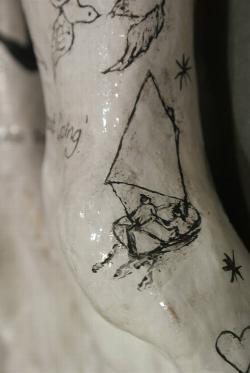
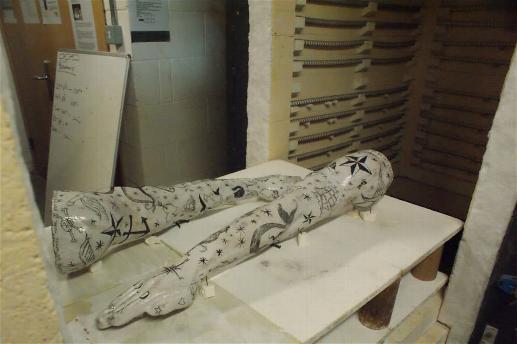
READY FOR THE FINAL FIRING...
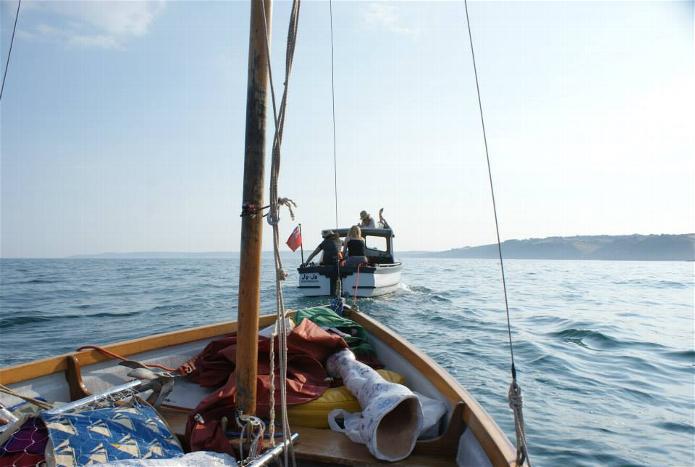
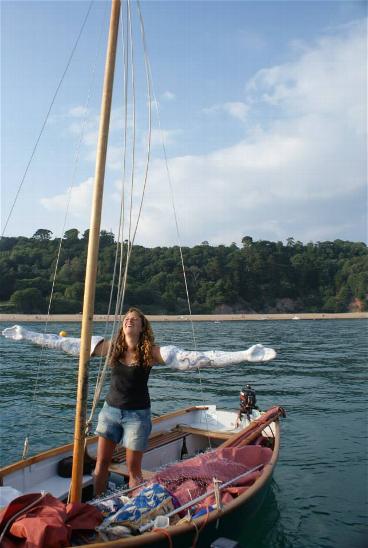
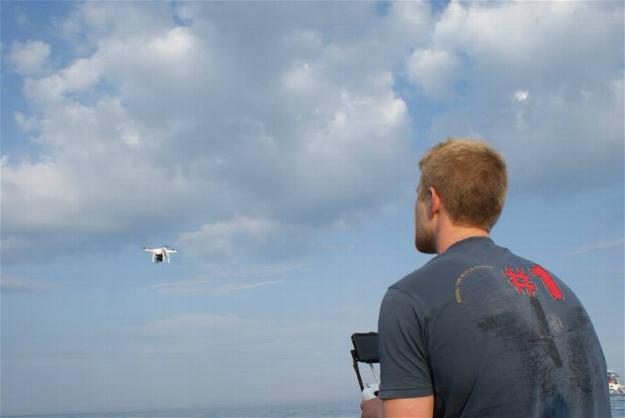
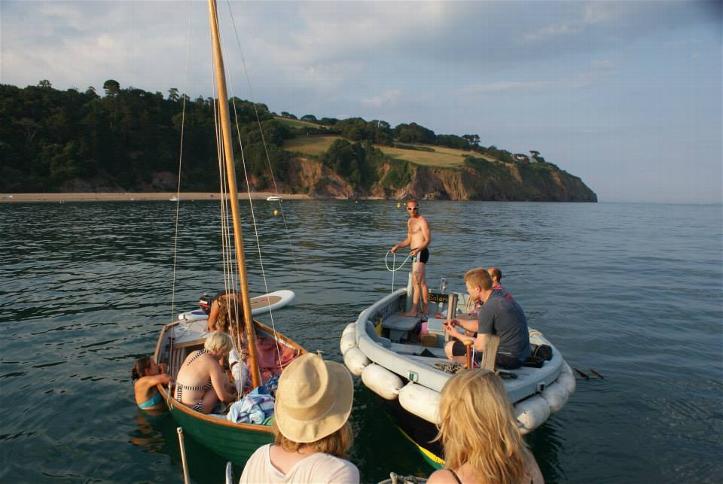
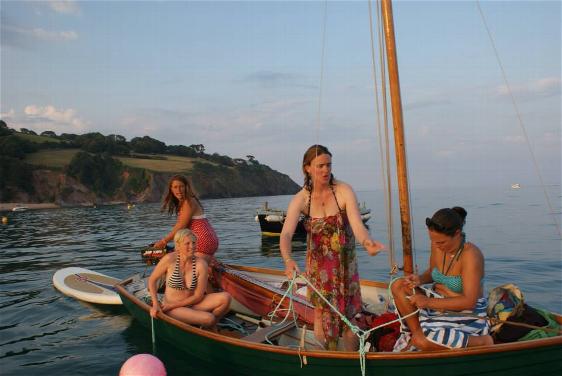
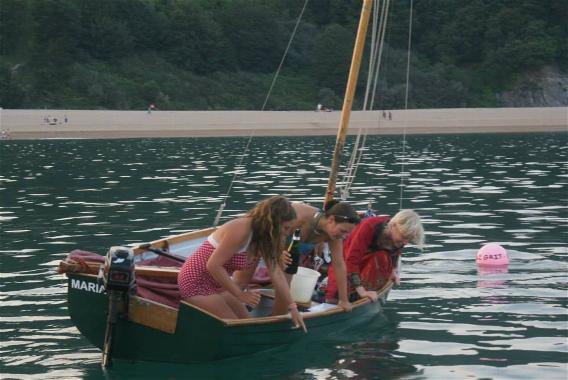
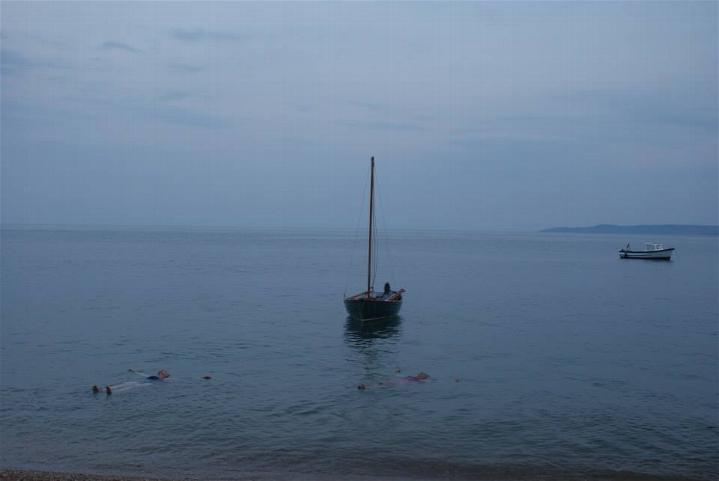
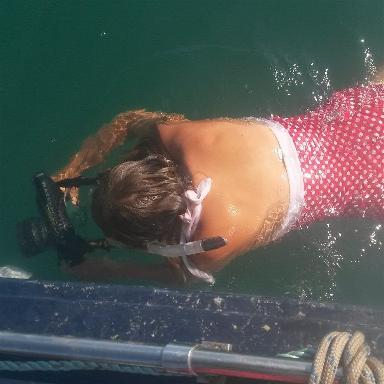
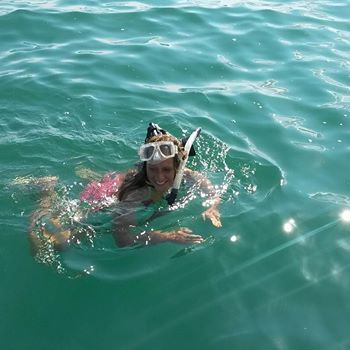
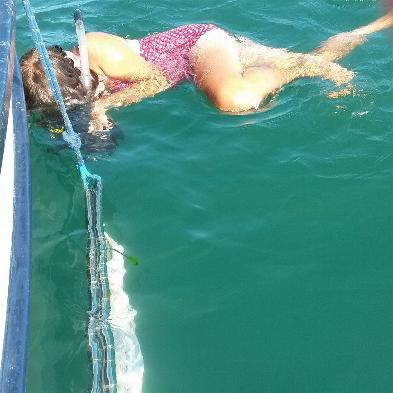
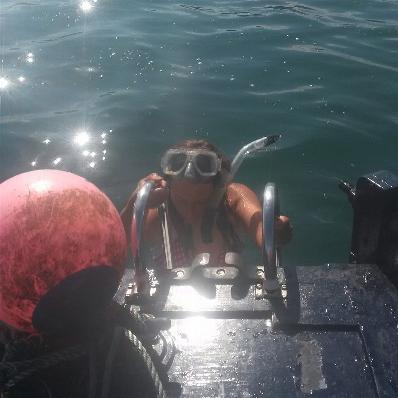
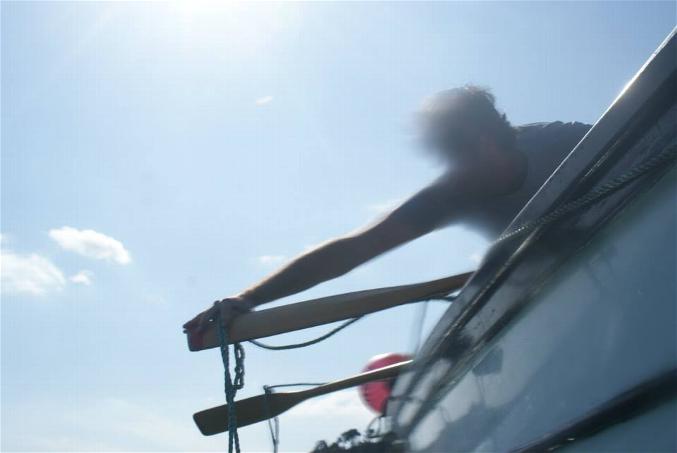
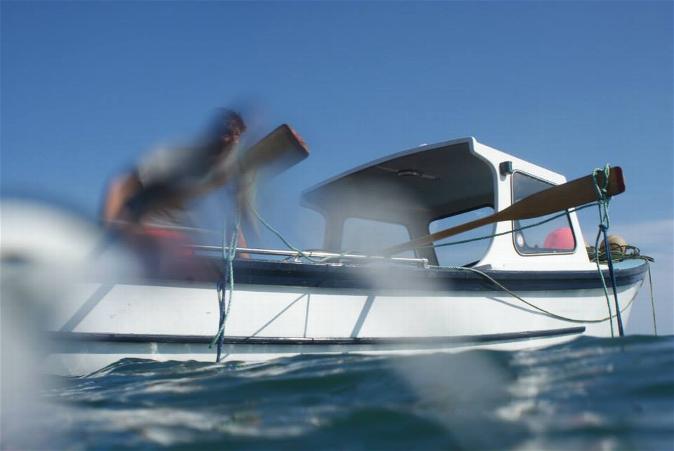

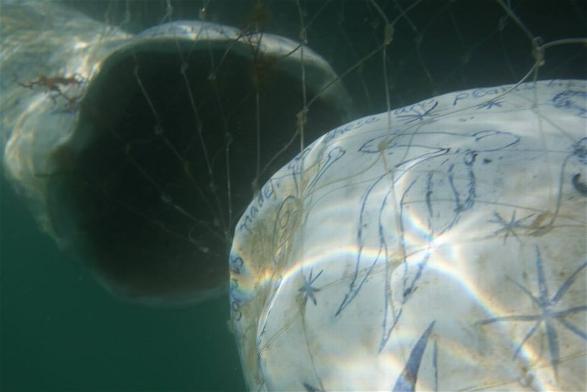
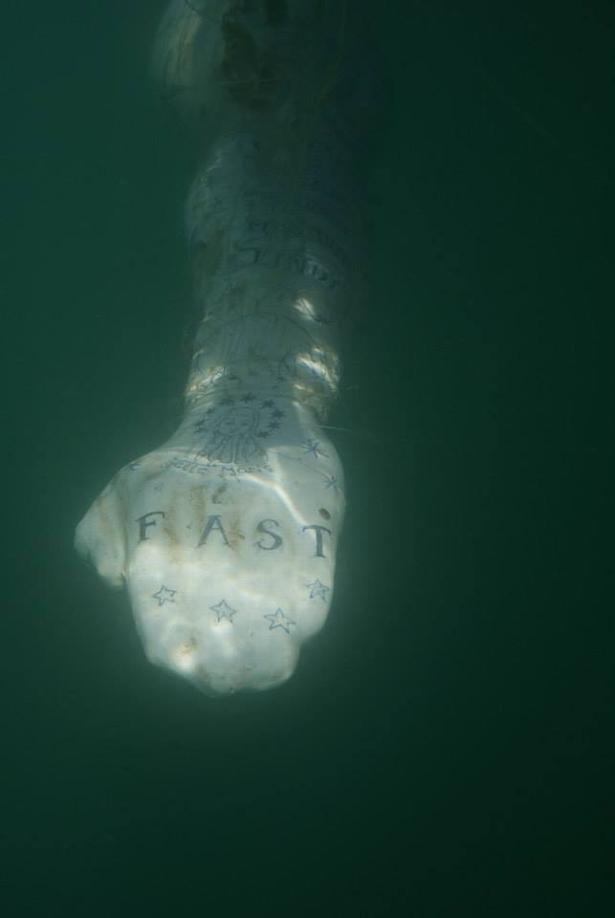
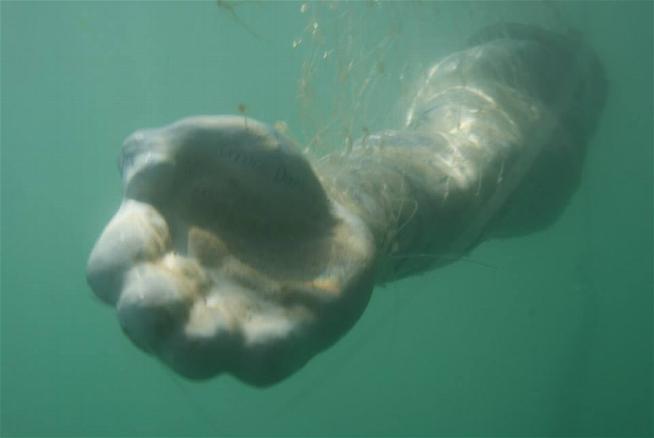
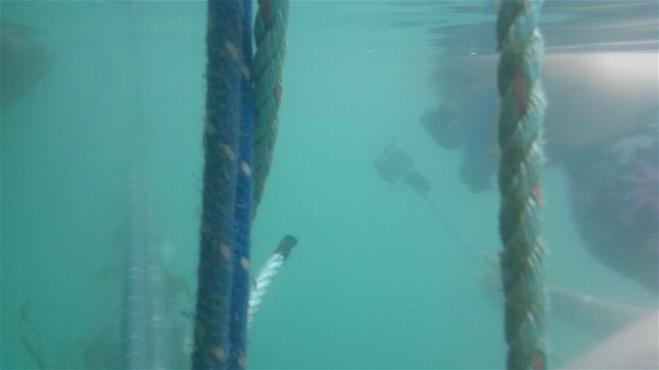
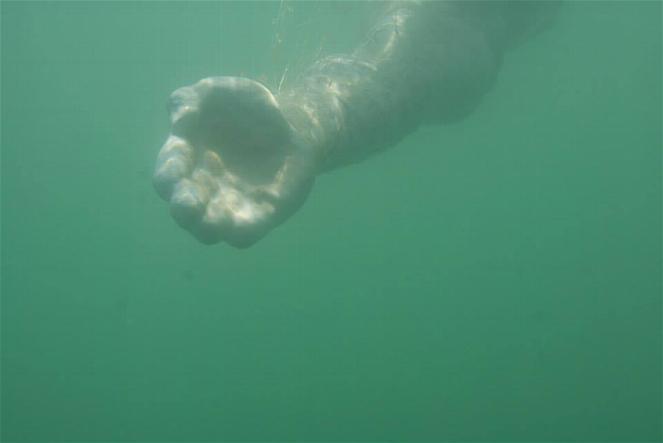
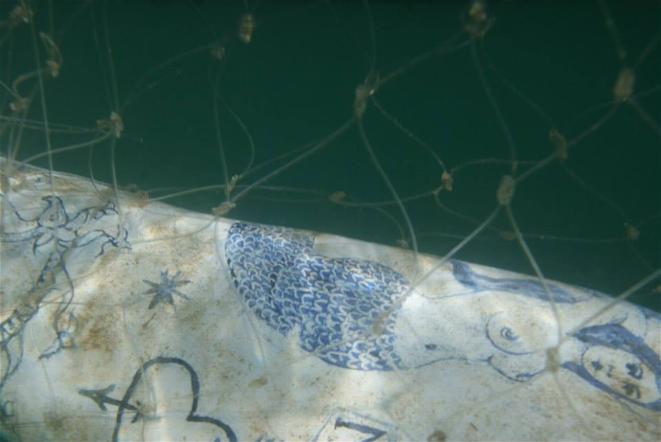

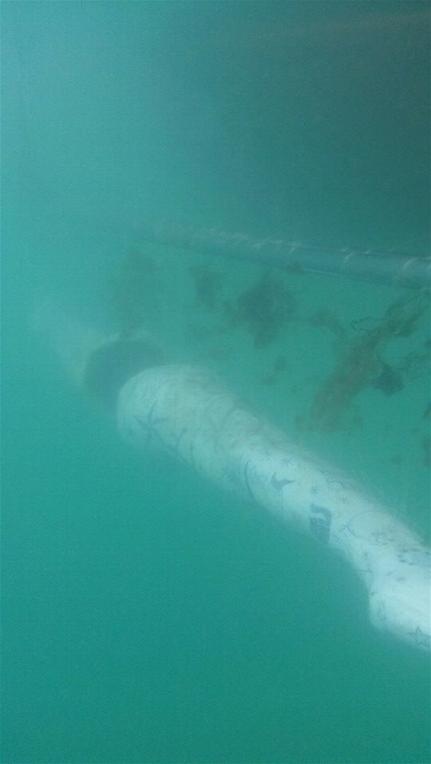
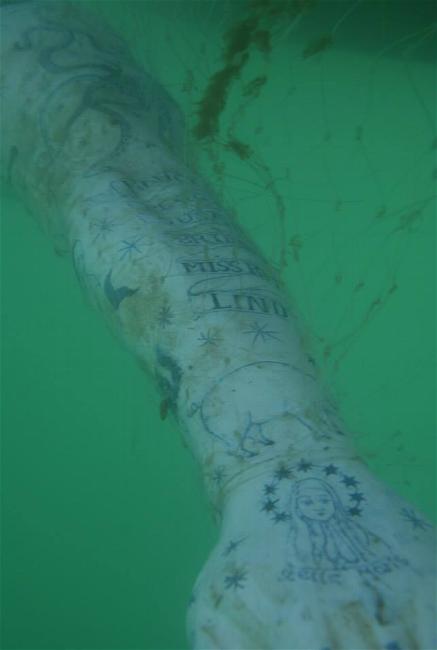
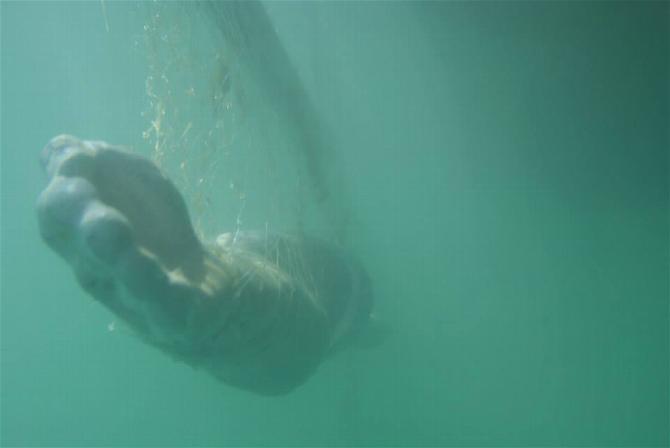

A poor local diver phoned up the owner's of the beach in a panic believing he had come across a real body. I am sorry I scared him but it is perfect for the project!
THE INSTALLATION IN PROGRESS
I have created an 'abyss' reliquary. Using a still from a film of the most famous wreck of all; the Titanic, I have used Microsoft paint to isolate a pixel colour and print it so it can be scanned by the Dulux colour machine and now I have my very own 'SHADES OF ABYSS' as I call it. The colour is actually a very elegant dark navy. I have painted the entire small room that the arms will go in with it. If the arms are gone it makes a great space to project the film of their sinking.
I don't know if the arms in the sea will still be there on the morning of the 23rd of August, the possibility of loss has always been an important element of the project. If they are gone I will project the short looped film of the sinking.
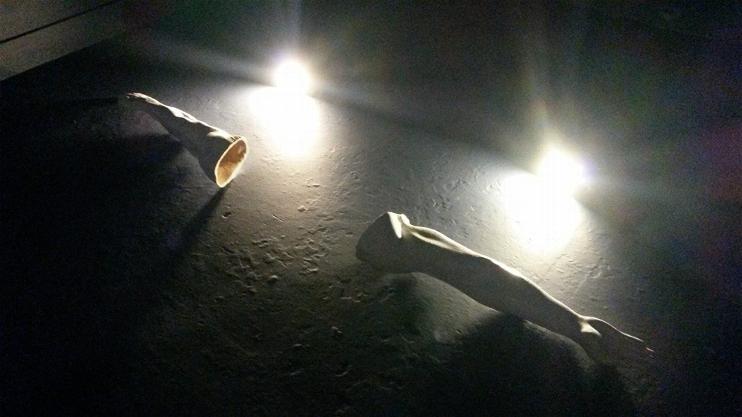
TEST ARMS IN THE ABYSS
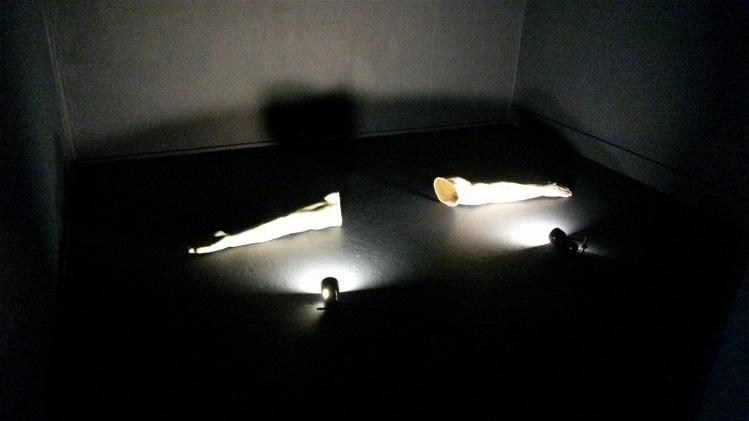
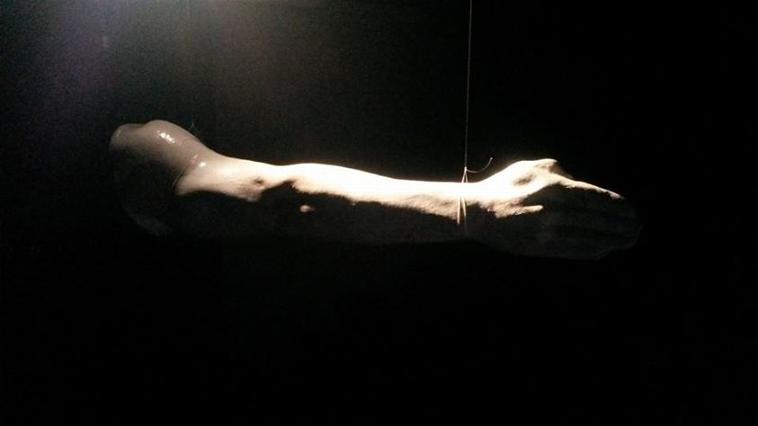
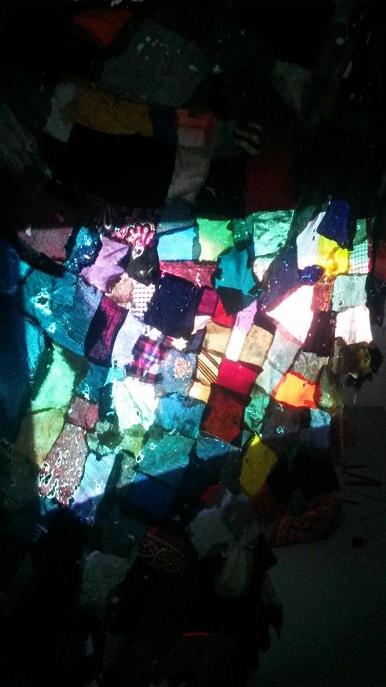
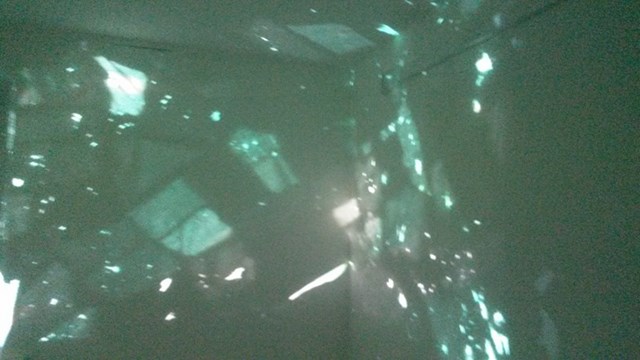
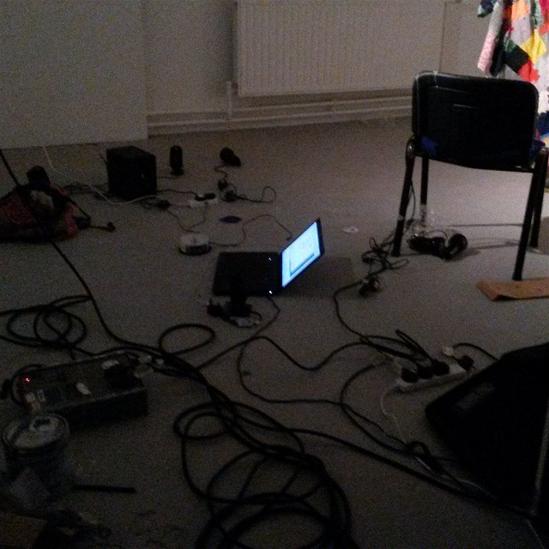
AND THEY ARE UP!
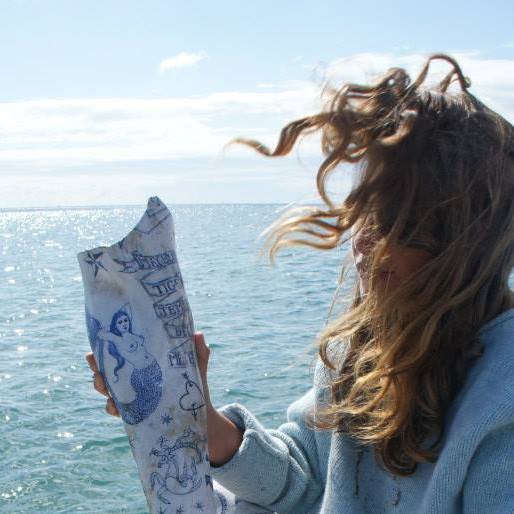
BROKEN BUT ALL THE BETTER FOR IT.
I was sad to see some of my favourite parts not in the nets but it fits perfectly and poetically with the project. Originally inspired by the china found on the sea bed, decorative and dainty yet more resilient than the boats and bones of men. The thought of the fragments lying on the sea bed or being washed ashore in years to come and intriguing whoever finds them thrills me.
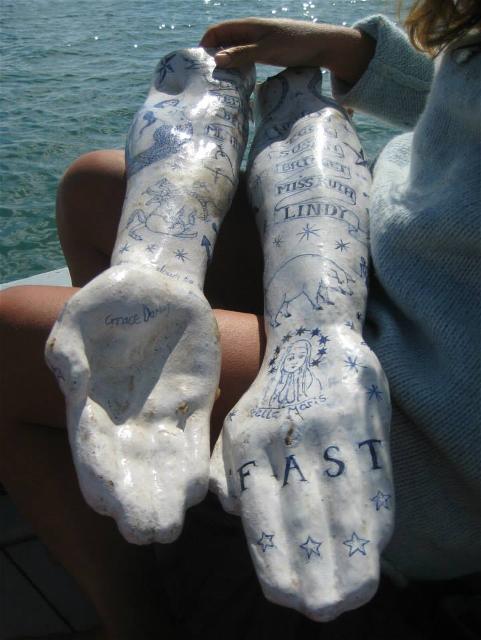
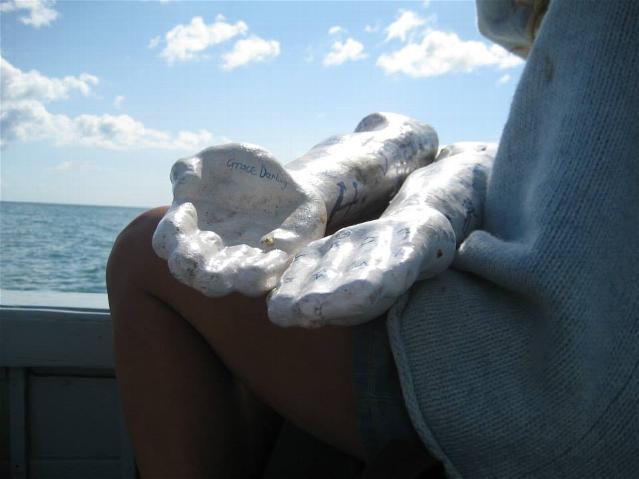
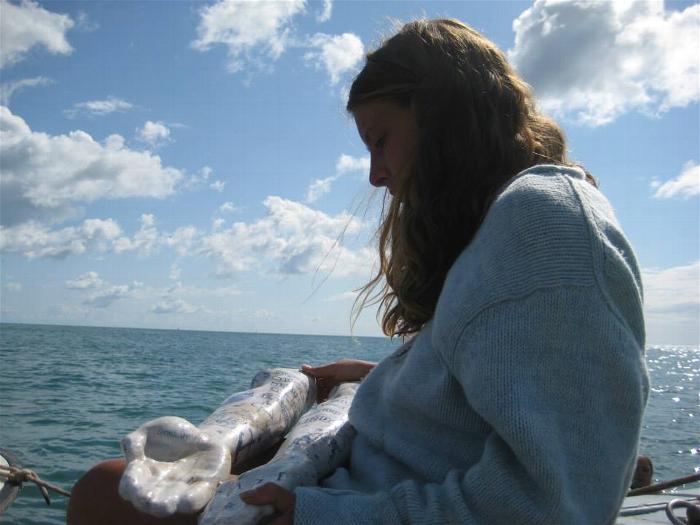
THE ARMS ARE SERENADED BY THE FABULOUS NAUTI BUOYS IN THE GREEN DRAGON PUB
I recorded the songs and banter on my mobile phone, the next day I played the music from my phone to another underwater (both phones in waterproof cases).
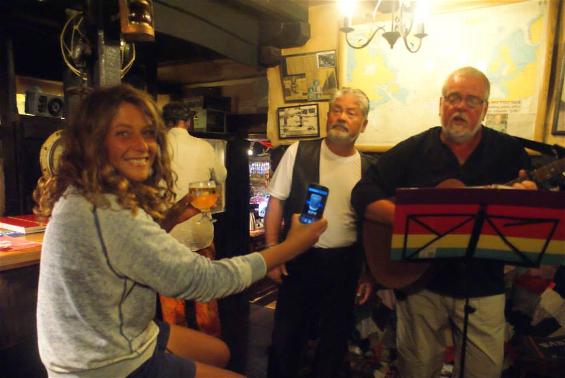
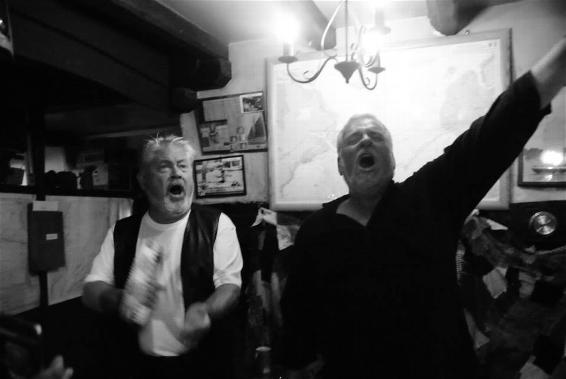
LINK TO NAUTI BUOYS WEBISTE
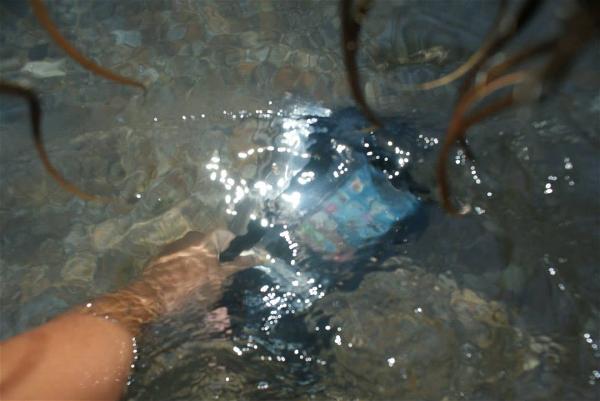
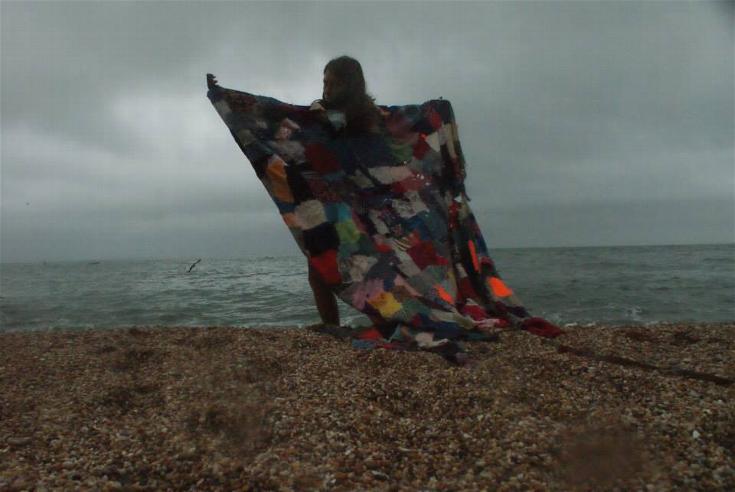
LOWLANDS SHANTY AS SUNG IN THE FILM
I dreamed a dream the other night,
Lowlands, lowlands away, my John,
I dreamed a dream the other night,
My lowlands away.
I dreamed a dream the other night,
Lowlands, lowlands away, my John,
I dreamed a dream the other night,
Lowlands away.
I dreamed I saw my own true love,
Lowlands, lowlands away, my John,
I dreamed I saw my own true love,
My lowlands away.
I dreamed my love came standing by,
Lowlands, lowlands away, my John,
Came standing close to my bedside,
Lowlands away.
He was green and wet with weeds so cold,
Lowlands, lowlands away, my John,
He was green and wet with weeds so cold,
My lowlands away.
He's drowning in the lowlands sea,
Lowlands, lowlands away, my John,
And evermore coming back to me,
Lowlands away.
I'll cut away my bonny hair,
Lowlands, lowlands away, my John,
For no other man shall think me fair,
My lowlands away.
He's drowning in the lowlands low,
Lowlands, lowlands away, my John,
And evermore shall I him know,
Lowlands away.
For my love lies drowned in the windy lowlands,
Lowlands, lowlands away, my John,
For my love lies drowned in the windy lowlands,
My lowlands away.
LYRICS FOR MALE VERSION OF SHANTY ON VIDEO
Lowlands Away
I dreamed a dream the other night,
Lowlands, Lowlands, away, my John.
I dreamed a dream the other night,
Lowlands away.
I dreamed my love came in my sleep,
Lowlands, Lowlands, away, my John.
Her cheeks were wet; her eyes did weep.
Lowlands away.
She came to me as my best bride
Lowlands, Lowlands, away, my John.
All dressed in white like some fair bride.
Lowlands away.
And bravely in her bosom fair,
Lowlands, Lowlands, away, my John.
A red, red rose, did my love wear.
Lowlands away.
No sound she made - no word she said,
Lowlands, Lowlands, away, my John.
And then I knew my love was dead.
Lowlands away.
I bound her wreath around my head
Lowlands, Lowlands, away, my John.
For now I knew my love was dead
Lowlands away.
And then awoke to hear the cry,
Lowlands, Lowlands, away, my John.
"Oh, watch on deck, oh, watch ahoy!"
Lowlands away.